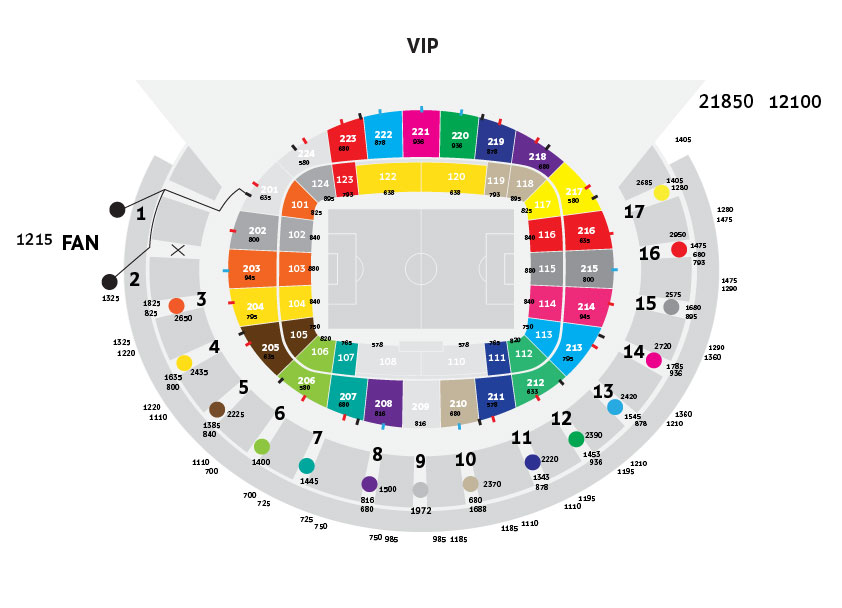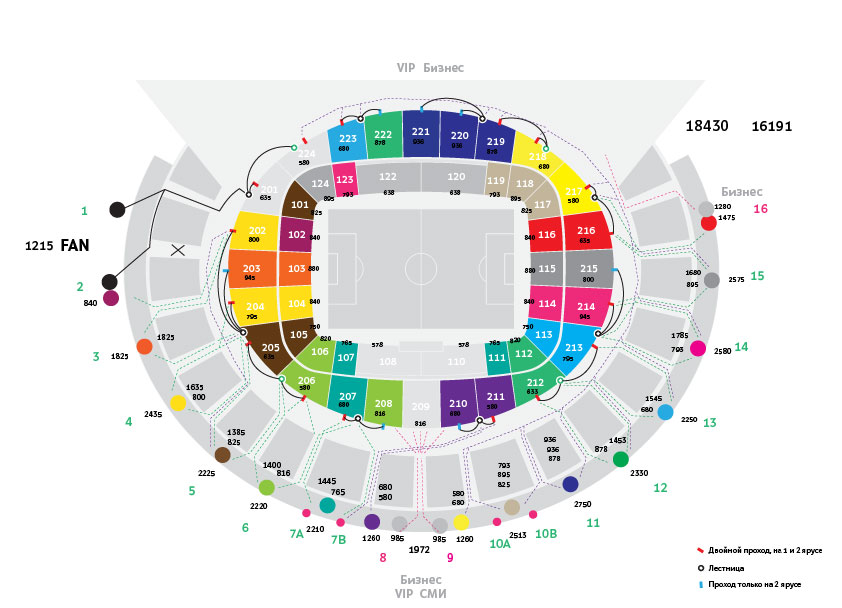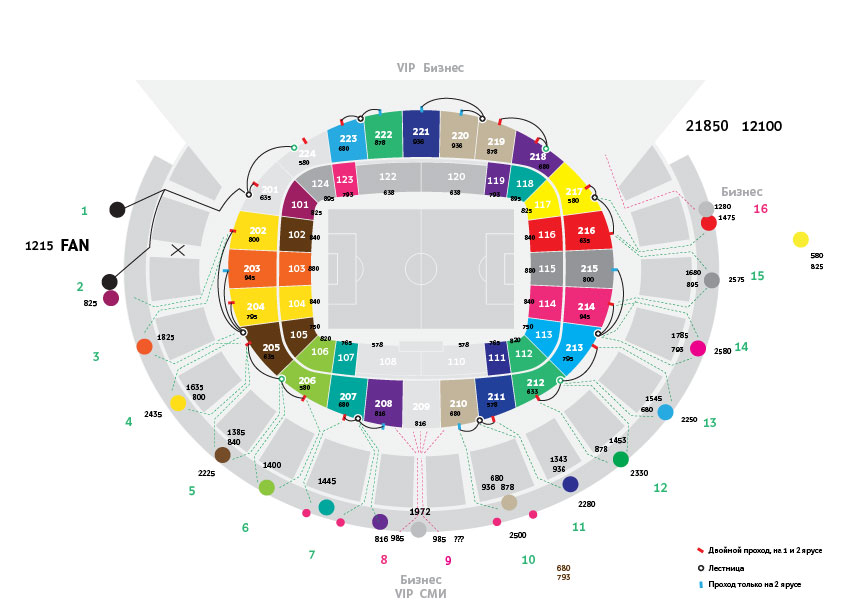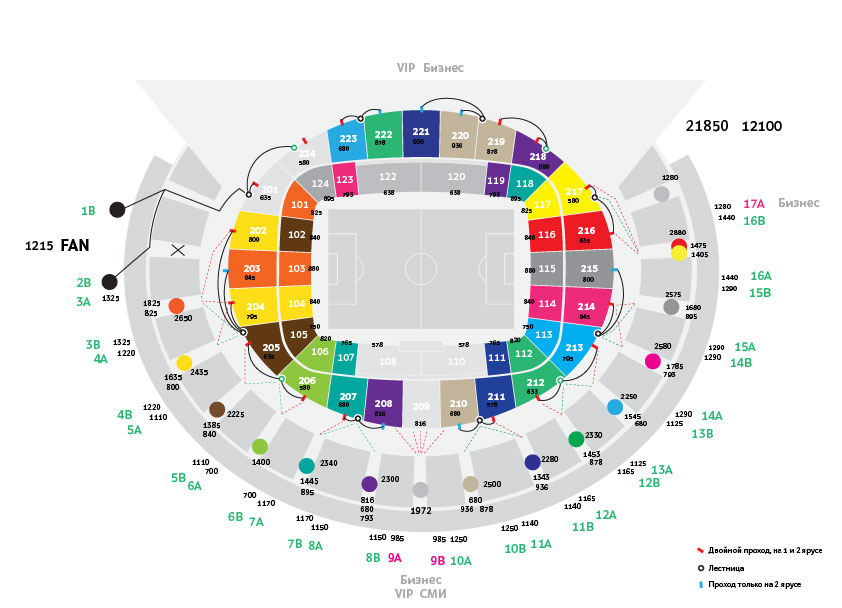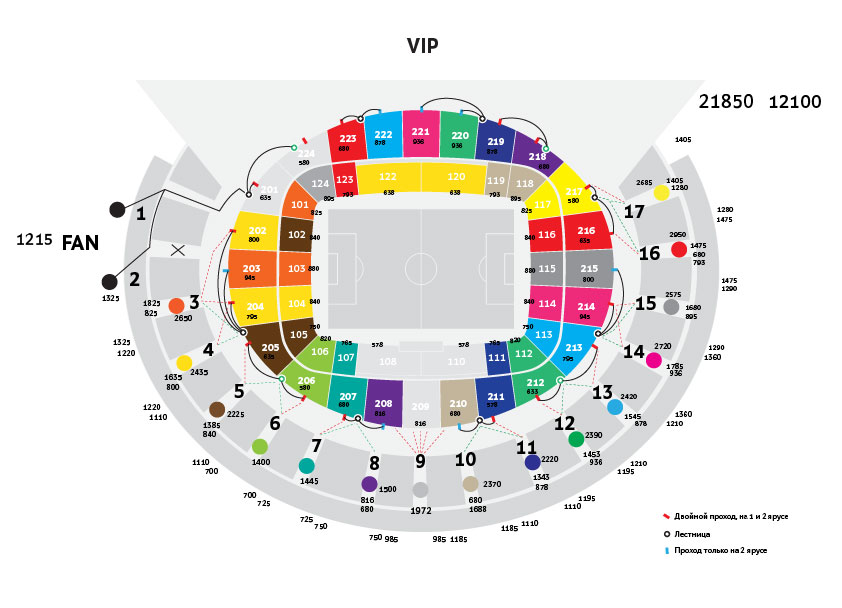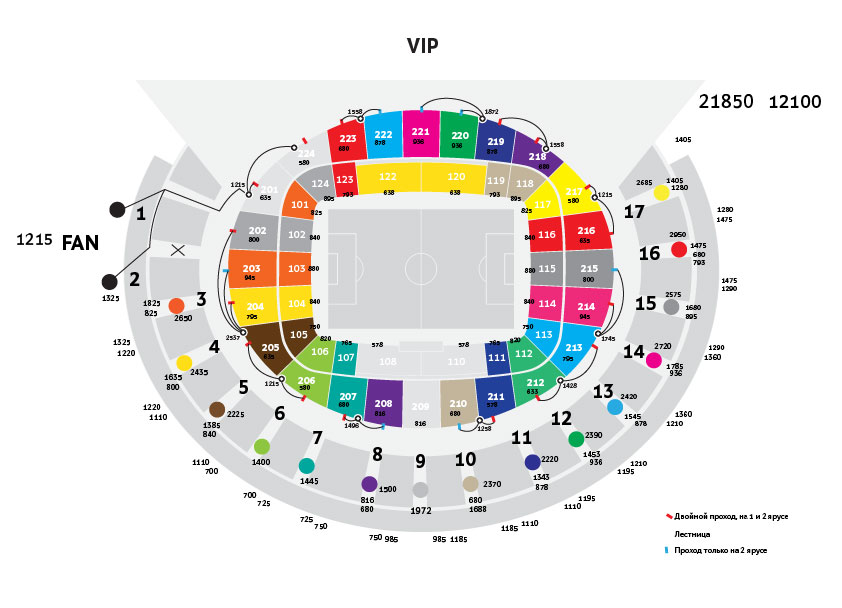We start by visiting the stadium. Talking to the client, getting inspired by the project and the client’s bold plans. The client emphasizes once again that the navigation system should be gentle on the architecture.
Examining the stadium, talking to the architects and construction workers. Asking many questions, gathering information, taking note of all the interesting features of the stadium that make it so unique.
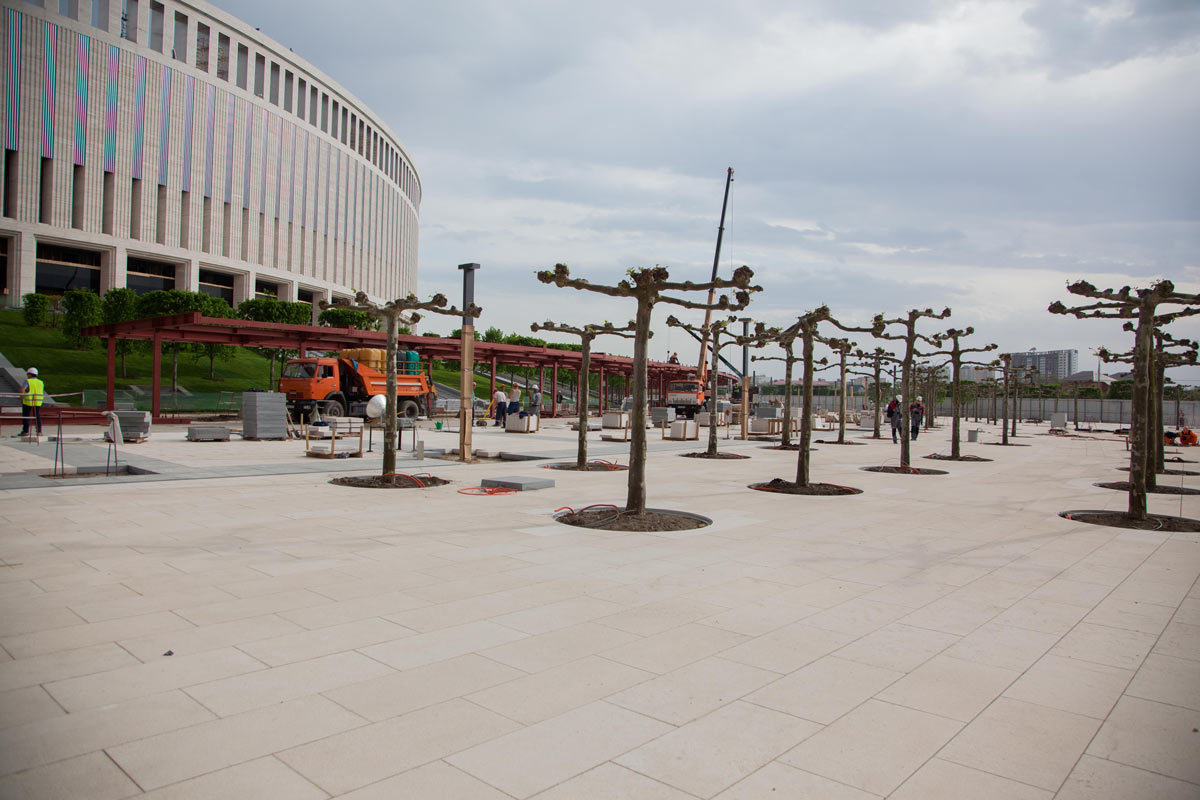
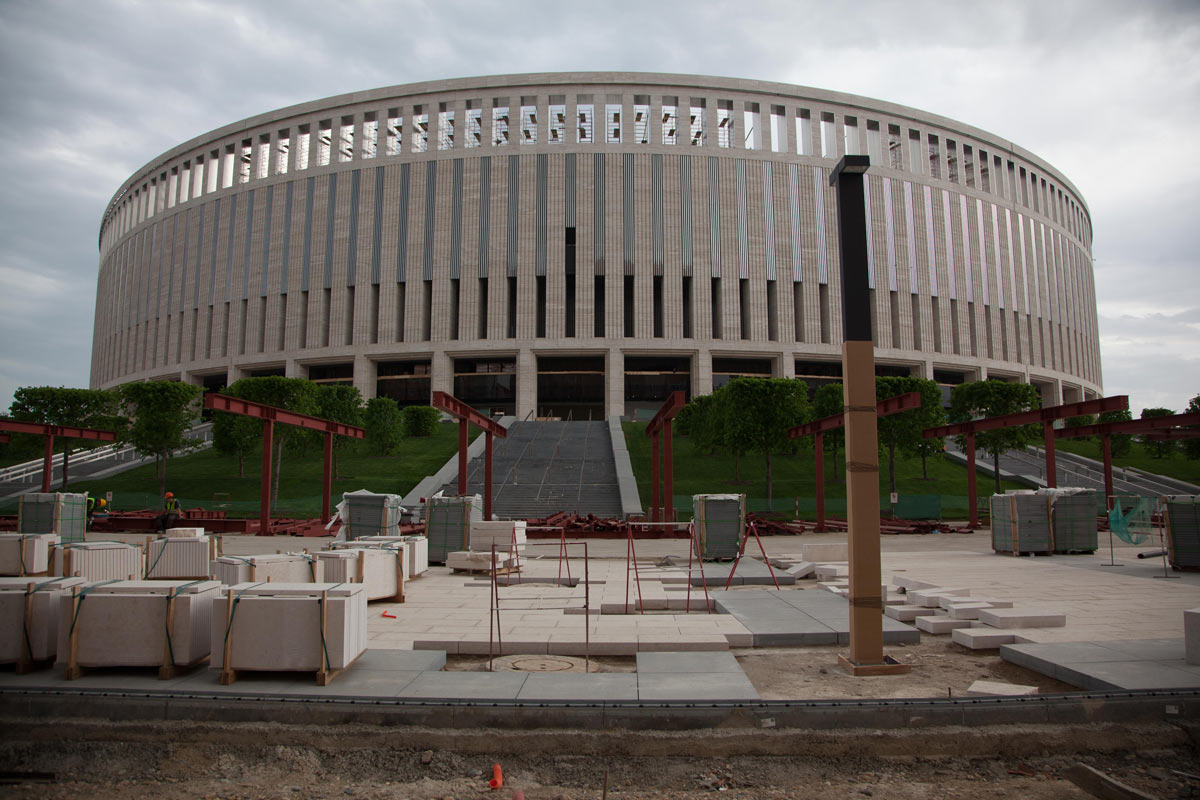
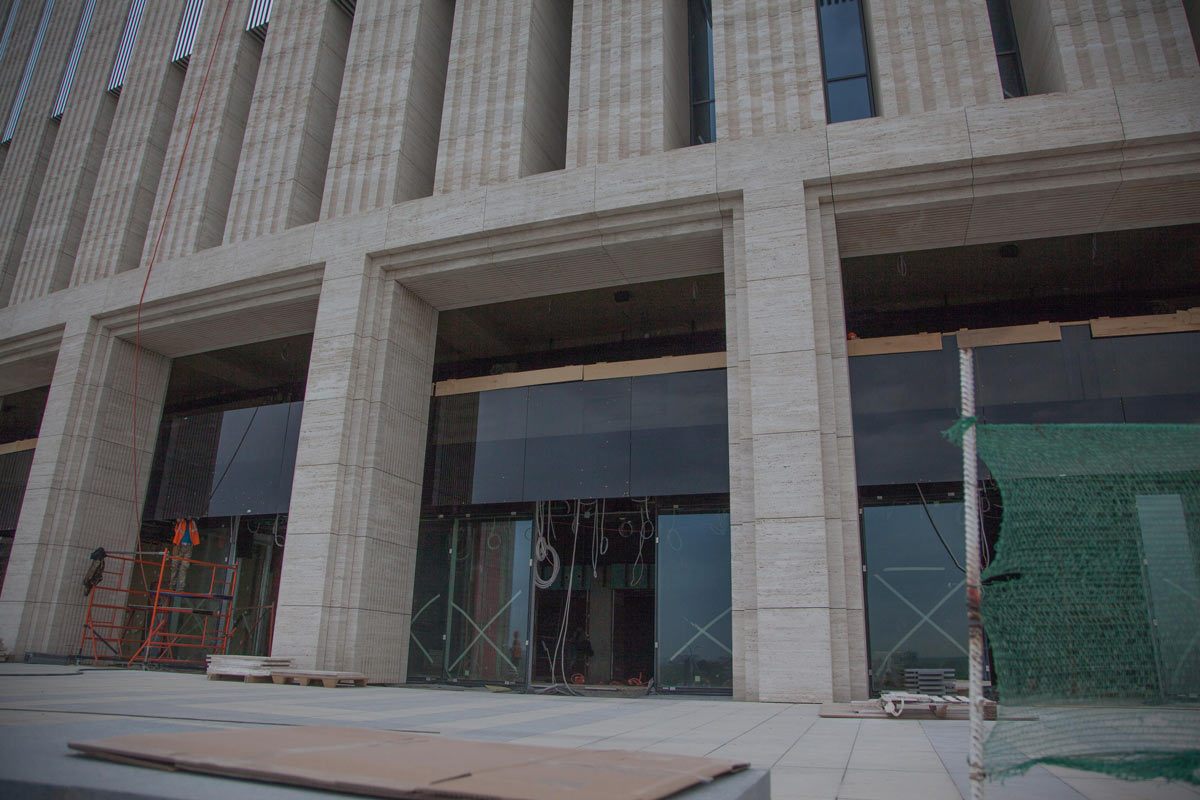
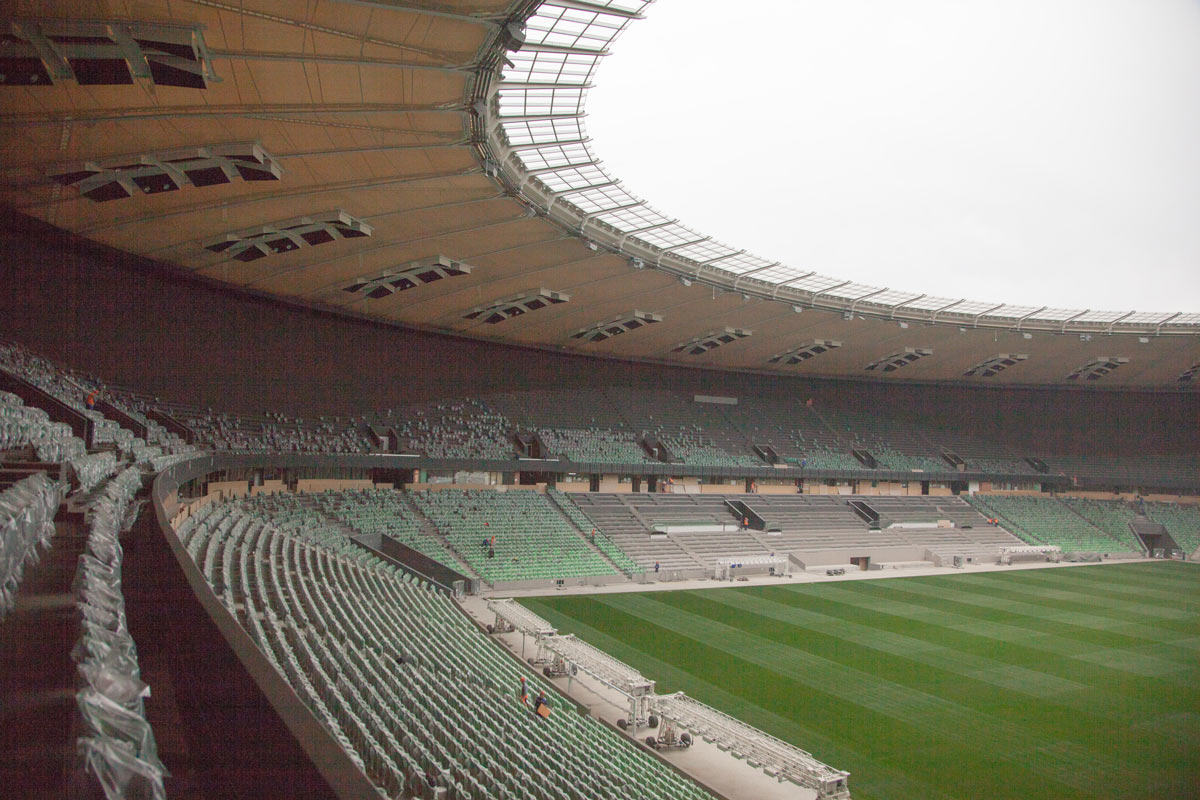
From the start, the art director suggests to implement navigation with the help of projectors. This would allow enabling or disabling the navigation by turning them on or off. Starting to explore this idea and thinking about alternative designs for signs that will not ruin the stadium appearance.
Shadow signs.
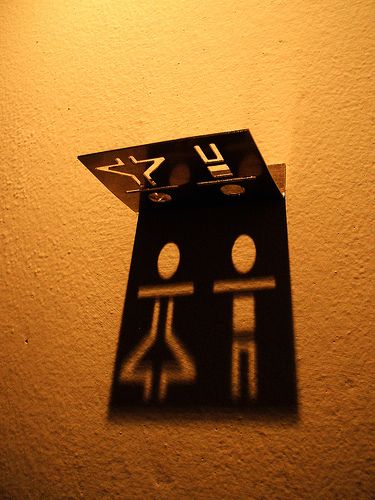
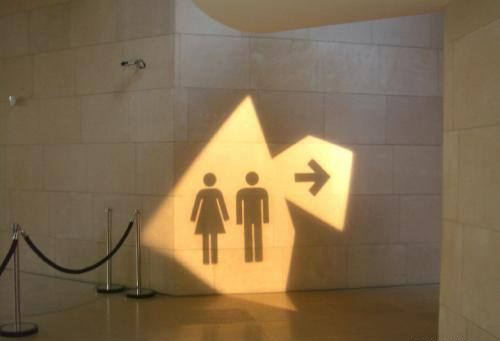
Acrylite.

Light-reflecting materials.
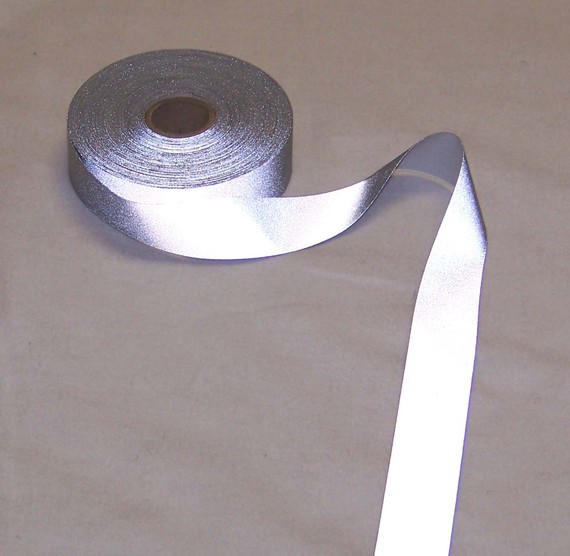
The technology we used in Katafotus reflective badges.
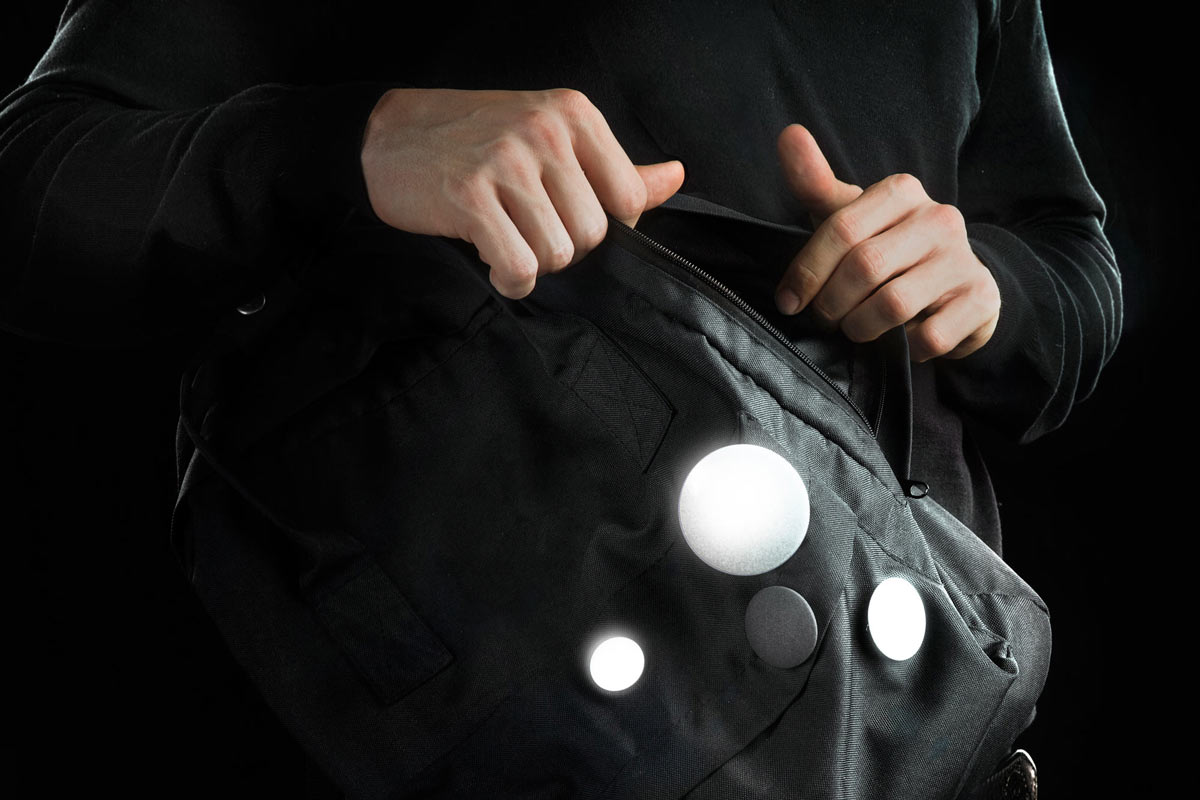
Light-reflecting sprays.
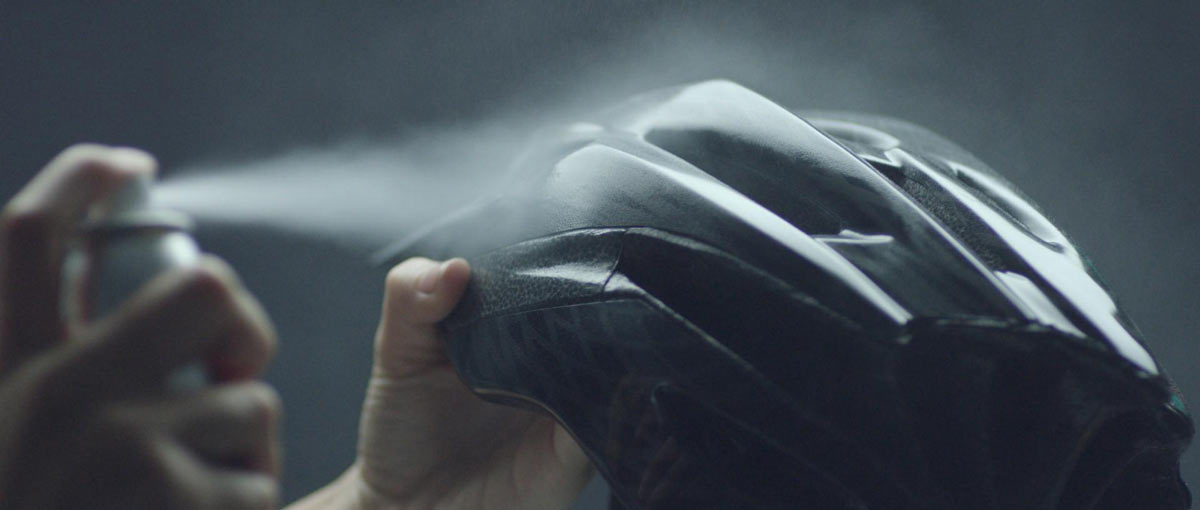
UV lighting.
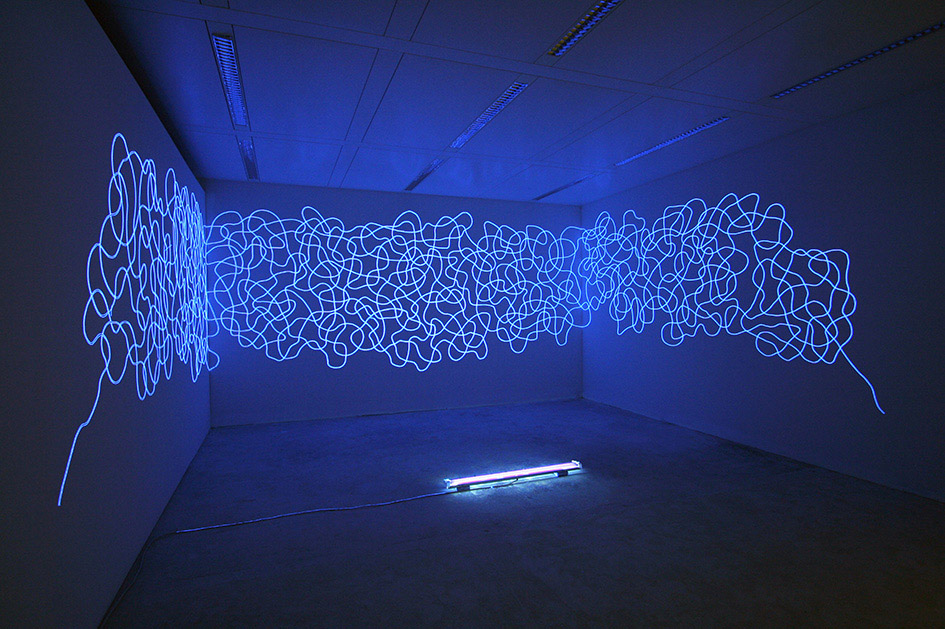
Electrochromic glass.
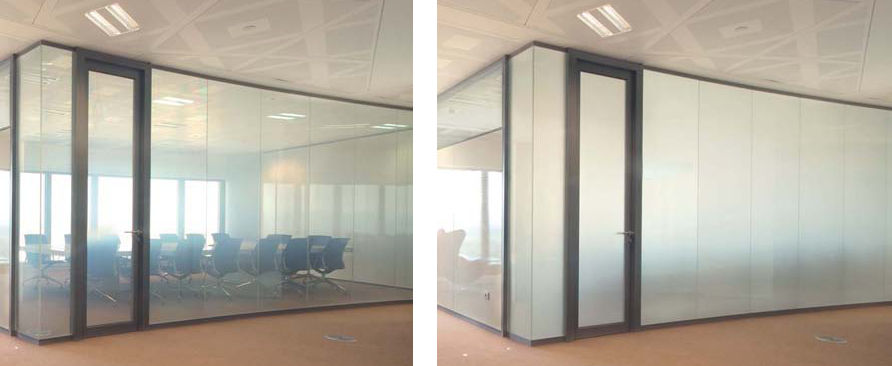
No, all of these technologies have drawbacks that prevent us from using them.
Spectators and routes
While the search for the sign technology is under way, we start developing the routing part of the navigation.
The stadium was designed by Germans, so on all blueprints it looks stereotypically correct and pedantic. We begin by searching for potential problems in spectator logistics. The main problem is that it’s impossible to get to east stand sectors directly, as the stadium has stairs only on three sides. This means that the exits closest to the east stand will be overloaded. What’s worse, the client wants to free them up to make them available for business spectators and guest fans.
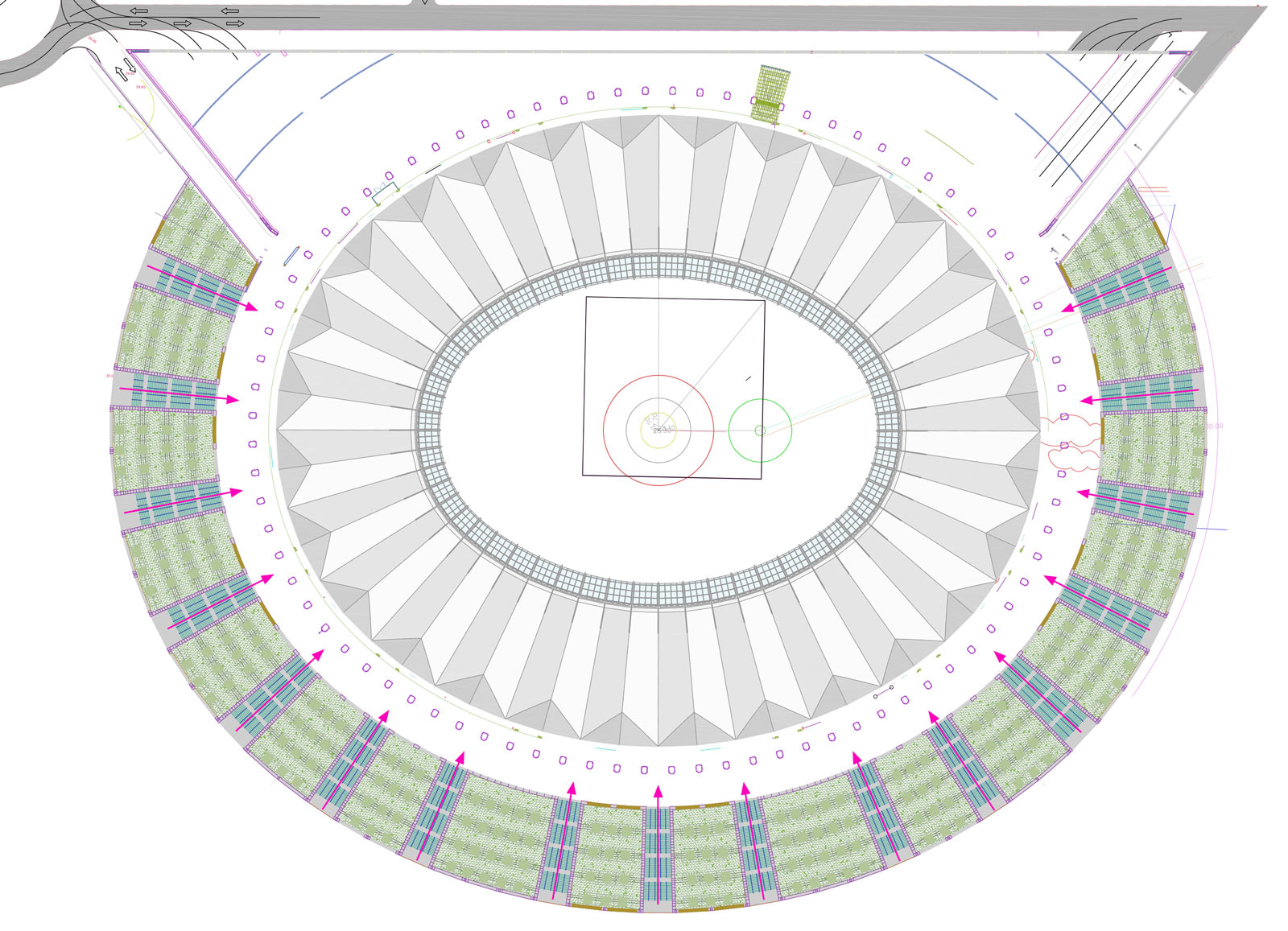
Thinking of a way to distribute various categories of spectators, athletes, stadium workers and the press. Writing down a list of user groups:
regular fans;
business sectors;
VIP spectators;
guest fans;
car owners;
stadium management;
service workers;
athletes;
press;
delegates and judges.
Looking at various means for people to get to the stadium and their possible routes:
by public transport;
on personal cars parked at outside parking lot;
on personal cars parked on one of the streets nearby;
on personal cars parked at inside parking lot;
from nearby areas.
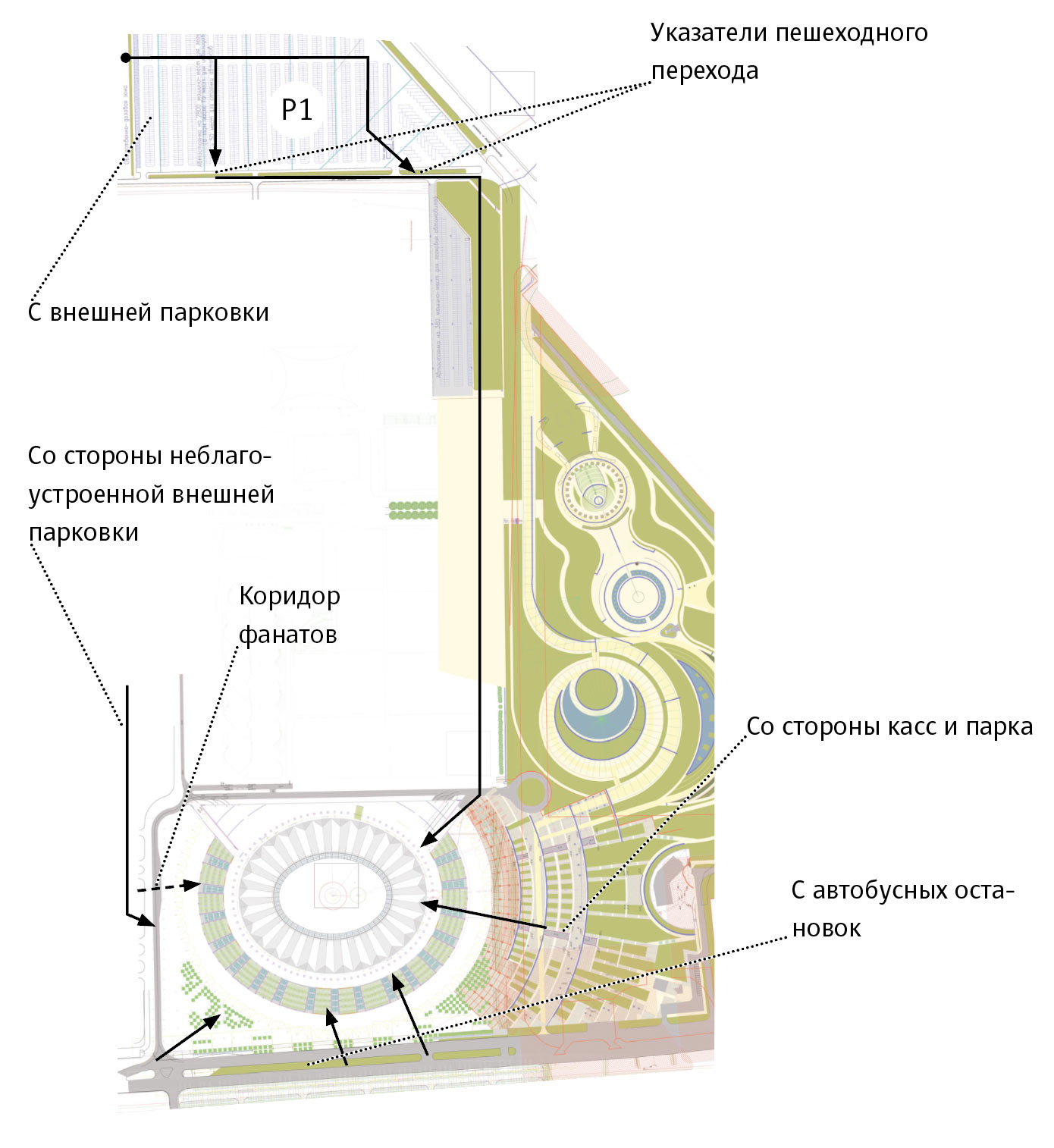
Mixing together different users and routes and getting approximately 30 different scenarios. Drawing and placing signs. First on a diagram.



Then, visually.

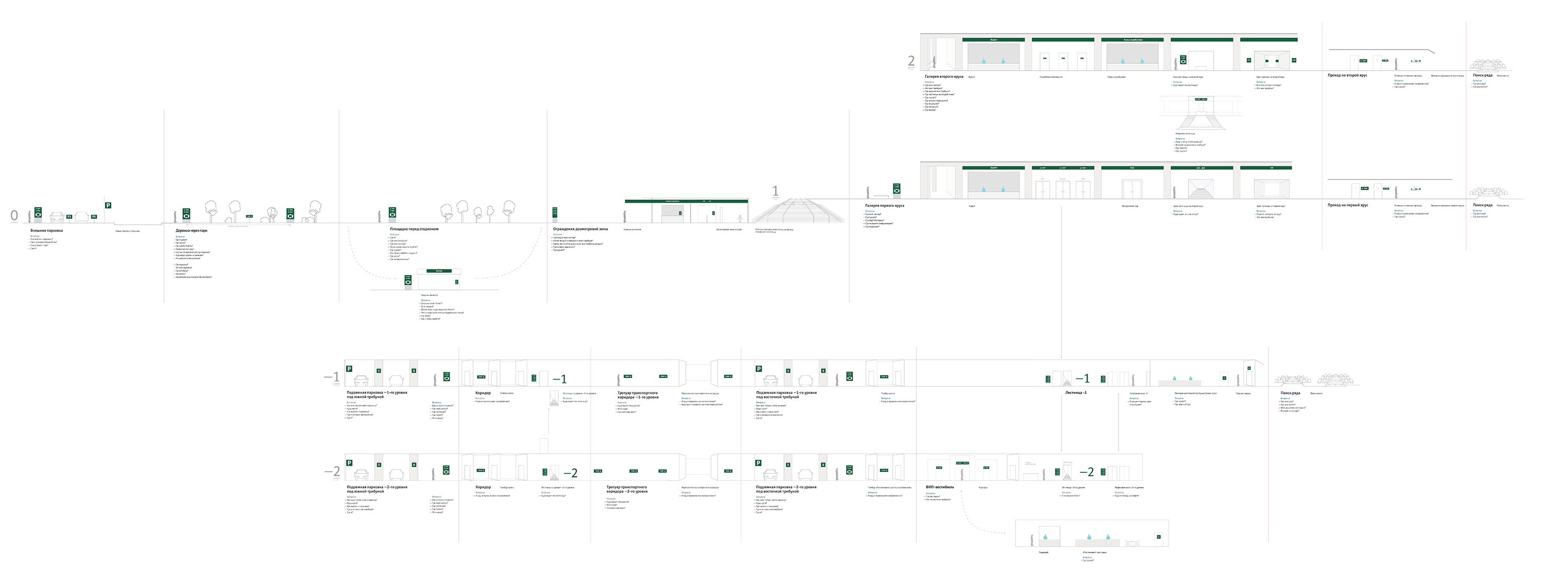

This allows us to see which signs will be needed and where they will have to be placed.
Graphics
Launching another parallel process. Projectors, shadows, UV light or something else, it all has to look nice and be visually clear. Starting the search for graphic solutions.
A few options are born that will have to organically blend in the stadium space. Sketching them roughly to be sure we can later develop them on any media.
Pennants.
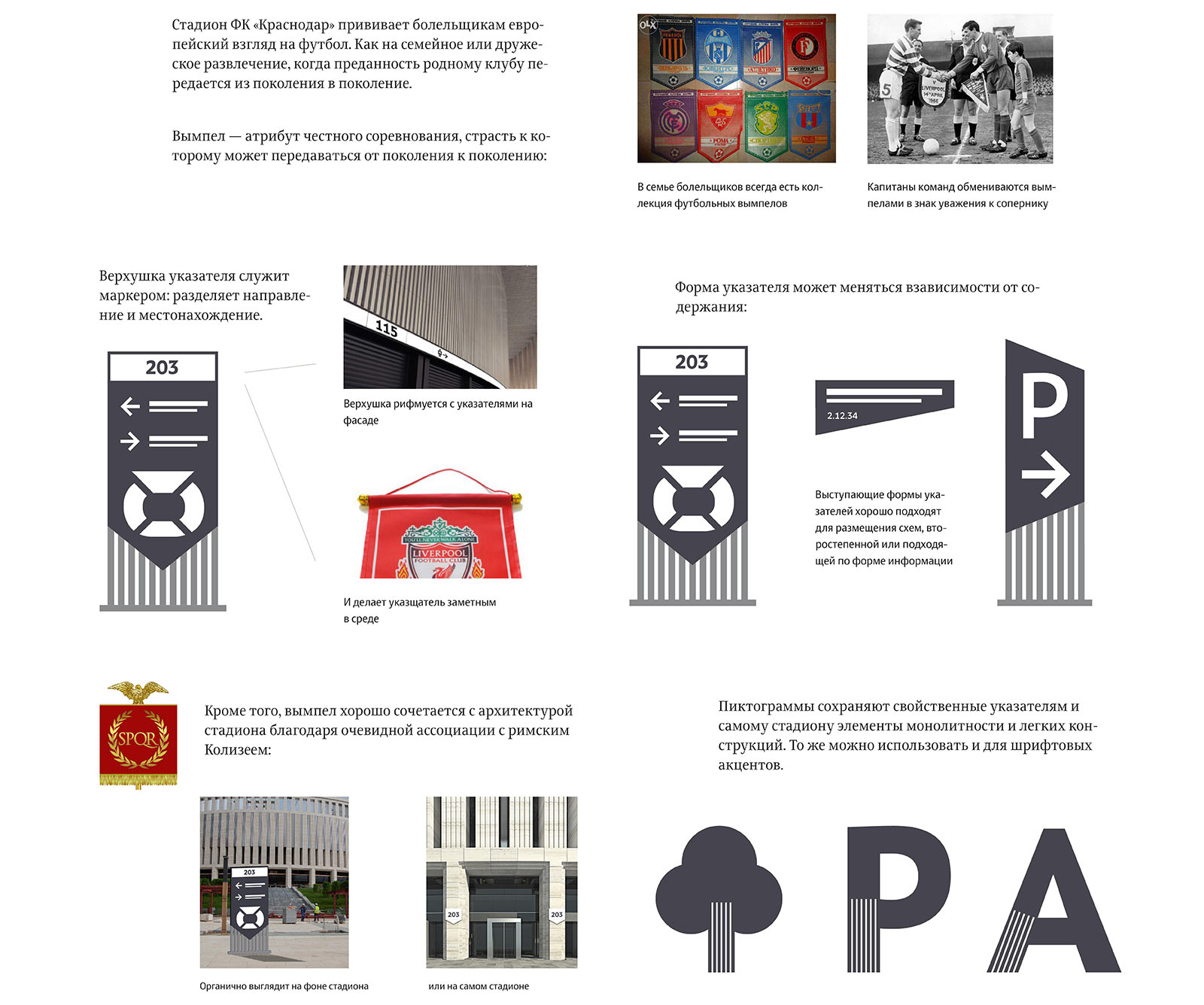
Levels.
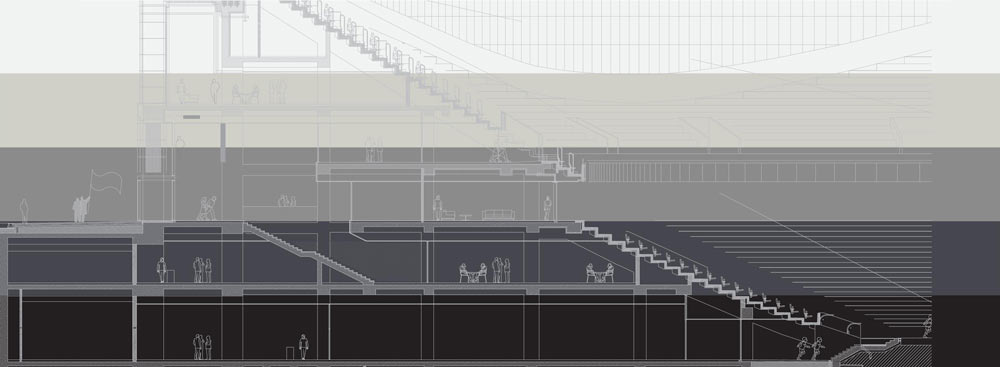


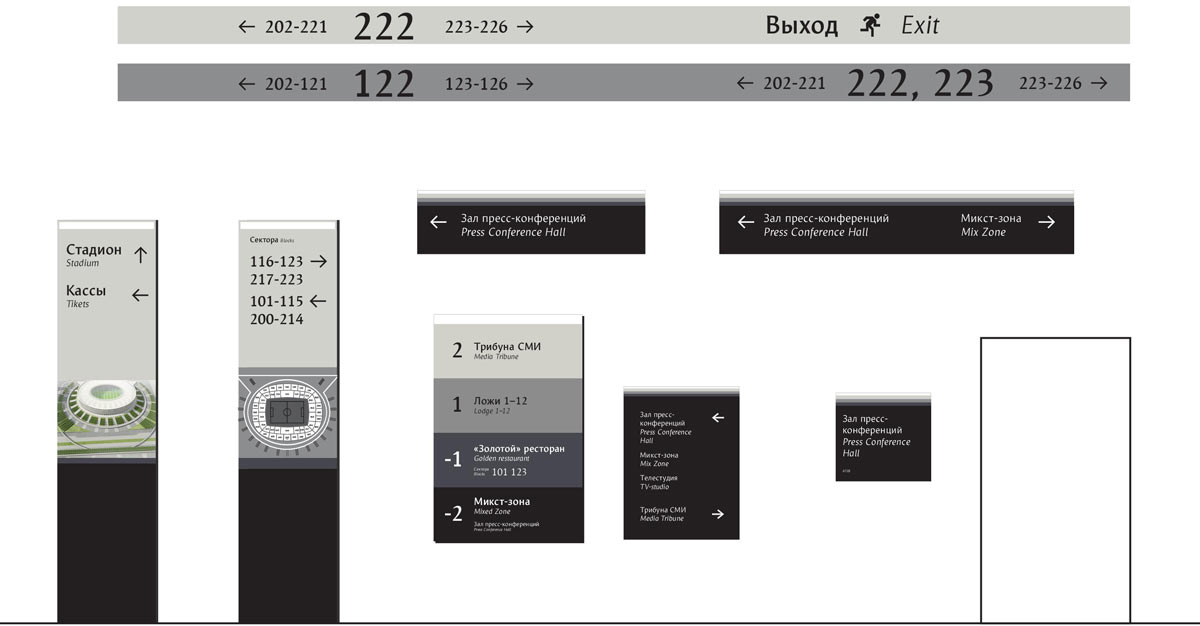
Monolith.
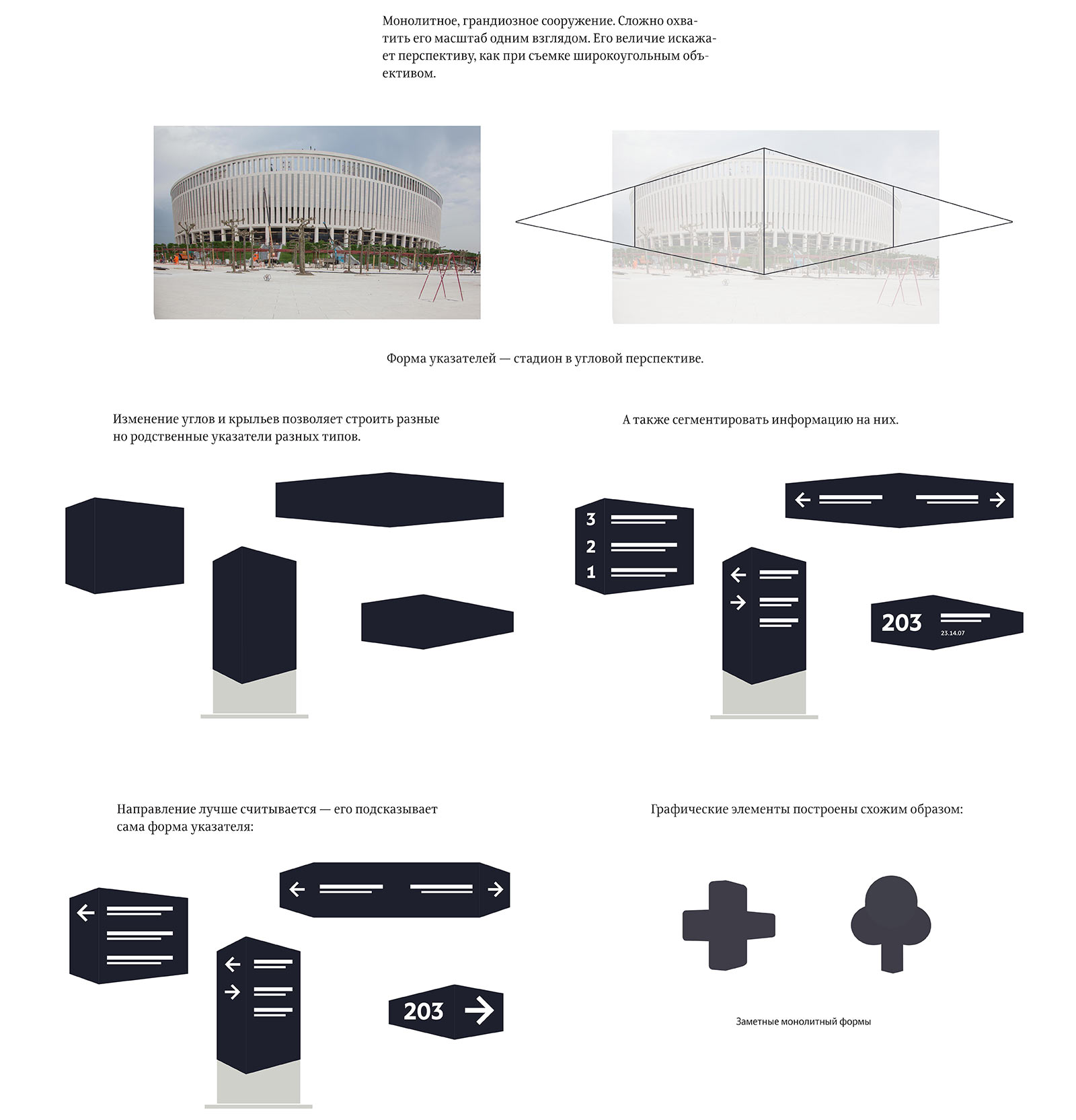
A simple design without excessive meaning.
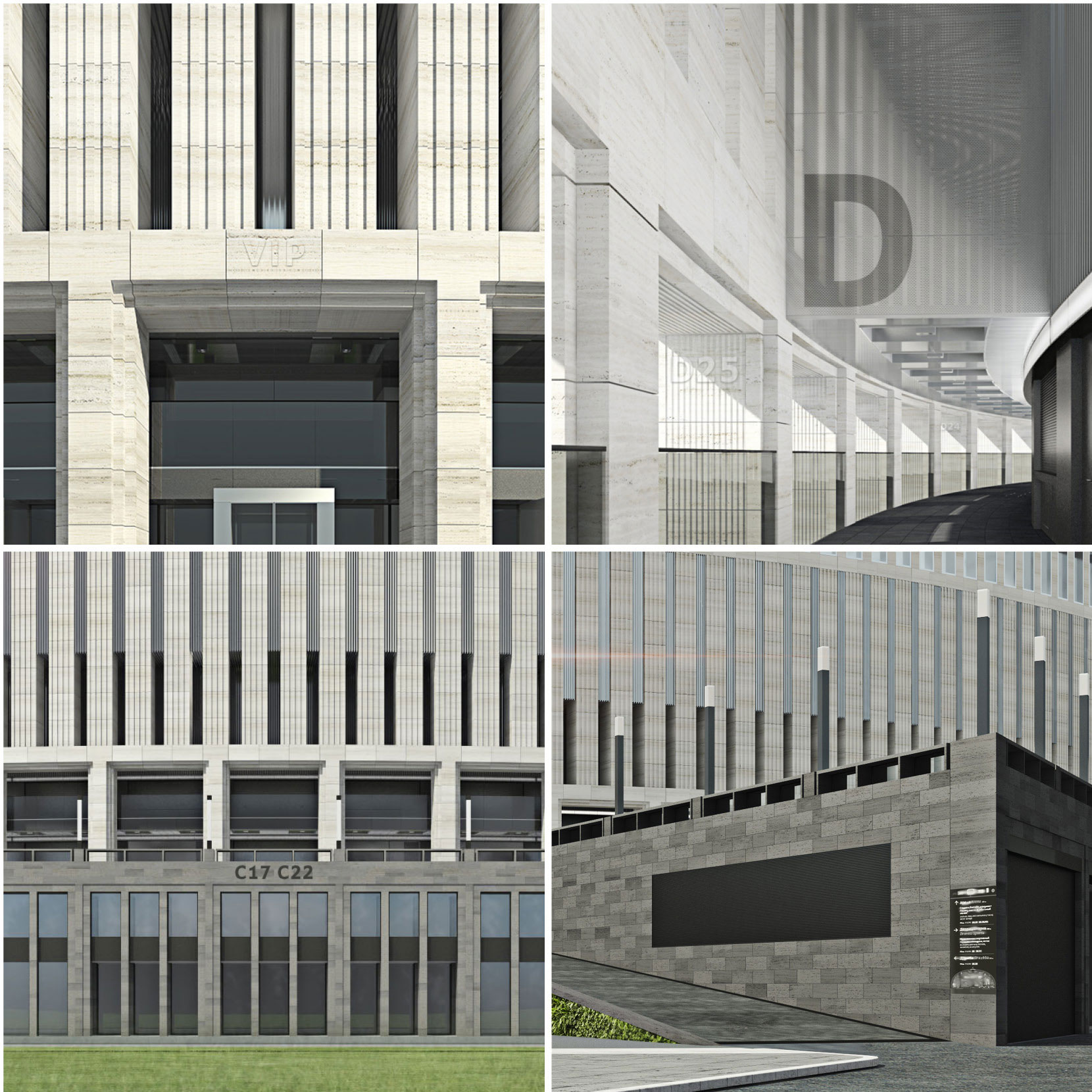
Realizing that it would be difficult to separate flows in security check zones at various levels of attendance. It would be better to use different entrances to sectors based on the attendance of each match. Realizing that we will need a way to show dynamic information to oncoming spectator flows.
Projectors
Exploring the possibility of using projectors. Quickly coming to realize that even the most powerful projectors when used outside are easily dimmed by the sun to the point of being almost unusable.
There are ways to improve it: projector films, light-reflective films, projecting on transparent surfaces from inside, etc.
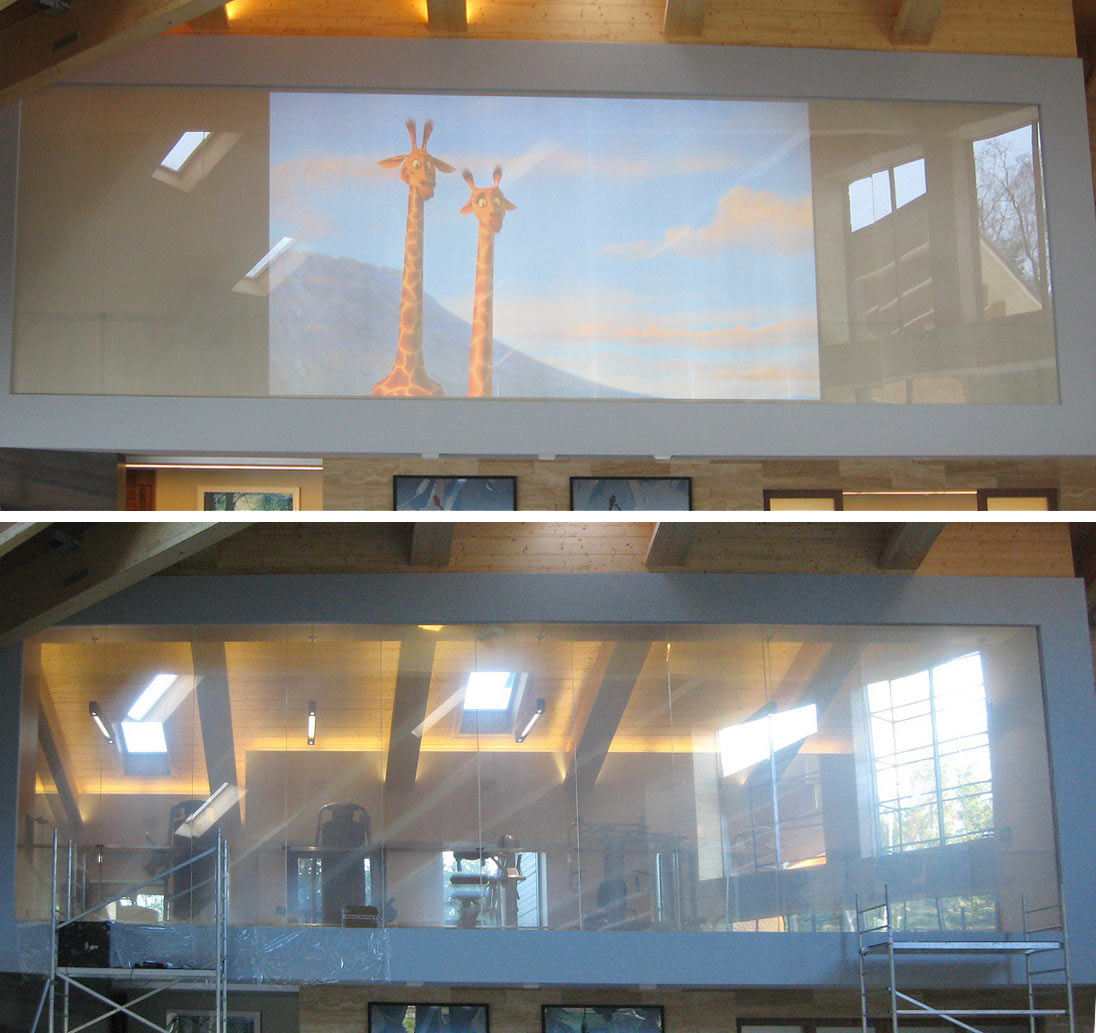
Conclusion: the projectors won’t work for day matches. There are laser projectors but their price to quality ratio is disappointing and they still don’t perform well in sunlight.
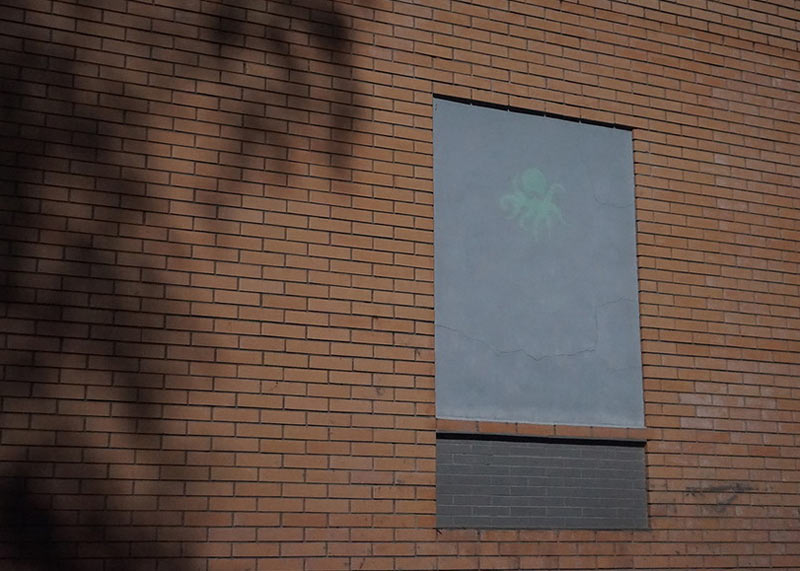
Overall, we decide to abandon the idea to use projectors and other light-based equipment as the main solution but agree to keep them in mind for possible inside uses. Coming up with the light coding idea for the entrances. The color of the stands is permanent but the color of the entrances can be easily changed from one match to the next.
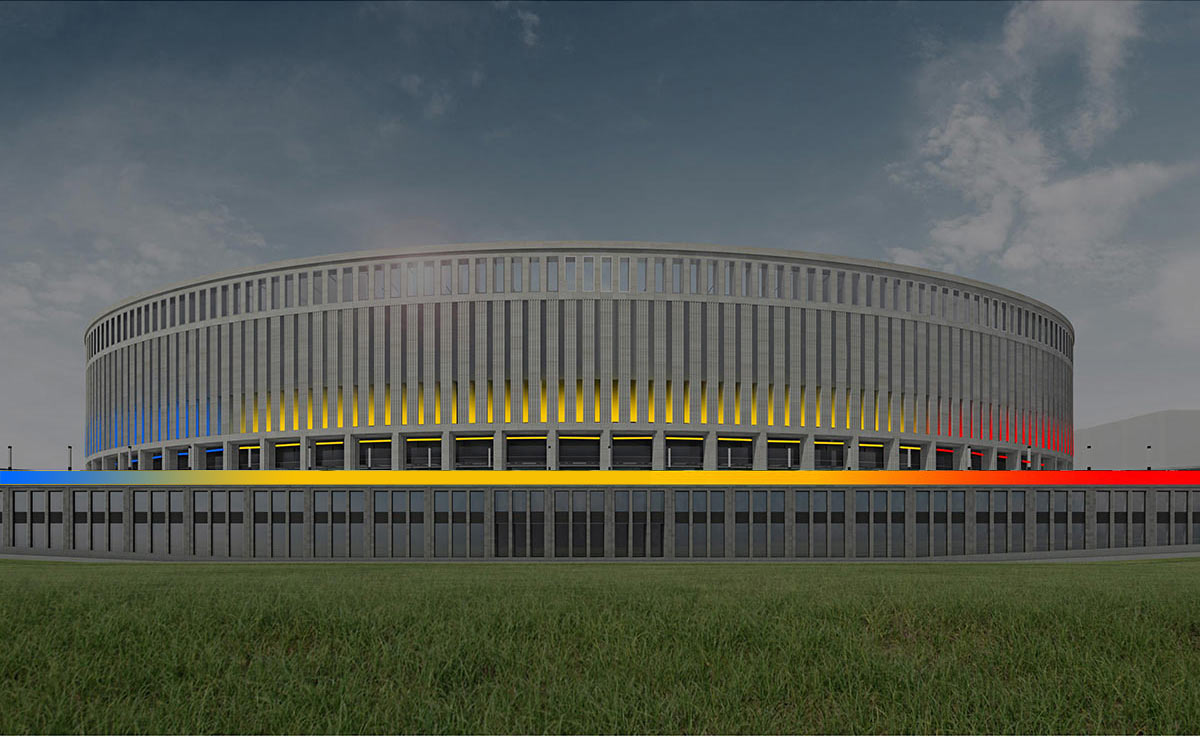
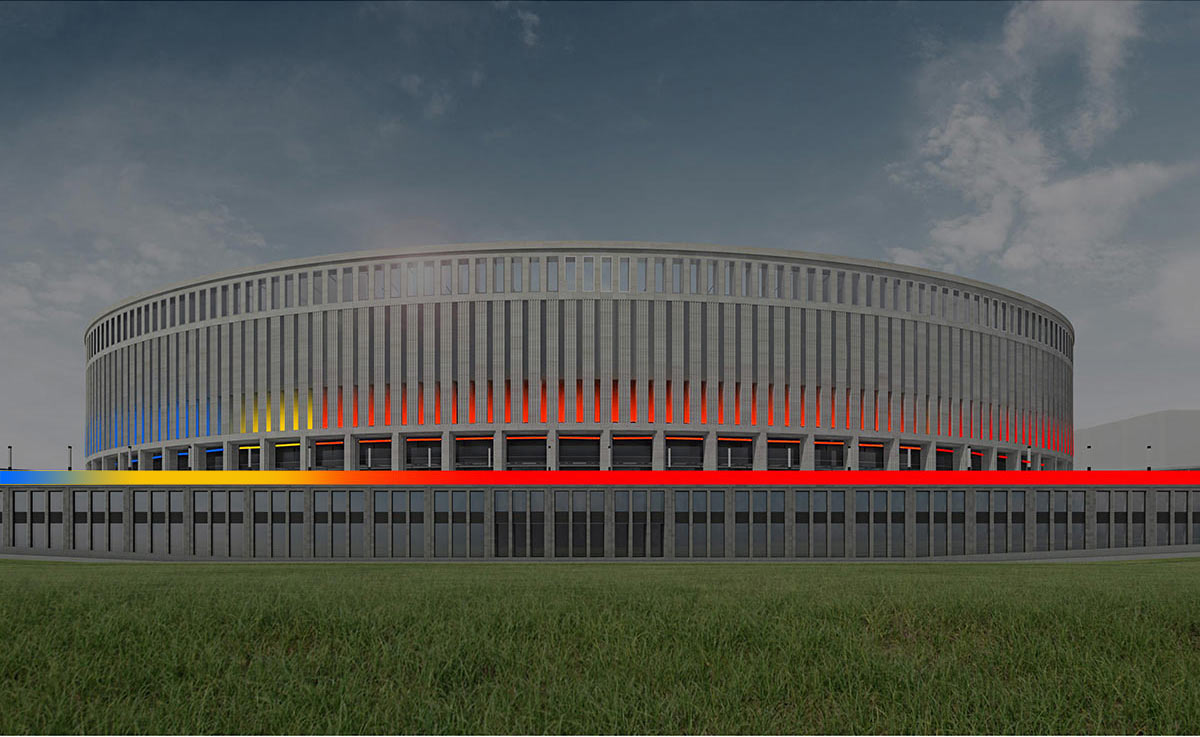
Screens
The art director doesn’t give up on his idea to make all navigation visible only on demand. He suggests to use screens. Thinking. Uncovering a plethora of possibilities screens would give us: dynamic flow management, real-time information, synchronization with the epic circular media screen going around the stands.
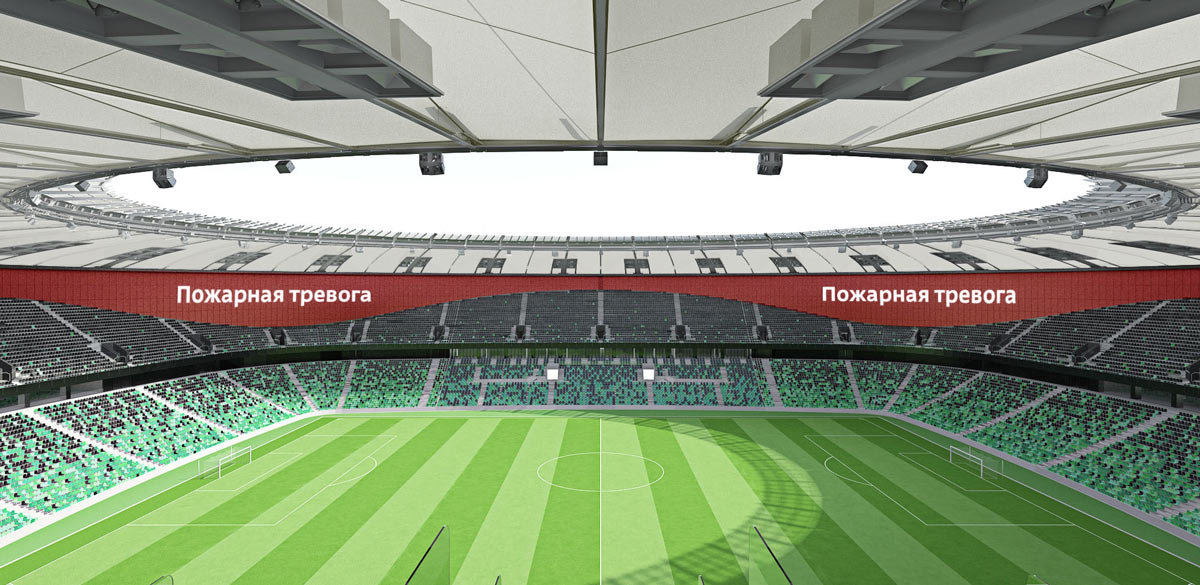
Ultimately we see a whole new world of possibilities and start to generate deeply philosophical ideas about the nature of things. First, we come to a conclusion that a stadium is not simply a building. Nobody just comes to a stadium; it has no meaning without people. A stadium is an event, rather than a place. Which means that the navigation has to be in the dimension of time, not space. It has to change based on the current situation at the stadium and offer the shortest routes.
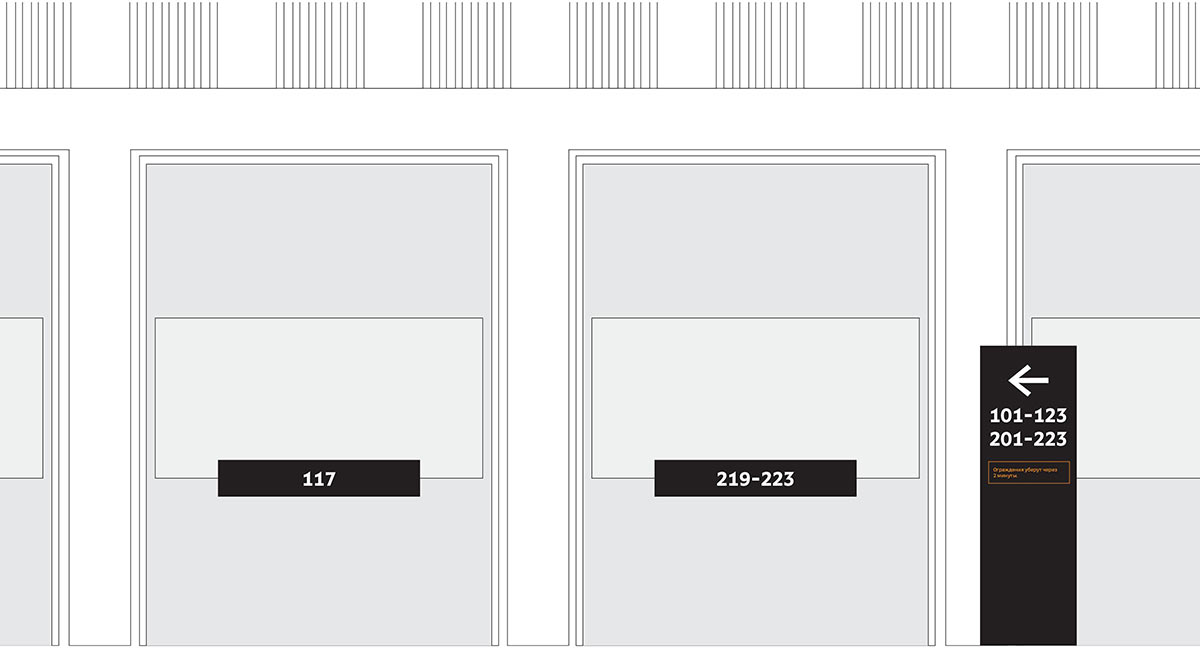

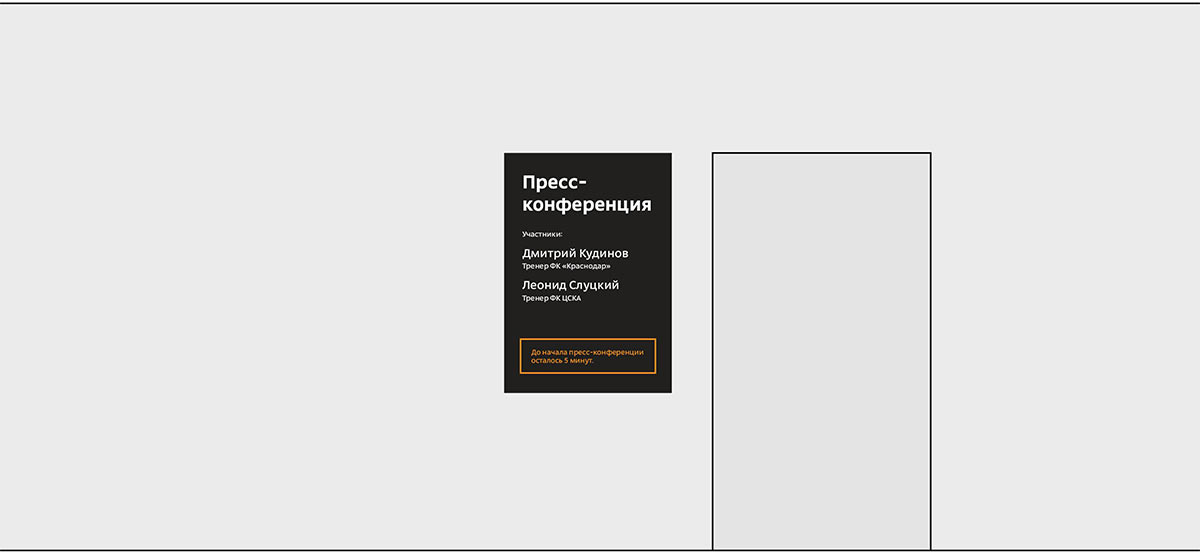
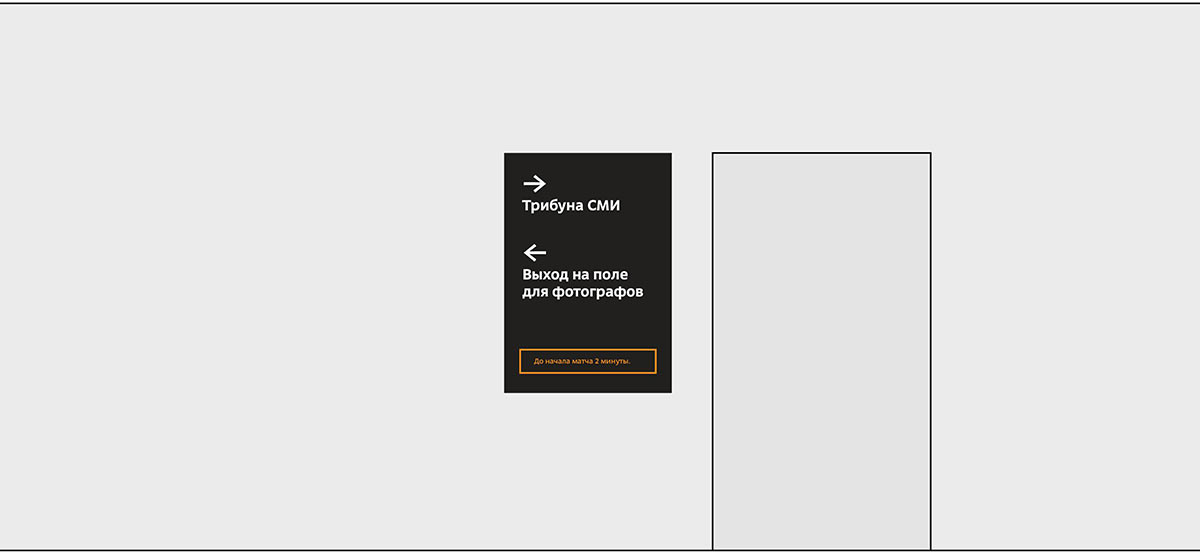
Remembering the old football mantra that at home even the walls help. Statistics seem to corroborate this: teams win twice as often when playing at home. Besides, the client wants the stadium to have a homely atmosphere.
Deciding to install dynamic navigation into walls and make the stadium truly cordial, with walls that help to win and provide all the required information.
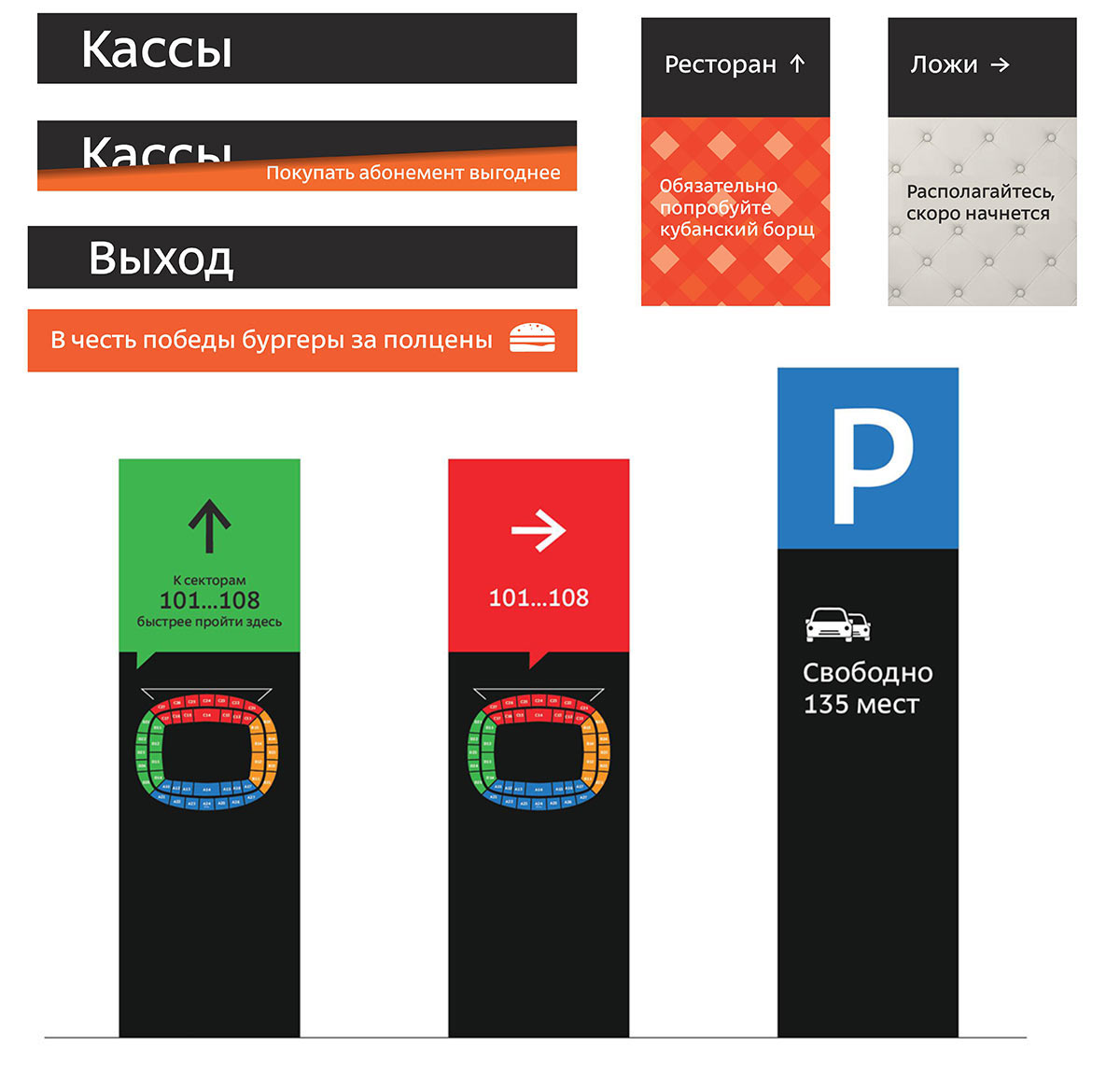
The client says that they like the idea but have doubts as far as implementation is concerned, since the stadium is 90% complete. Installation of such a system would mean some of its parts will have to be dismantled. The client takes time to talk to the architects.
Meanwhile, we go over all the blueprints and look at the stadium in real life to find the locations of all electric outlets, potential places for electronics and ways to hide it. Rejecting the most unreal solutions and creating a document for the client to help make the decision.
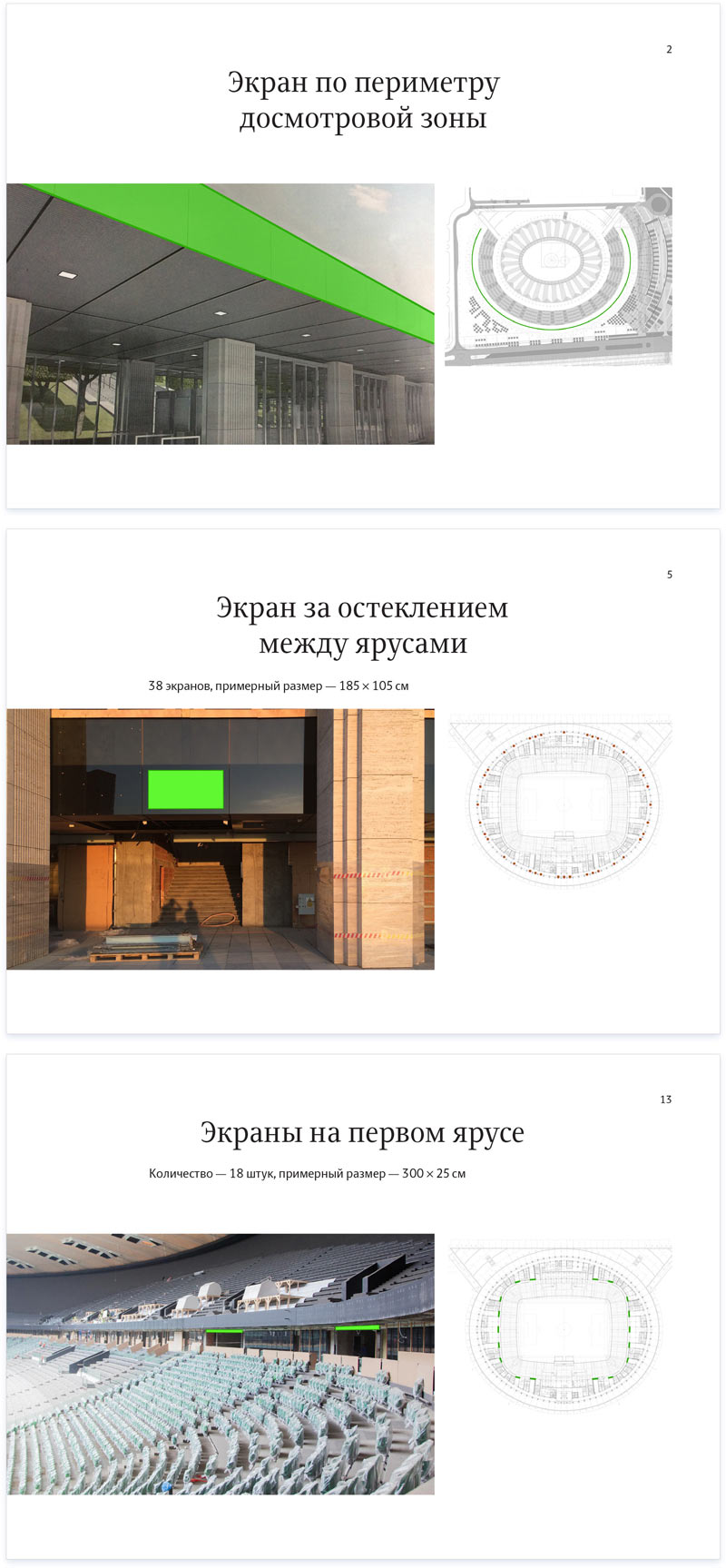
One of the ideas is to hide screens behind tinted glass attached to second level railing. The screens will become invisible when turned off.
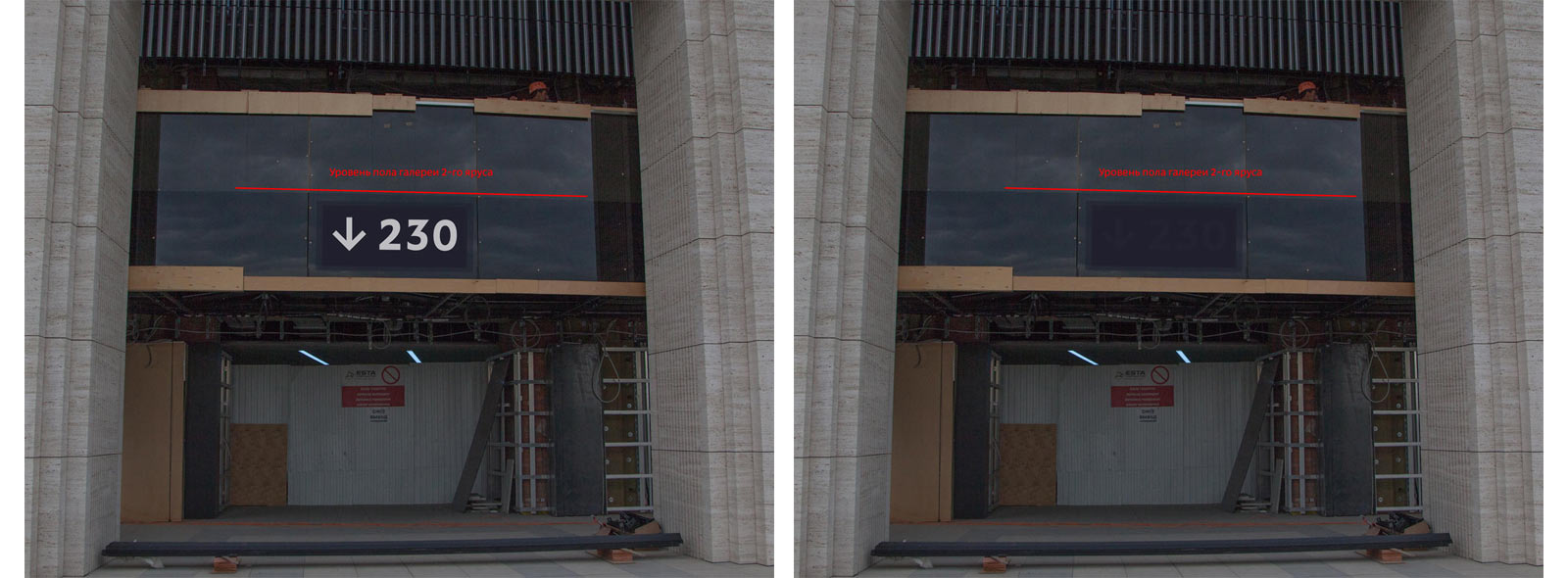
The glass turns out to be opaque, but the idea of hiding signs behind tinted glass will come in handy later.
Simultaneously carrying out tests of the signs, including their style, dimensions and potential placement locations.
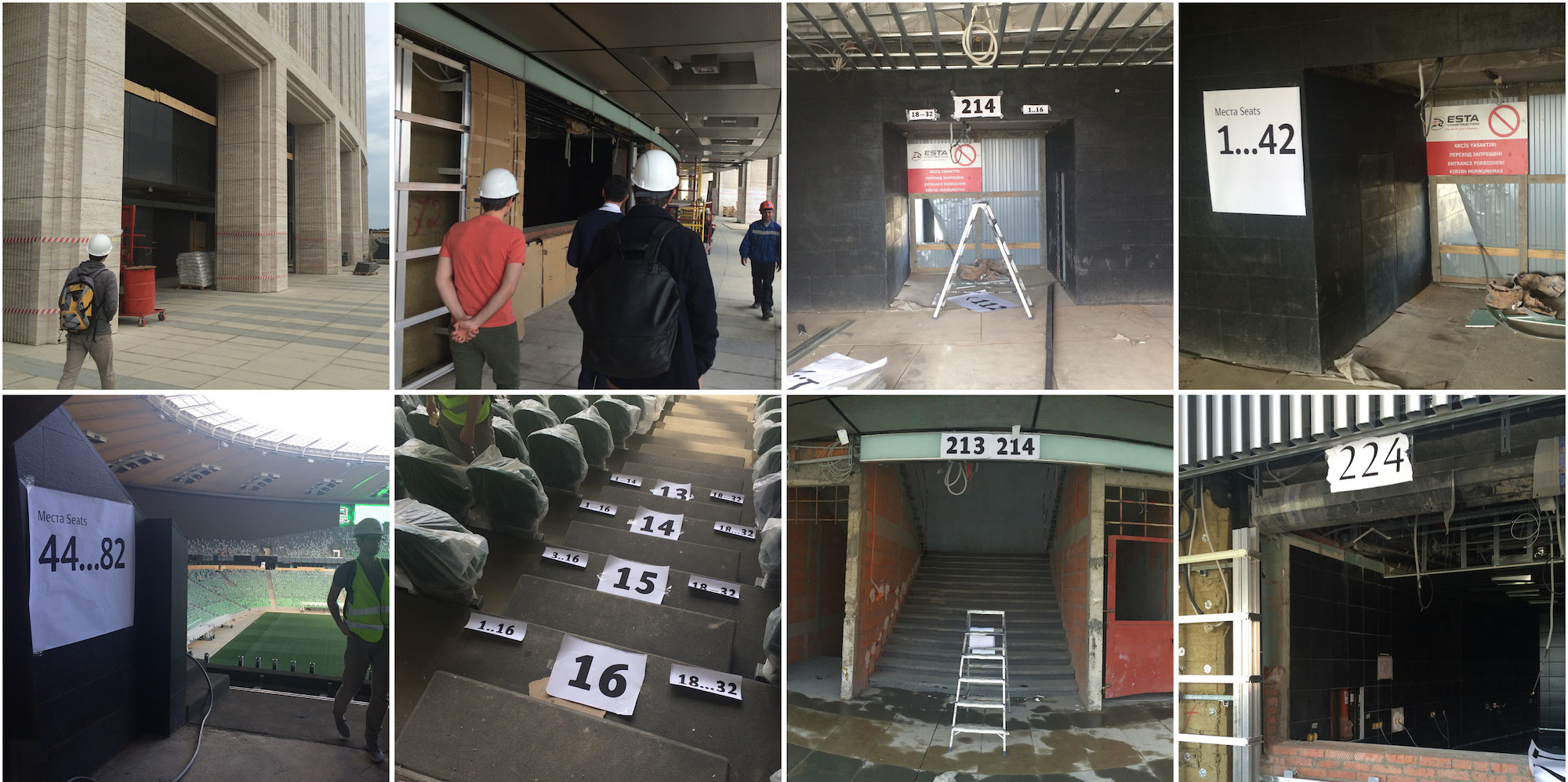
Invisible signs
The client comes back with an answer: installation of the screens is impossible.
Going back to square one. Revisiting the tinted glass idea. The stadium already has a light strip which the client happens not to like.
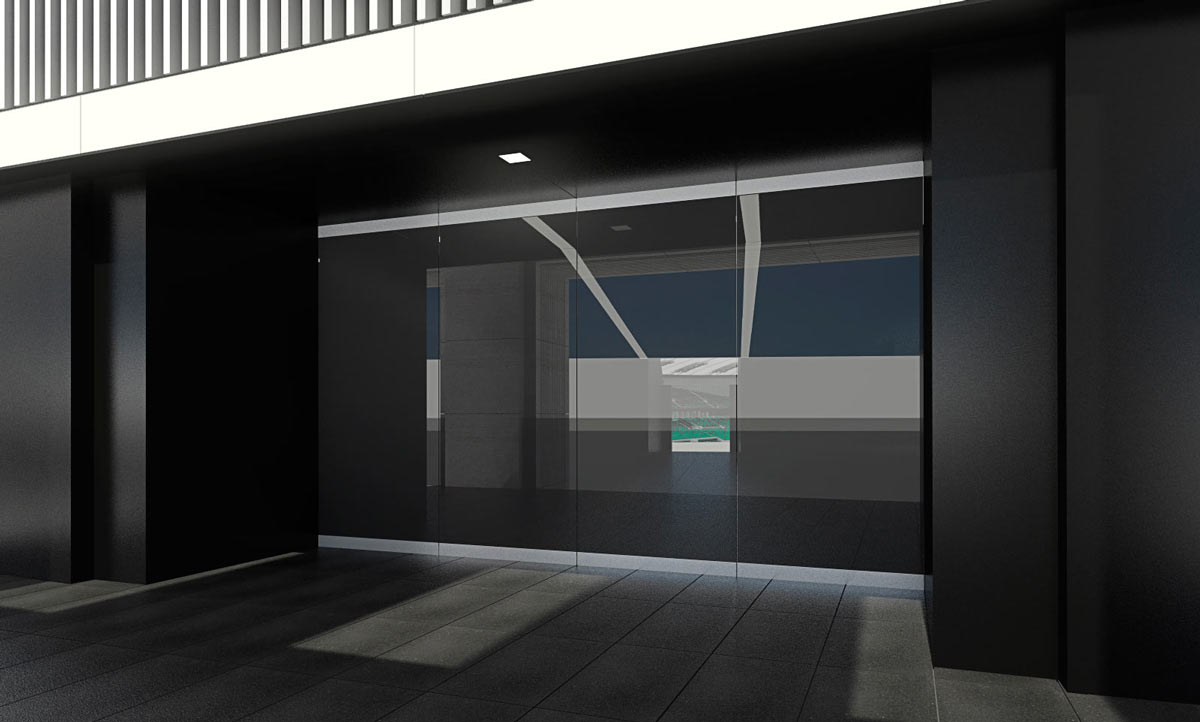
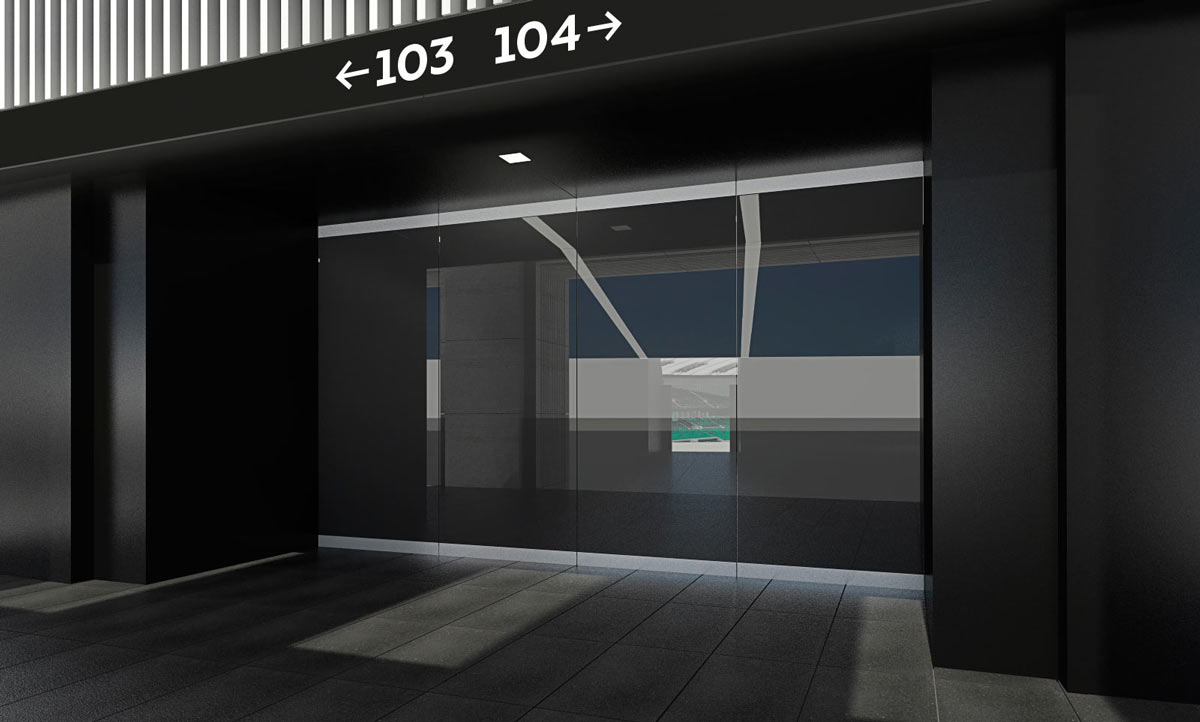
Coming up with an idea of a sign made of two layers of film. The sign is invisible when turned off and is activated only when needed.
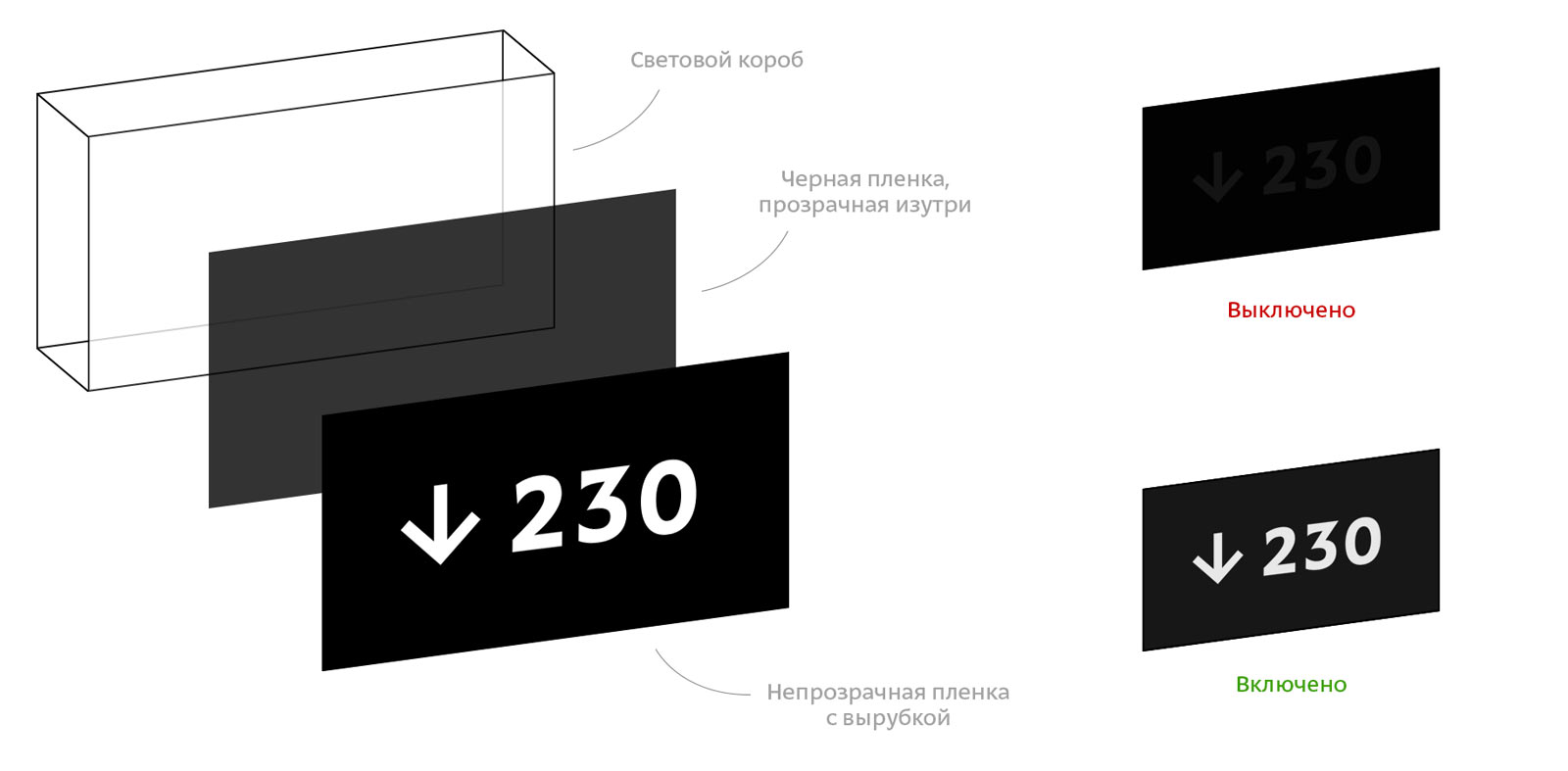
The art director suggests to make some of the signs from the same material as the walls they are going to be attached to. Right. Coming up with ideas for inconspicuous placement for other signs.
Putting all the ideas into a new document, showing to the client.


Client: Just what we wanted.
Tests at the studio
So, it seems we have solved the task: the signs are visible but not seen. The architecture of the stadium remains uncompromised. Everything is great except for the fact that we don’t know how the signs are going to look like in real life, on different materials, at various times of night and day, from different viewing angles. We need to test.
Starting with light boxes. Going to the store to buy a couple of rolls of window film. Assembling an improvised light box.

The idea works. But to avoid all errors in calculation of light output and other physical parameters we construct the exactly the same light box that is going to be used on the stadium. Exploring different options: window film at the bottom with Oracal on top; Oracal at the bottom with the film on top; tinted glass at the bottom, Oracal on top; perforated Oracal.
All of them work but we decide to go with glowing digits against a dark background.
Time to test the volumetric signs. The main questions we have are: how wide should the signs be and how readable black signs are going to be against a black background. Cutting a bunch of signs out of styrofoam, looking at dark and light alternatives.
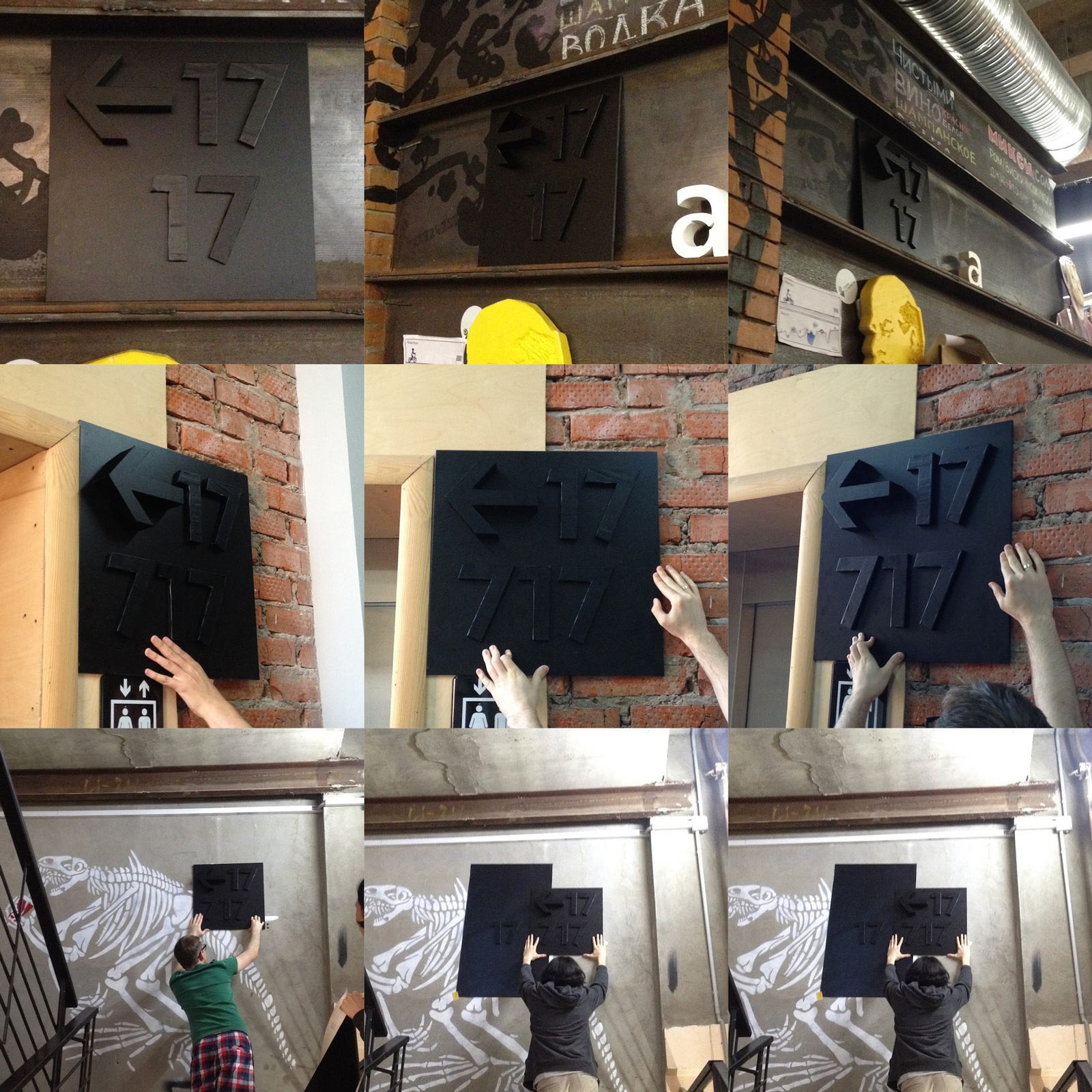
Volumetric sign graphics
Realizing that the idea of invisible navigation is so cool in itself that it doesn’t need any additional graphic meaning. Throwing away everything related to graphics that we had before and starting to remove the excessive parts. Creating a set of principles that will be at the core of all navigation.

Starting to implement the principles in real life.
Typeface
Going through the studio’s typefaces. None of them work. We need one as solid as an Egyptian pyramid and modern as a Facebook post.
Setting the task for the type designer: the new face should be geometric, bold, with no excessive details, with solid and clear shapes.
The type designer starts with digits as these will be used most often.

Now the capital letters.
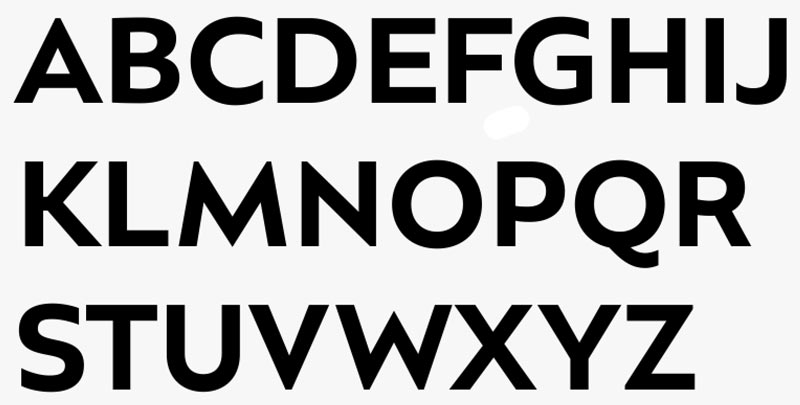
And the Cyrillic letters.
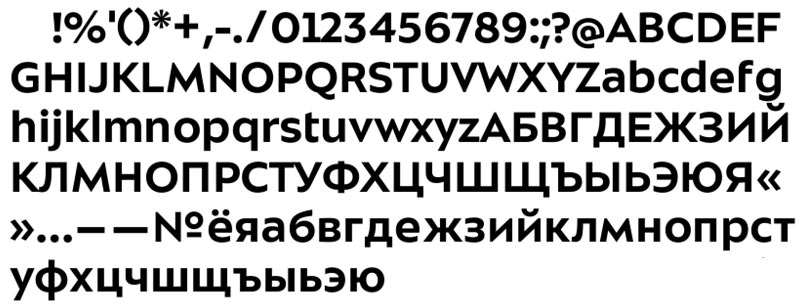
Quickly typing all possible combinations of designations with the new typeface. Looking at kerning: it’s better to fix it directly in the typeface than later work on each sign individually. Asking the type designer to make changes.
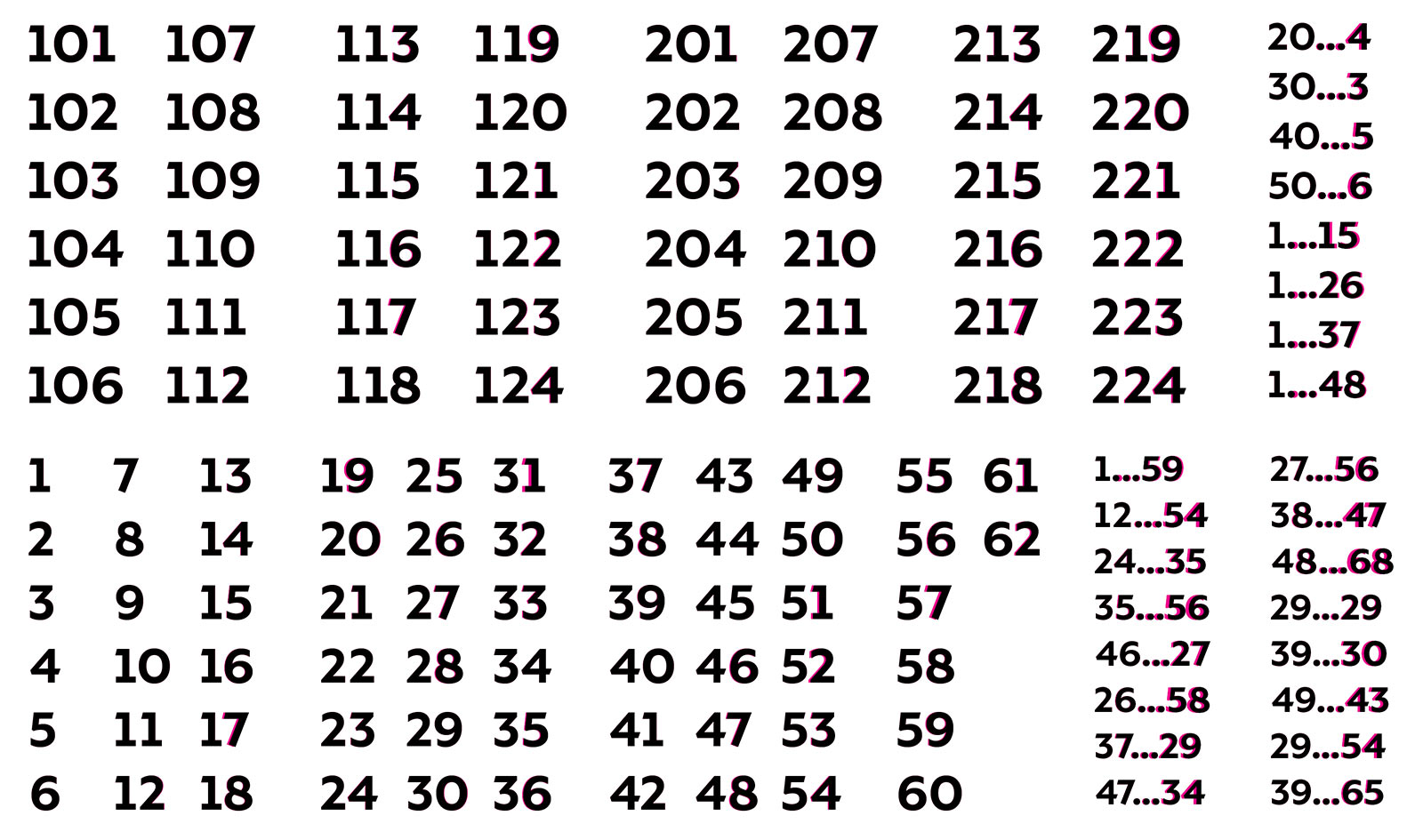
Pictograms
Based on the first approved sketches of the typeface we start developing matching pictograms.
Preparing the first sketches and sending to the art director.
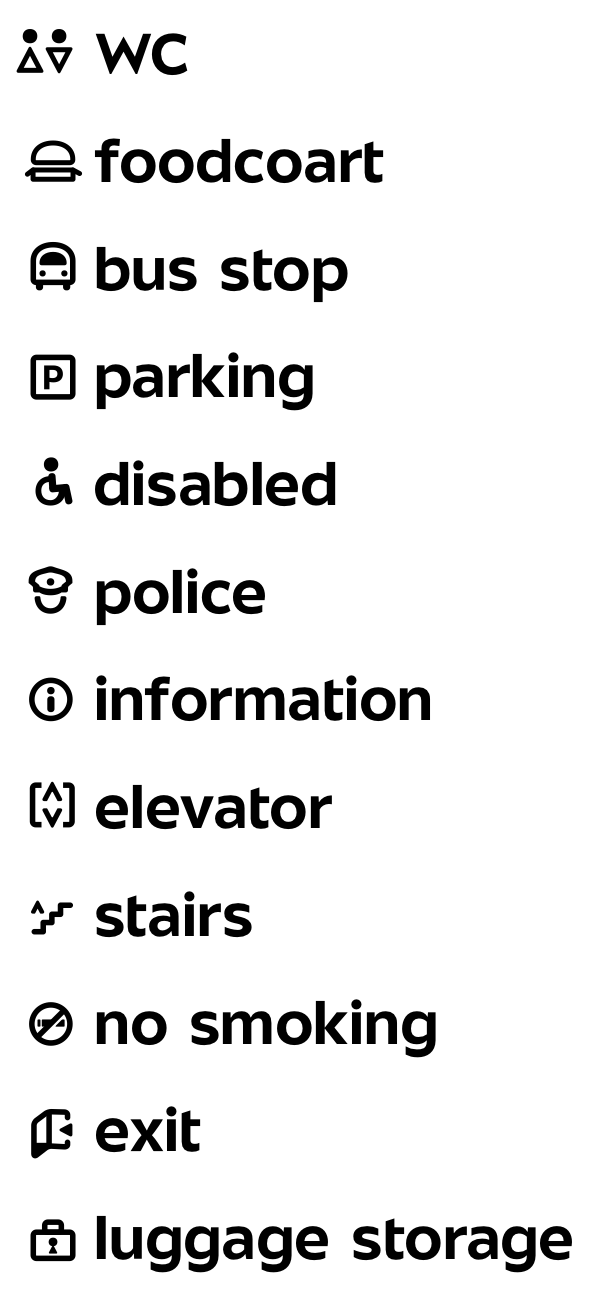
Art director: Nope, won’t work.
Deciding to give the task to the illustrator. The illustrator makes a couple of attempts.
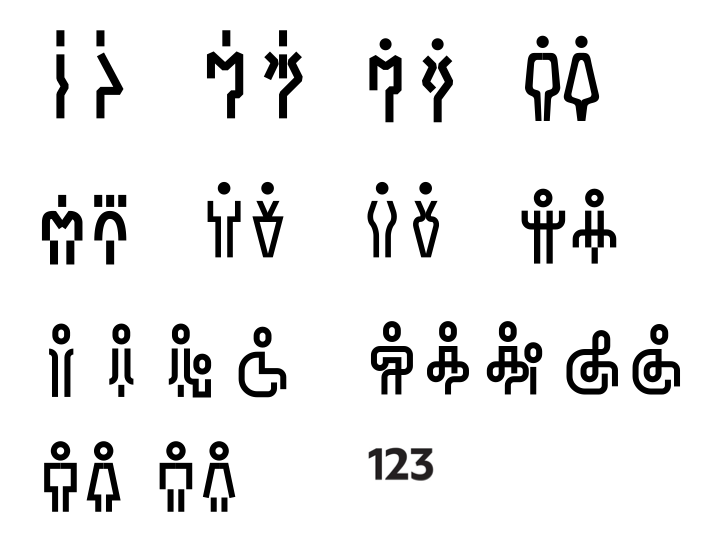
The art director asks to use a different illustrator. Doing so.
Even these designs don’t seem to please the art director: “Nope, it’s not what we need. There is no need to invent new shapes here, the result need to be calm, classic and pleasant.”
Trying to draw a classic and pleasant washroom icon.
The washroom is approved, beginning to generate other icons in the same style.
Six iterations later, after approving about a half of the icons, the first art director goes to the North Pole on an icebreaker, survives a wreckage in the ice and spends two weeks trying to reach the internet on dog sleds. During this time, he is being replaced by another art director.
Continuing the search.
And finding everything.
Well, not exactly. The first art director finds a communications station in the tundra and sends in additional corrections.
Now it’s done.
Navigation principles
Thinking about a clear system of designations. Even though UEFA and other football organizations produce lots of documents on building stadiums and organizing sport events, there is no single system for numbering stadium entrances, stands, sectors or even seat rows.
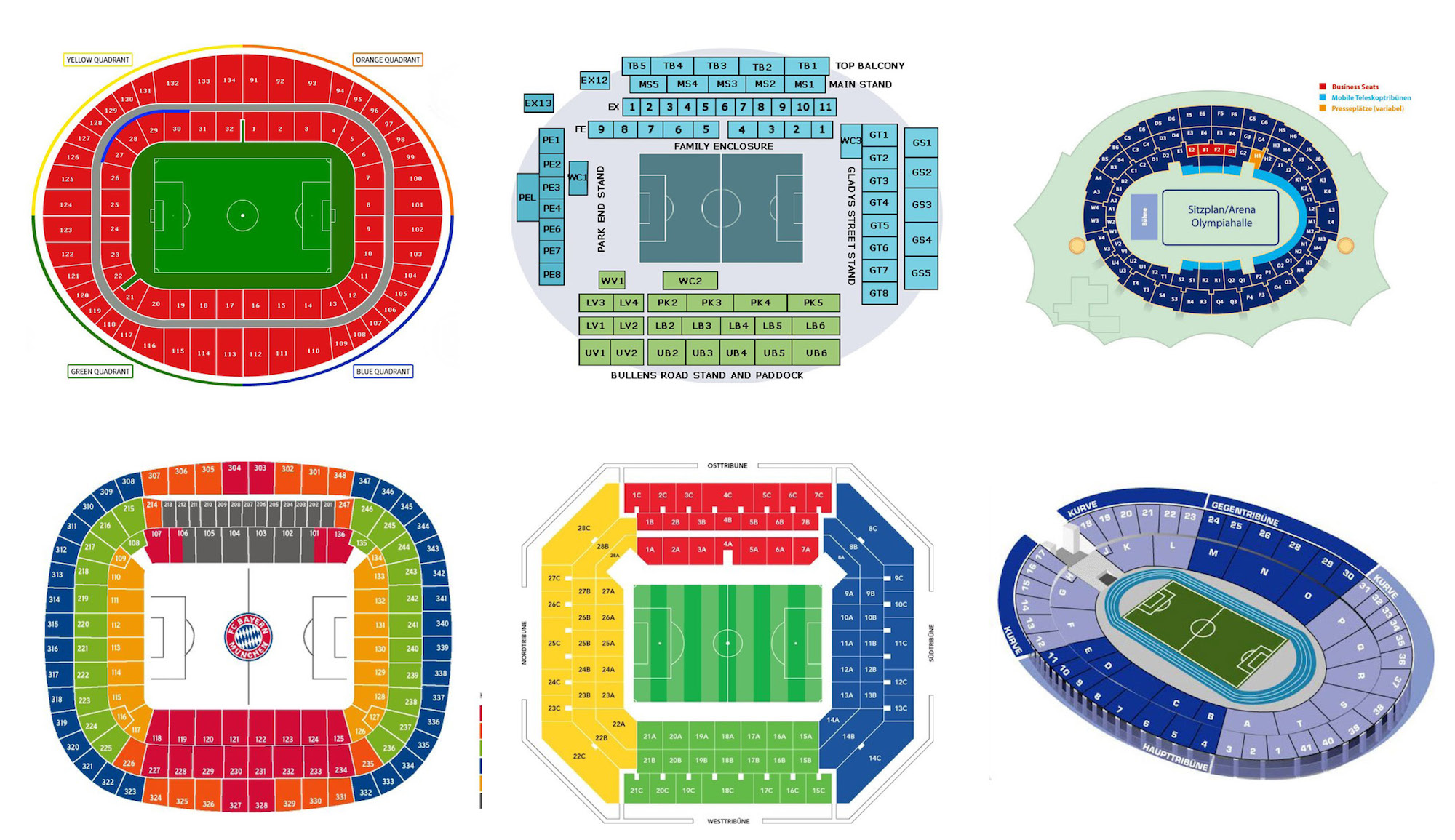
Which means that even if a stadium belongs to a famous European club, it wouldn’t necessarily have a simple and clear numbering.
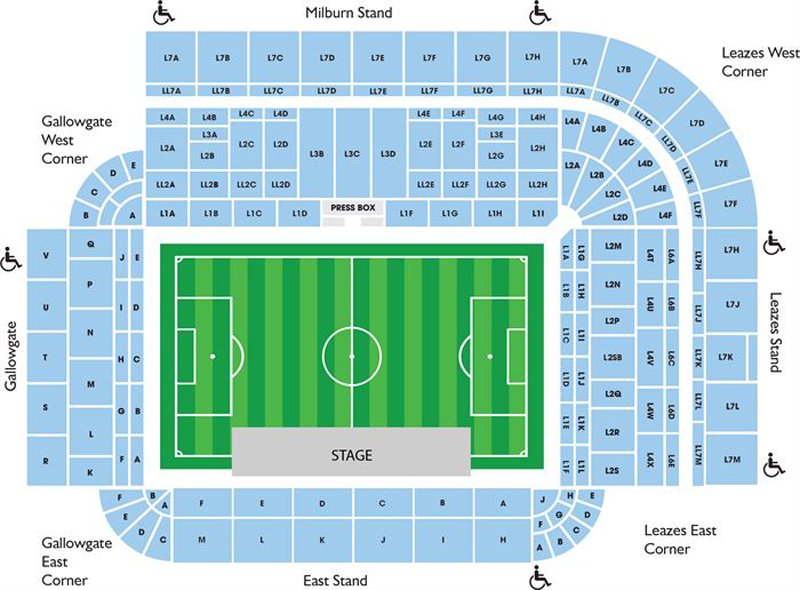
Architecturally, FC Krasnodar stadium is closer to Dutch stadiums which usually number sectors one above each other and in strict order.
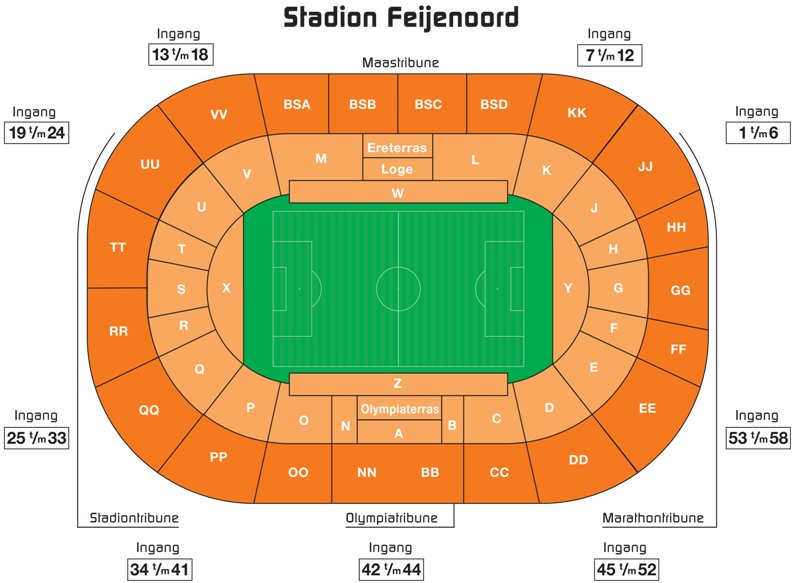
However, in Russia most stadiums use a three-digit numbering system. Deciding to use it as a basis for our system to make sure the result is familiar to Russian fans.
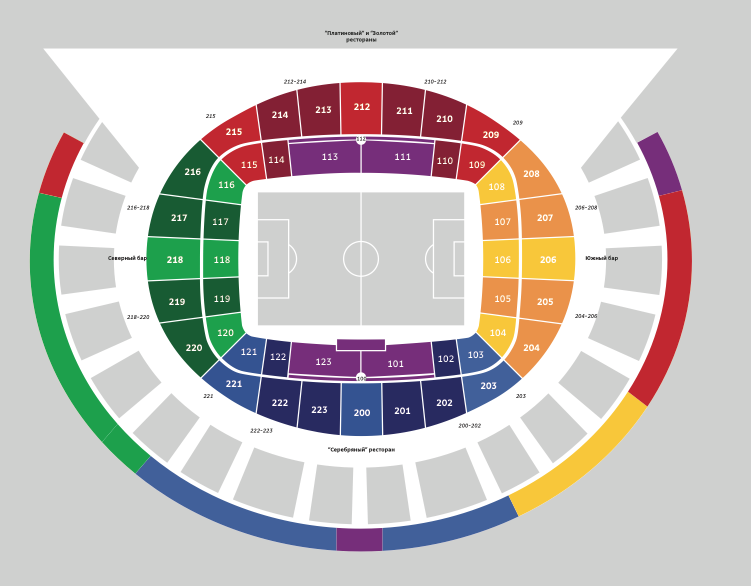
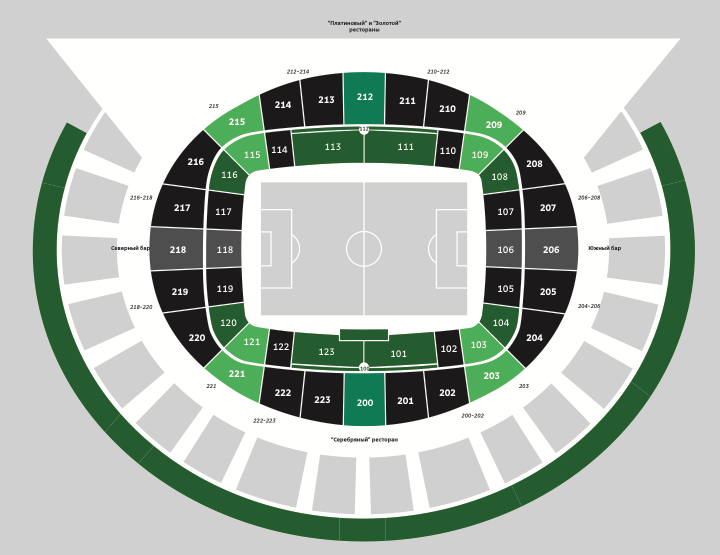
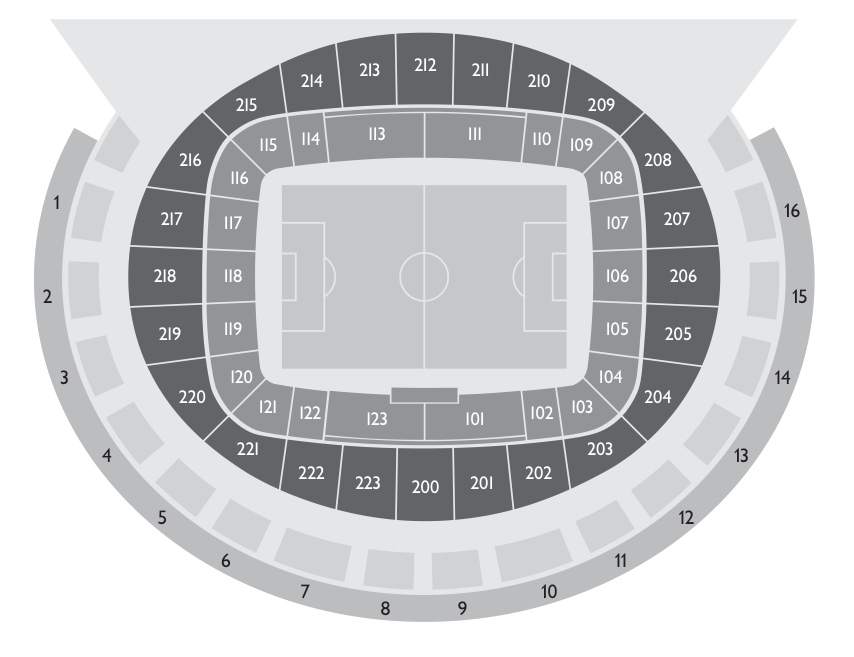
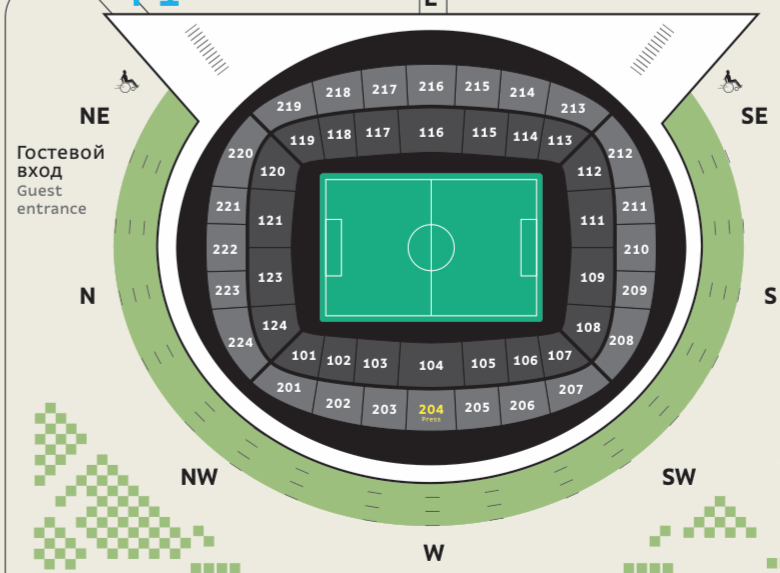
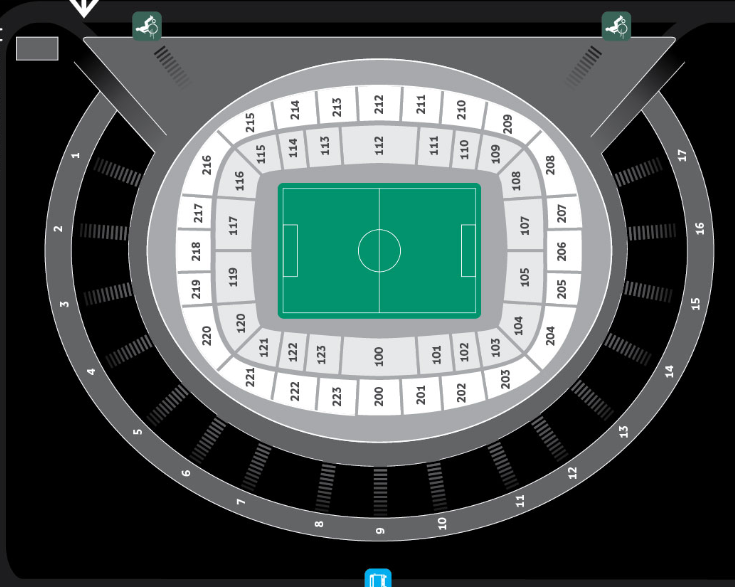
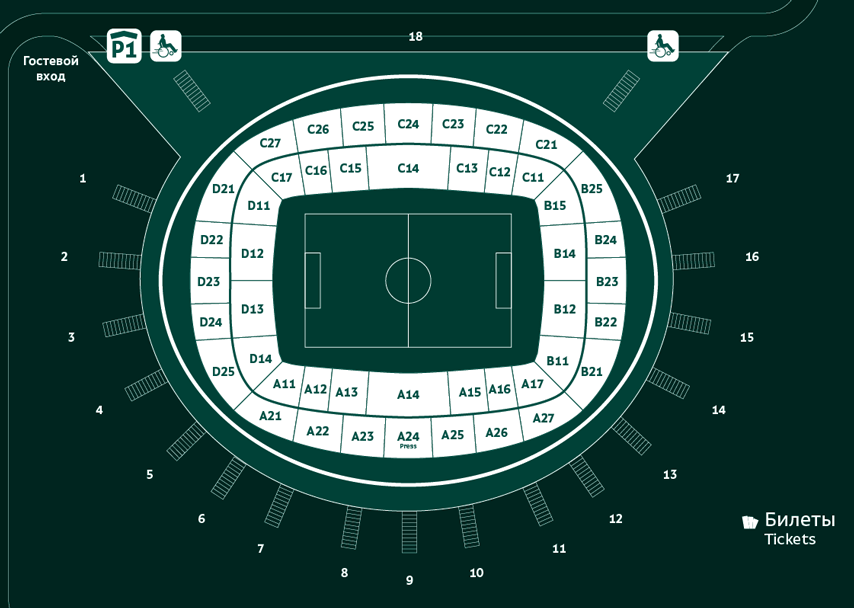
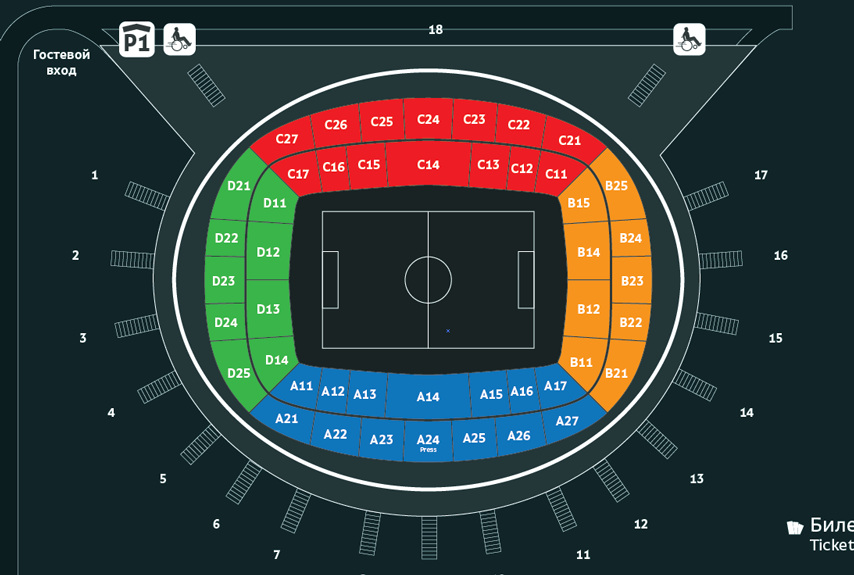
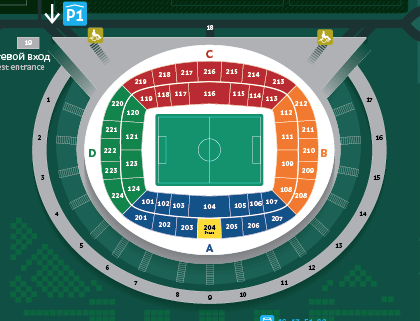
Thinking of a way to number entrances. Each of the entrances has two security check zones which both lead to different sets of stairs. Trying to divide it in two and in one.
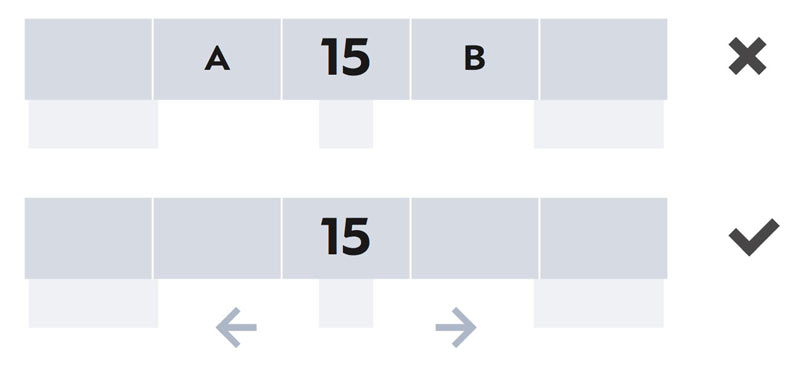
To make benefits of each option evident, we calculate spectator routes. Arranging security check zones and sectors in a way that would avoid overloading specific zones and at the same prevent people from having to walk too far.
Coming to a sudden realization: to make sure everything works, we need to start sector numbering not from the center of the main stand, but together with entrance numbering. Especially since this is where fan fences are located. Everything falls into place.
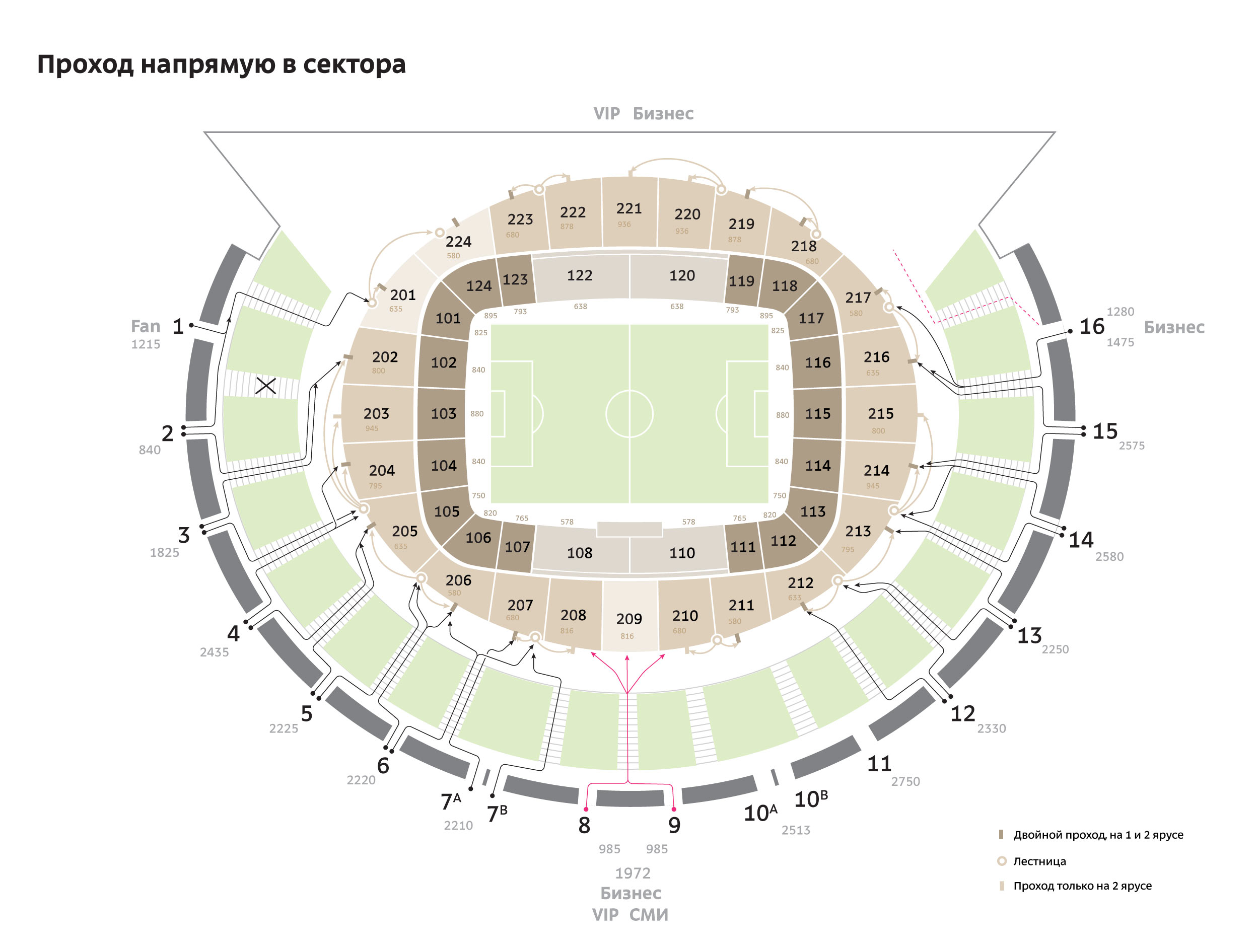
Preparing information for the ticket office which is getting ready to open.
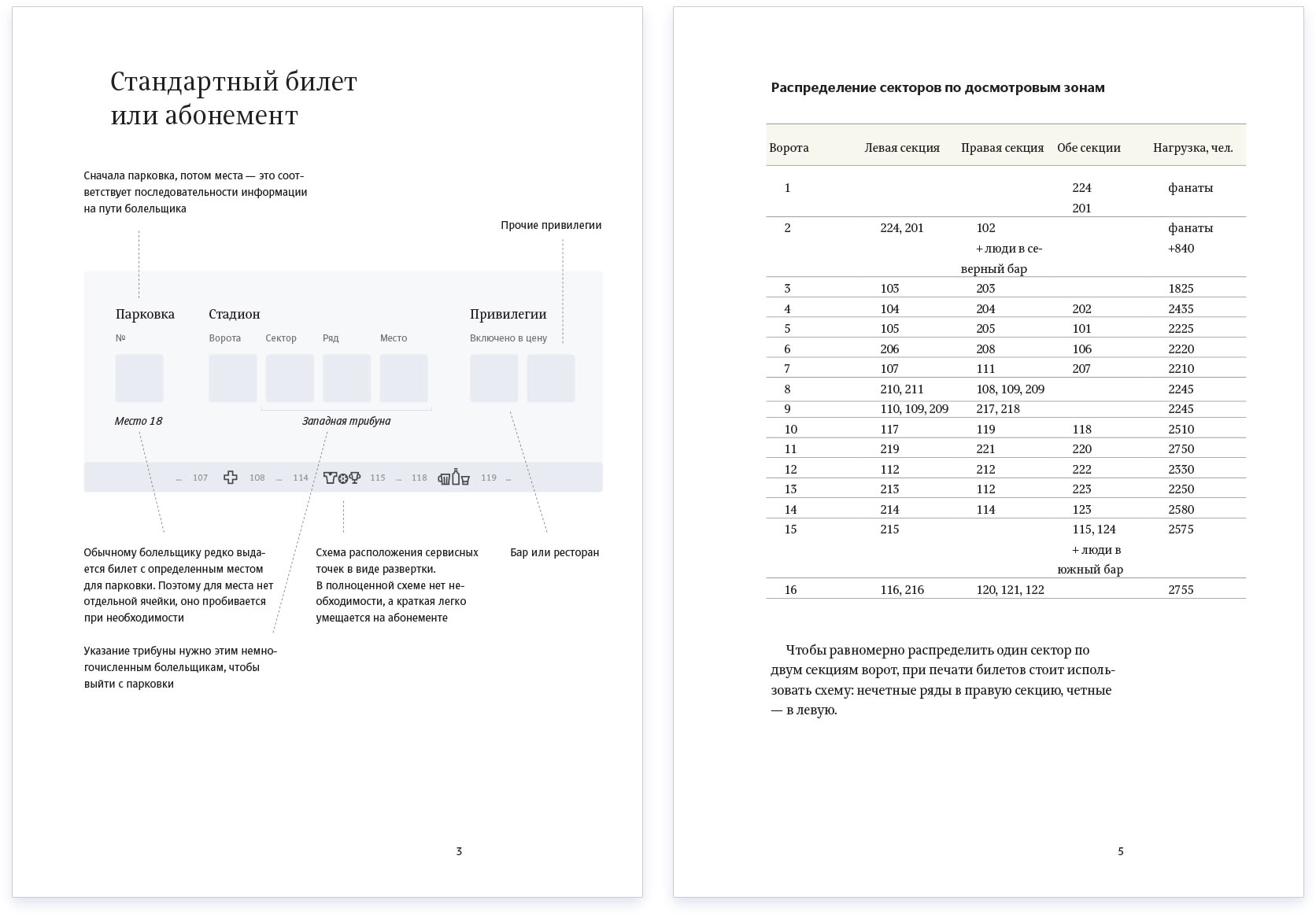
Stadium tests
Choosing the size of signs that would allow them to blend in with architecture of the stadium and remain visible, deciding where they should be located and going to the stadium for testing. To do this, we need to prepare a bunch of signs of various dimensions, width and color. Creating a list of signs, preparing test mock-ups.
The trip to the stadium is planned for Monday morning. The designer believes that if he starts the preparations around 6pm on Sunday, he should be done by midnight. After working all the way till 9am, he realizes how wrong he was.
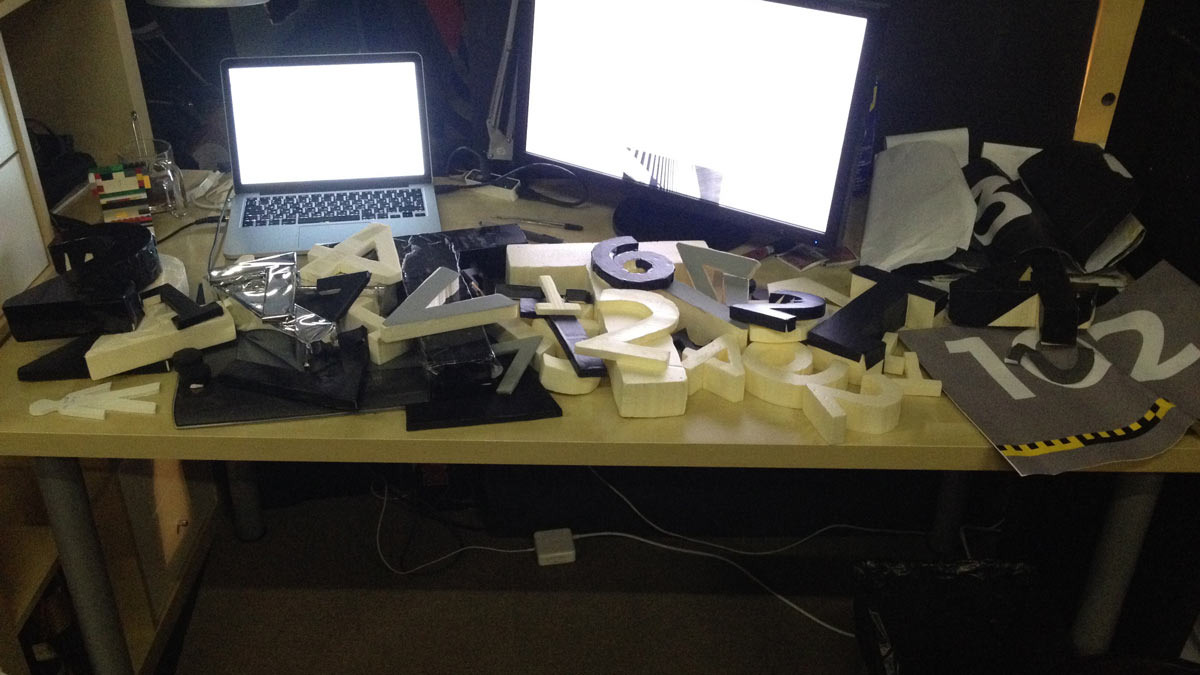
Putting everything in bags and off we go.
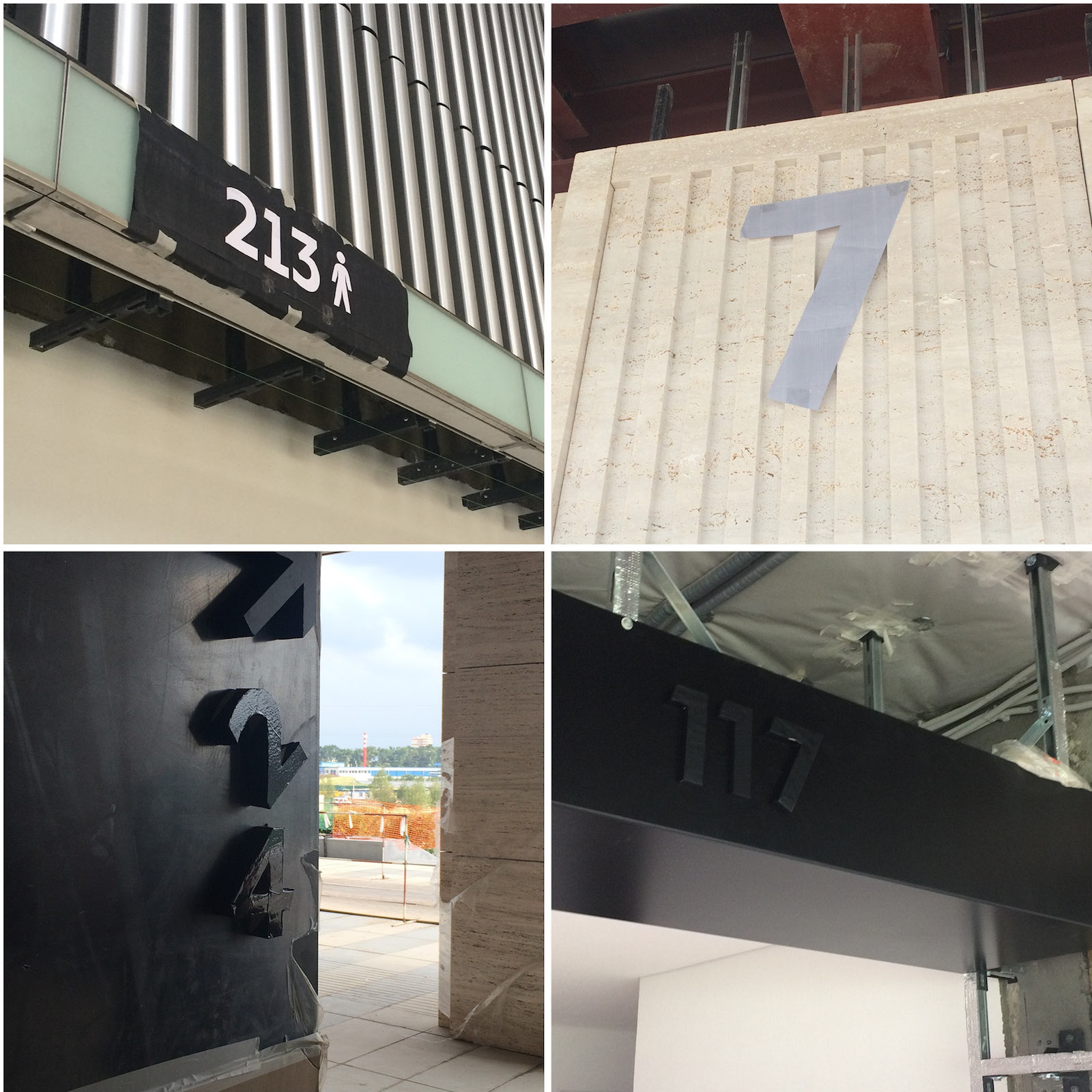
Typesetting the mock-ups
Returning to the studio, writing down the results of our measurements. Even though the typeface and the icons aren’t ready yet, the deadline is approaching so it’s time to start getting everything ready. Starting to prepare templates of mock-ups and documents, coming up with a way to automate typesetting.
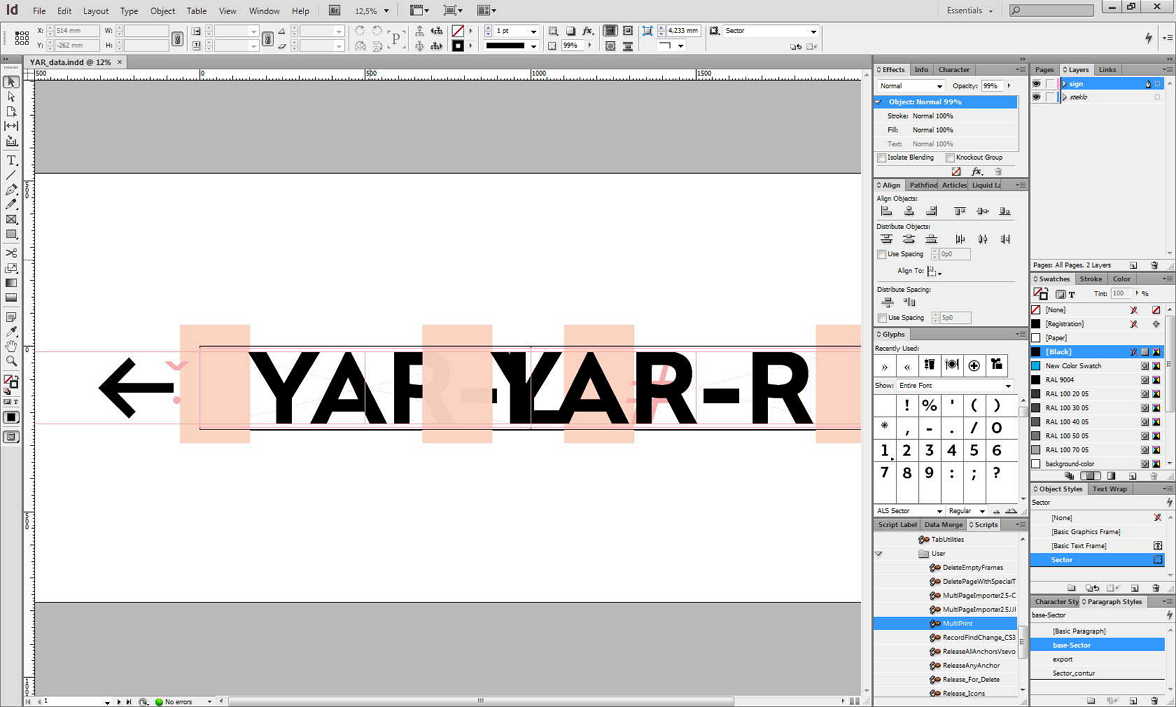
When the time comes, sending all materials including sign, door and wall dimensions to the typesetters. The typesetters construct mock-ups in a way that would allow them to change the typeface and icons for all signs at the same time.
Putting all data in a huge Excel file, typesetting a flexible template of a spreadsheet for inserting data, inserting all the data, having a quick look at all the 534 mock-ups, cleaning up some of the details and publishing as individual PDF files with unique coded names.

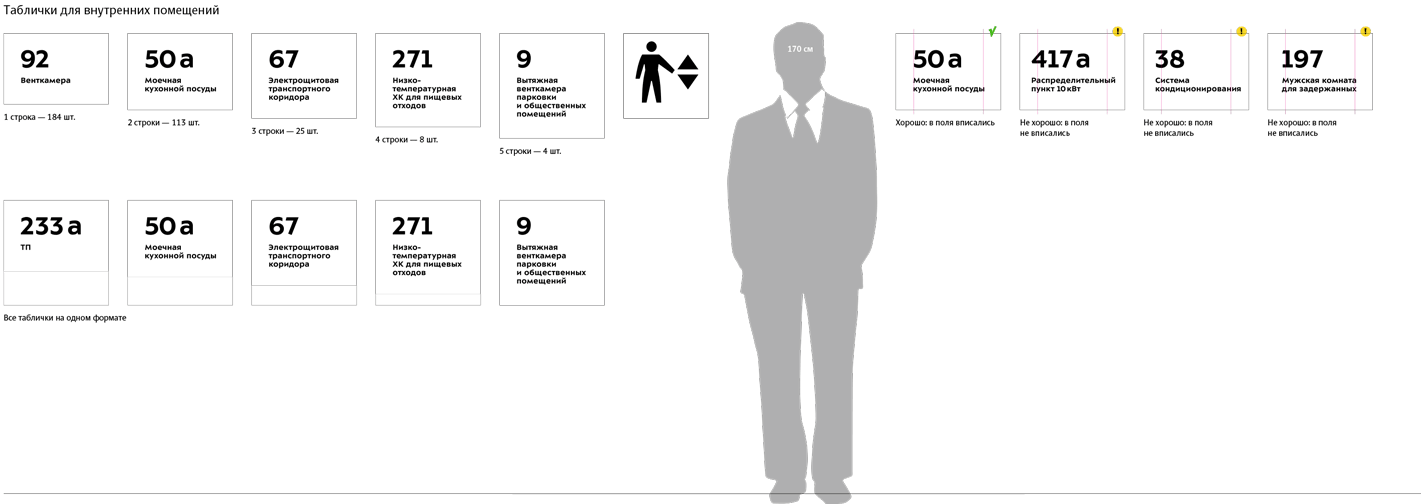
From start to finish, it took 7 hours for the entire batch, which means around 47 seconds for each sign. A great example of using automated typesetting in InDesign!
There is still a range of signs consisting only of arrows, numbers and pictograms that has to be typeset as well. Elevators, staircases, parking pylons, numbers, arrows, icons.

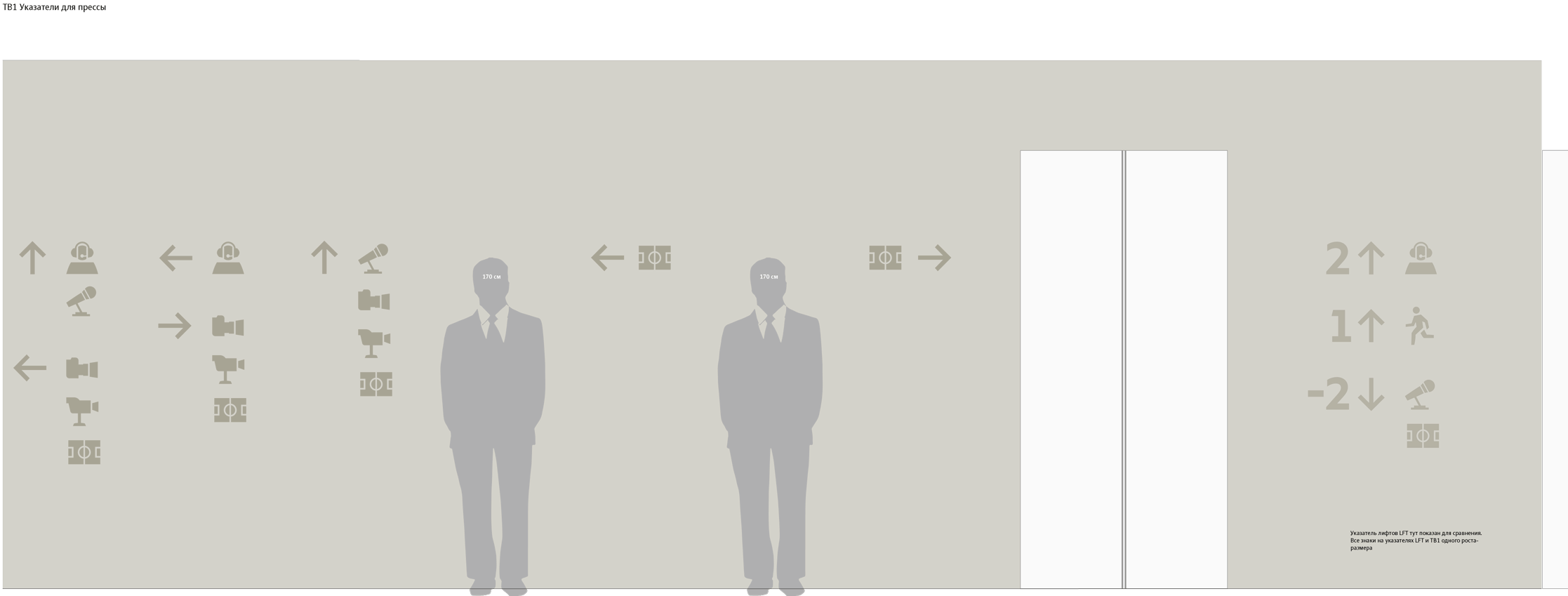

Designing parking markings. The distance between columns is different, finding ways to work around this.

The art director suggests to add a double solid line in the center.
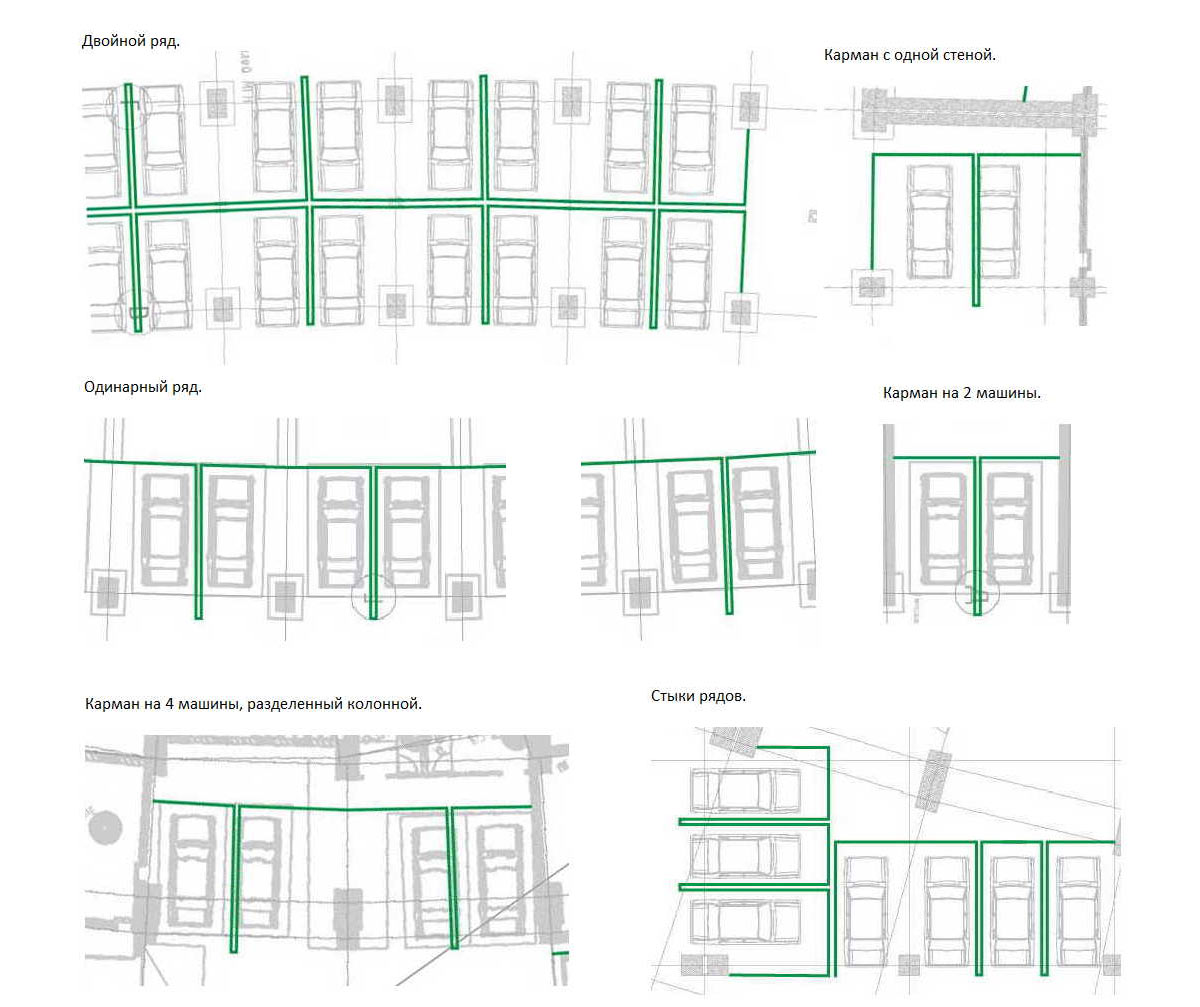
Designer: Like this?
Art director: Something like that.
The art director points out that the meaning of the exit sign is very unclear.
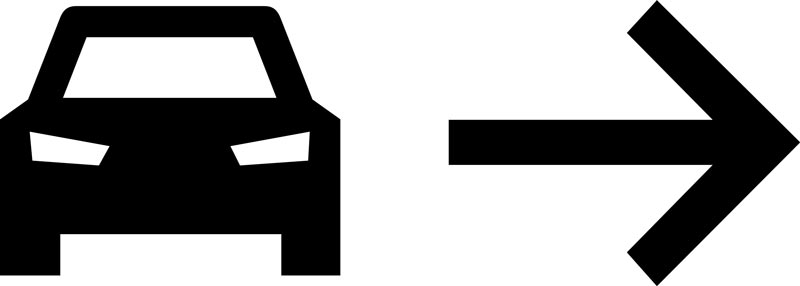
Producing more obvious designs.
Art director: No, I don’t like leaving some shape as a metaphor for exit.
Deciding to write this piece of important information with text instead.
Polishing a bunch of other things.
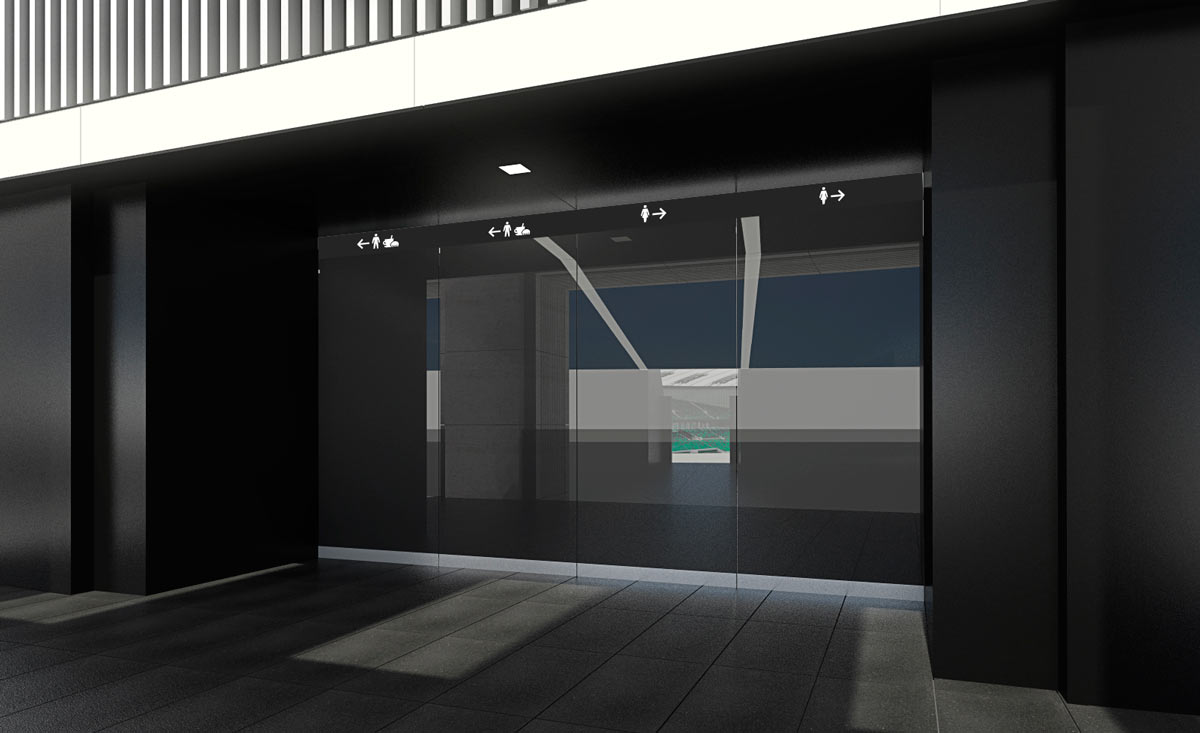
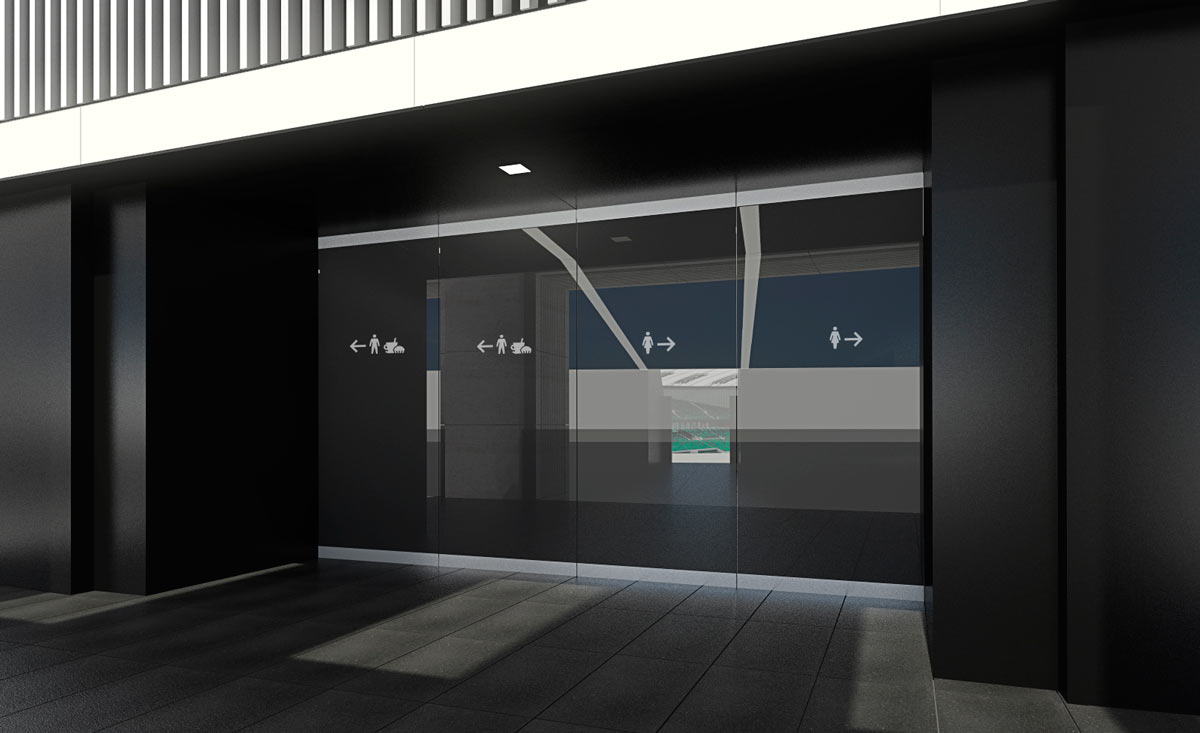
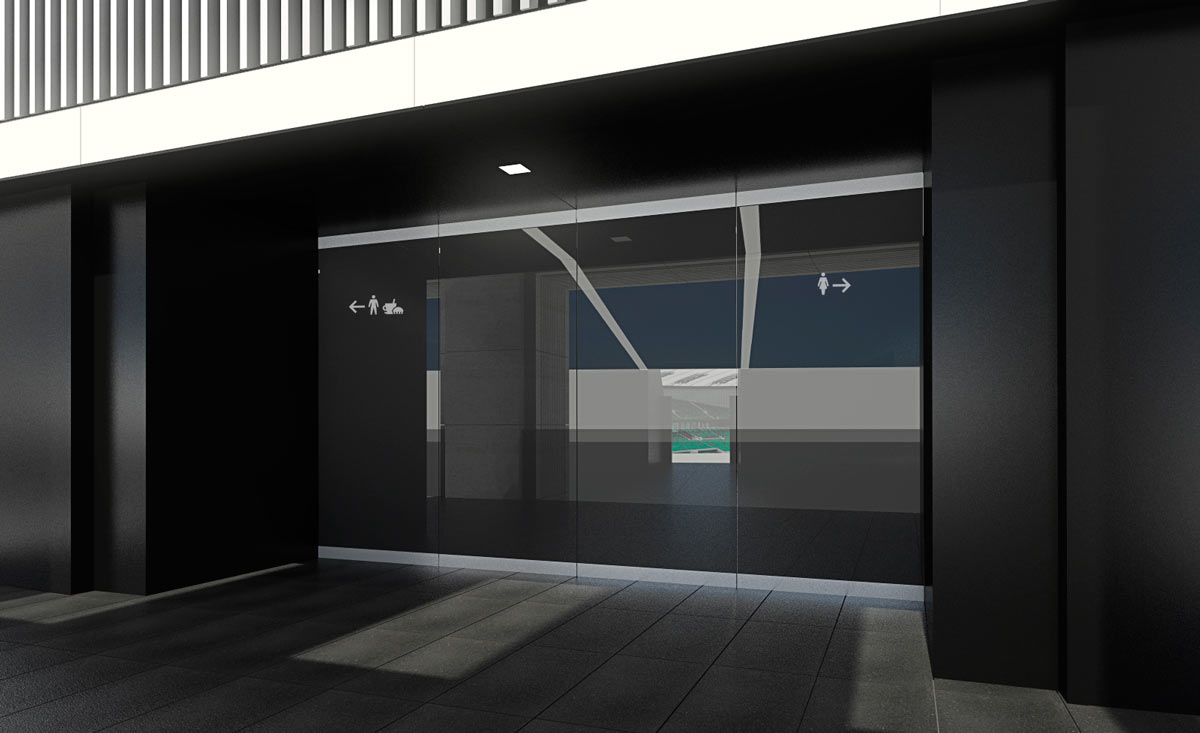
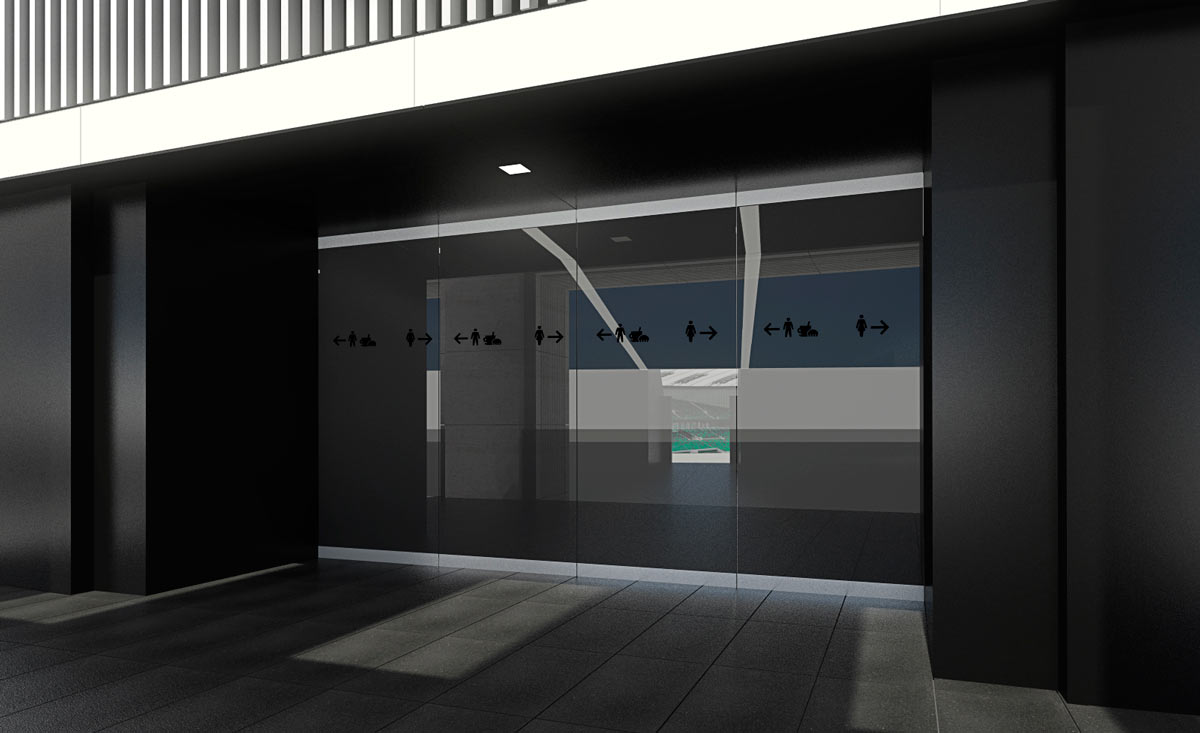
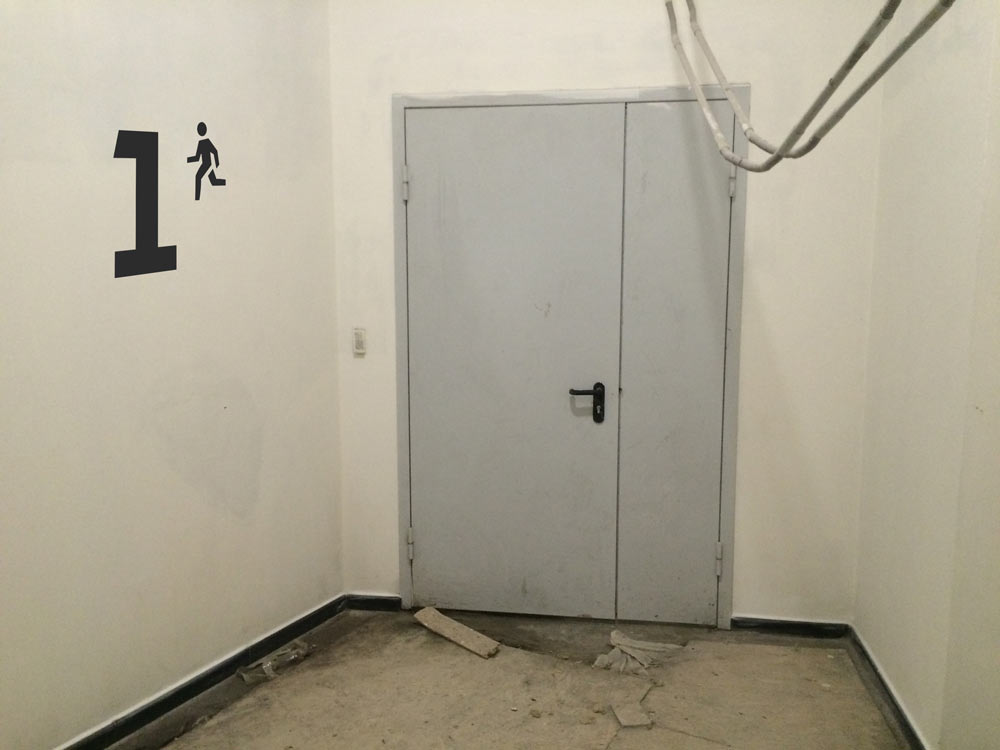
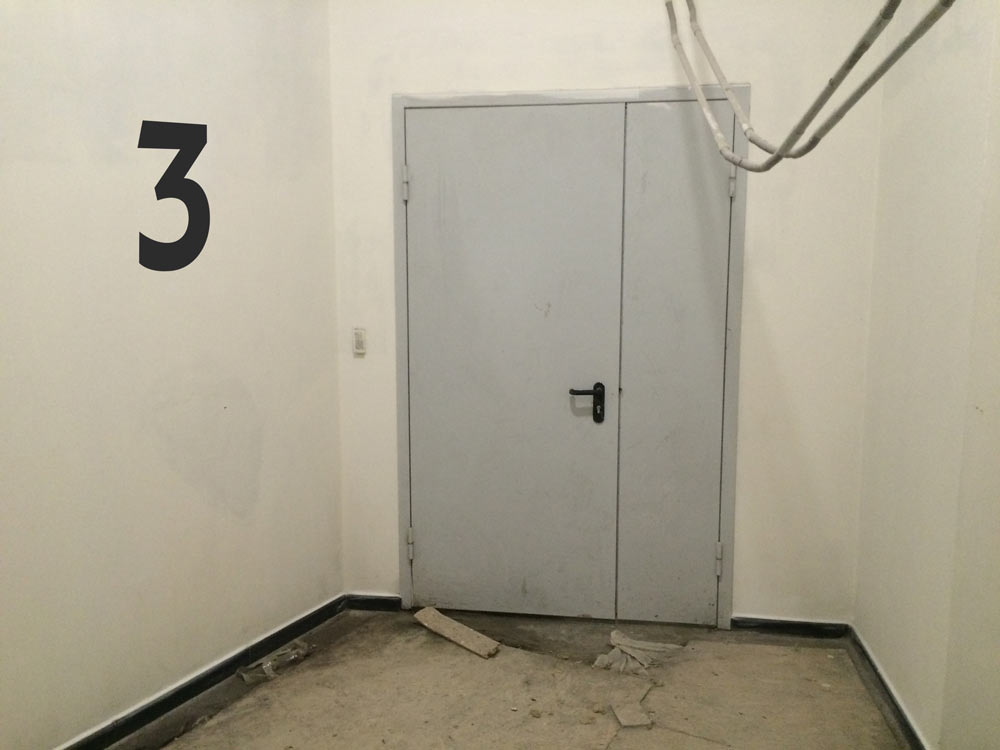
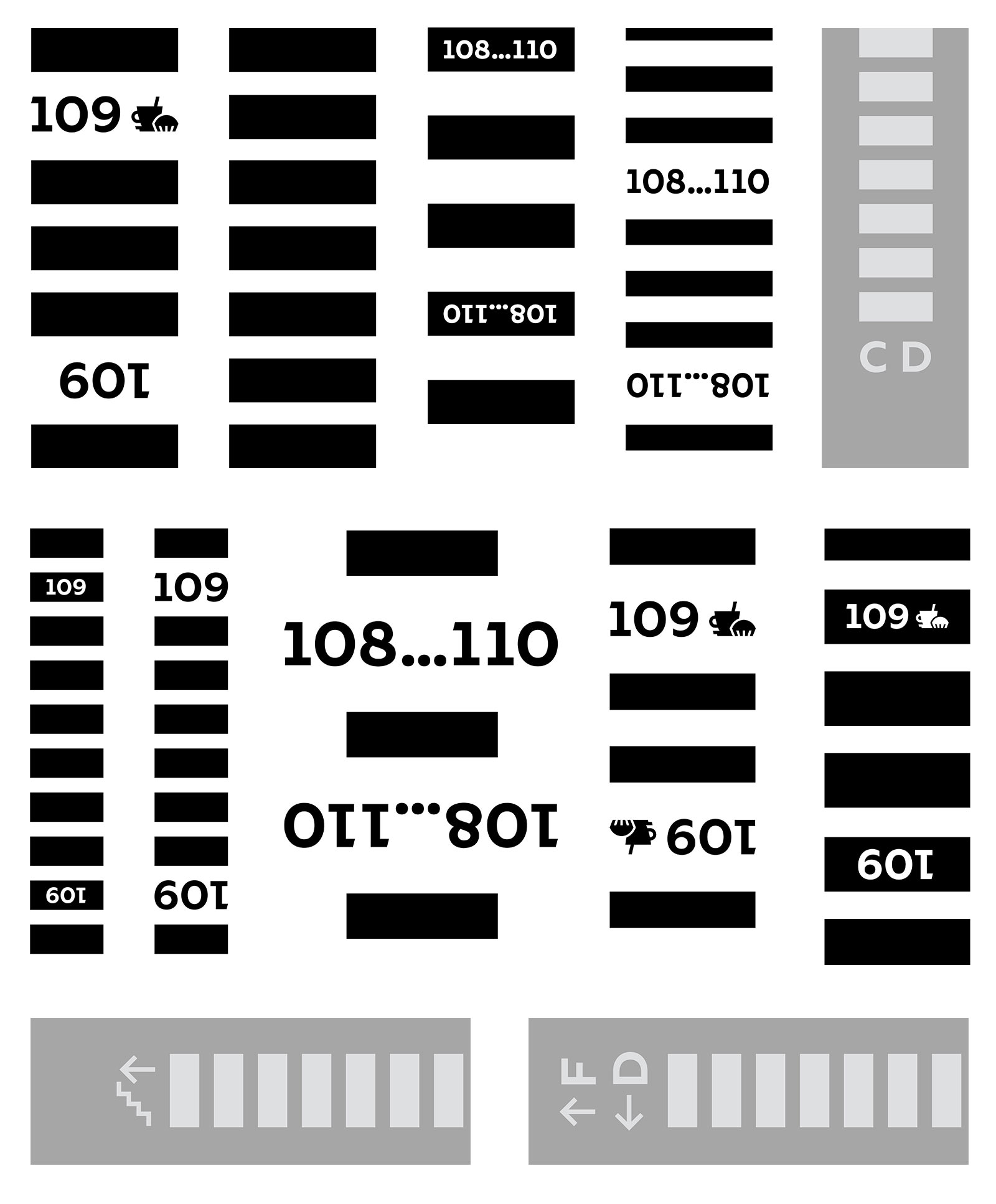
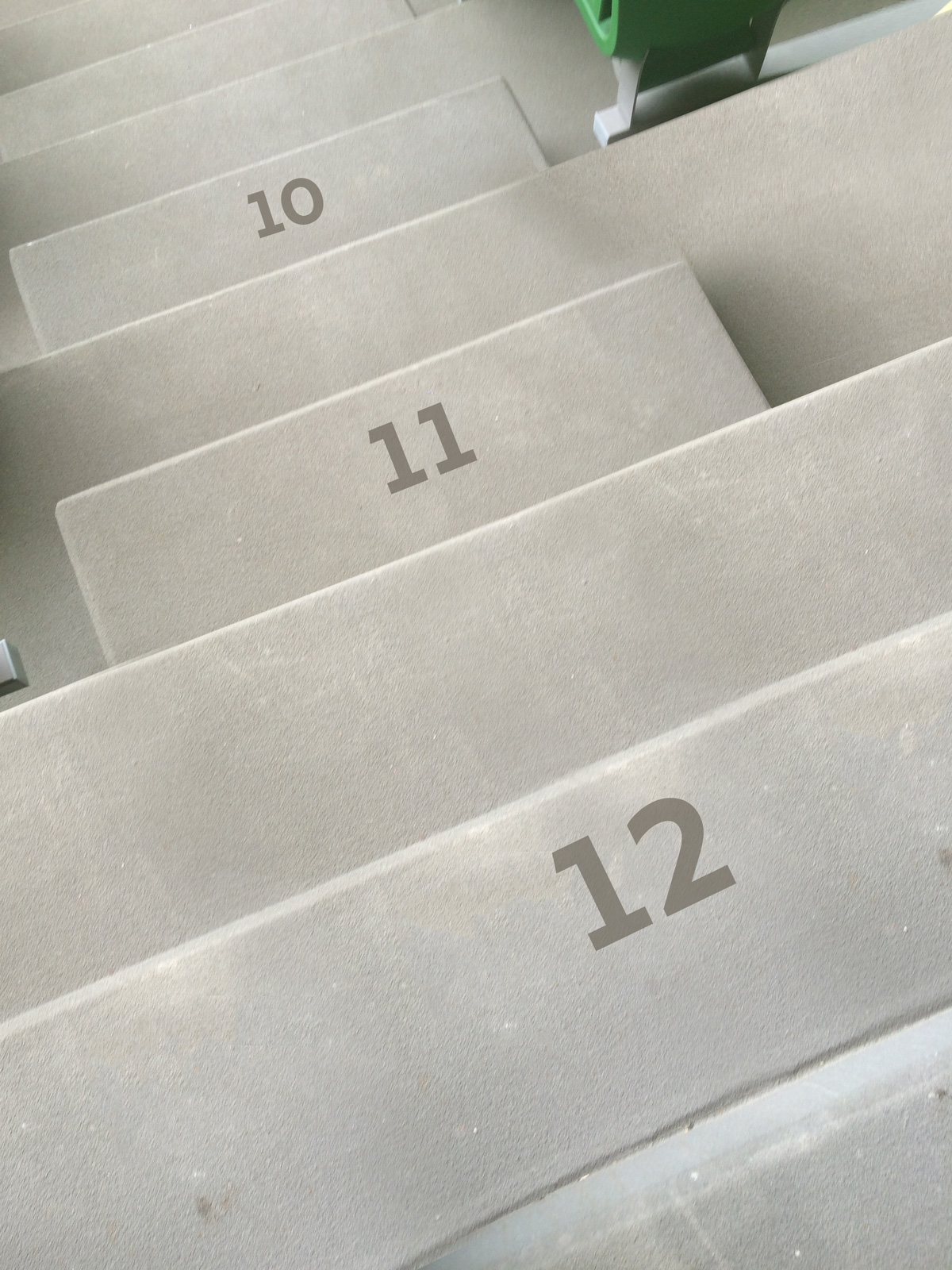
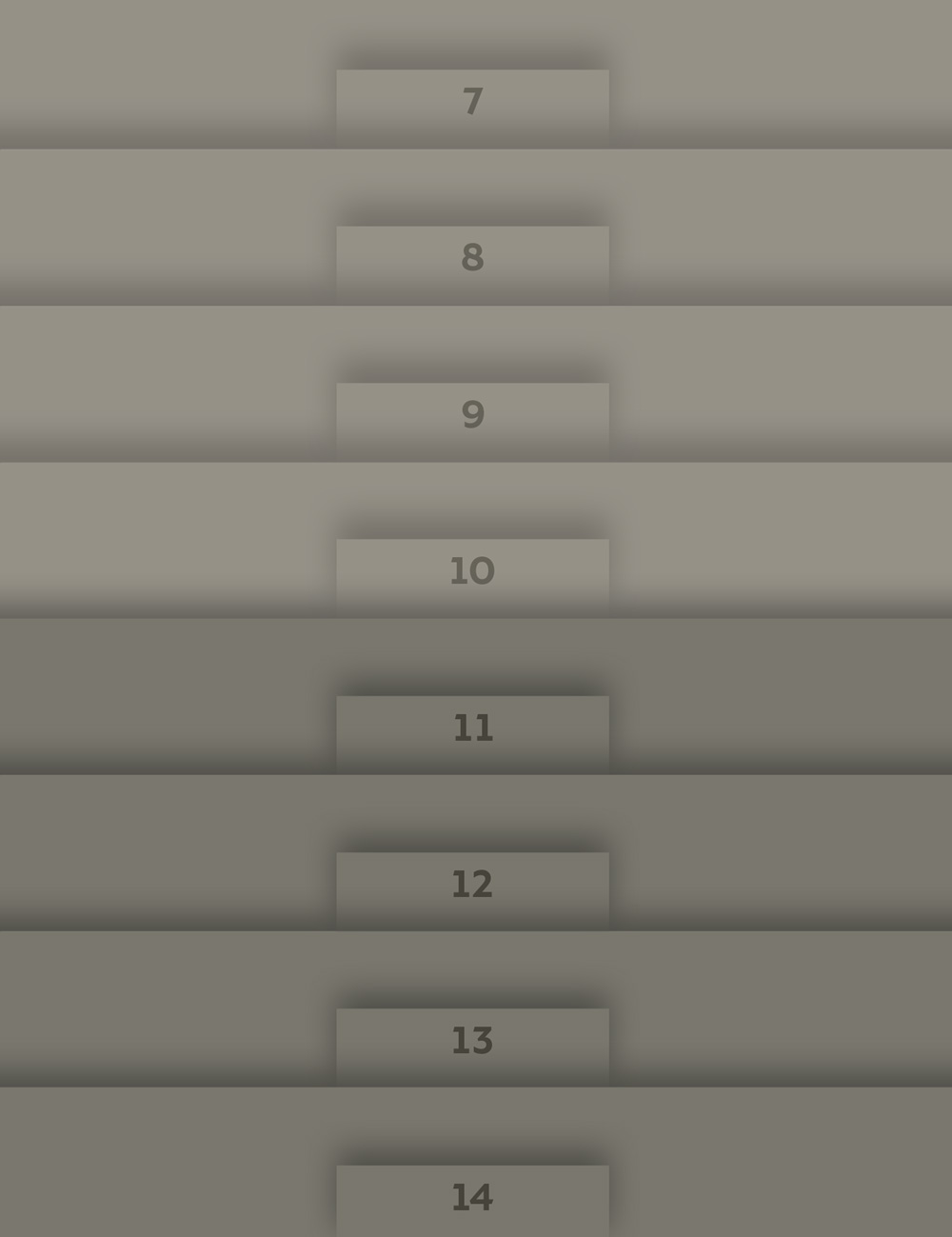
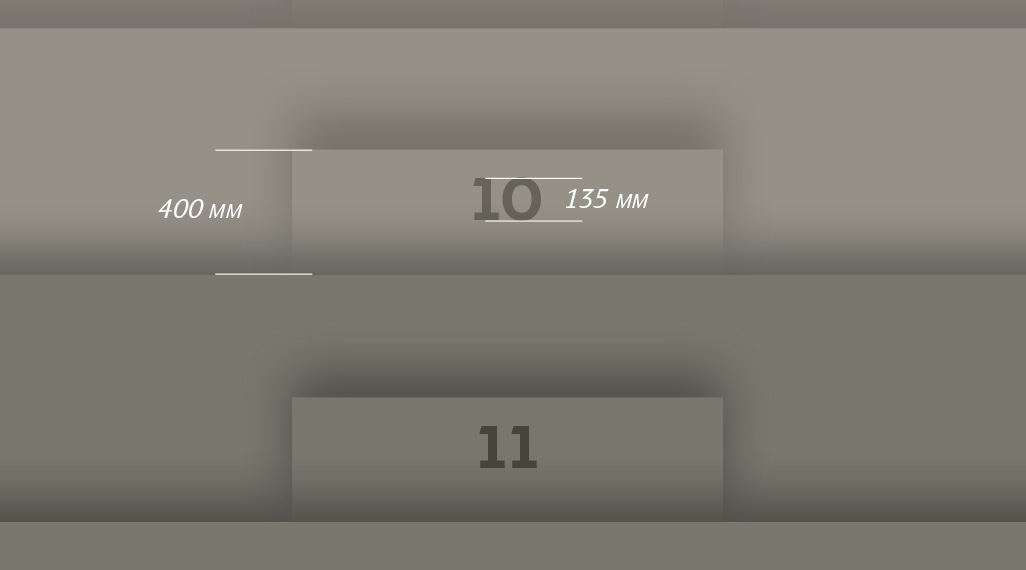
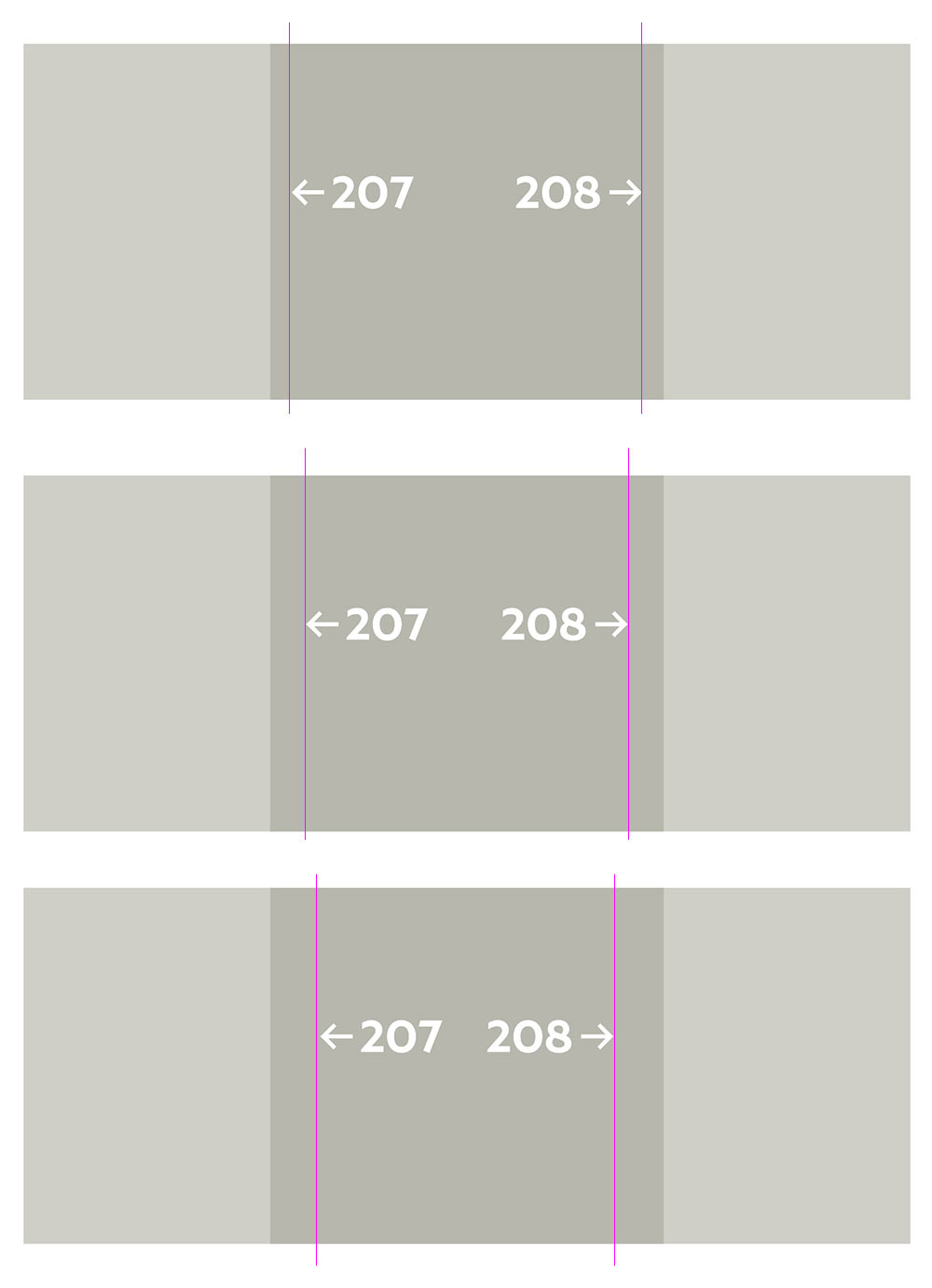
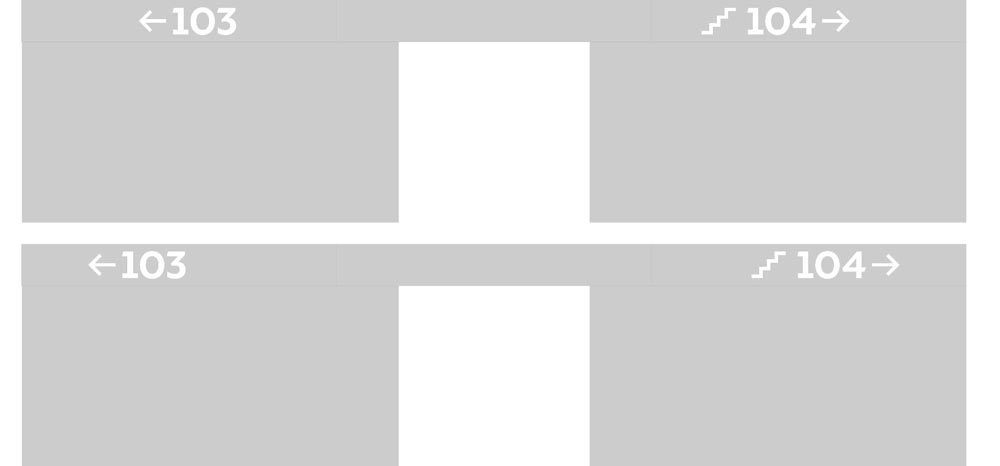
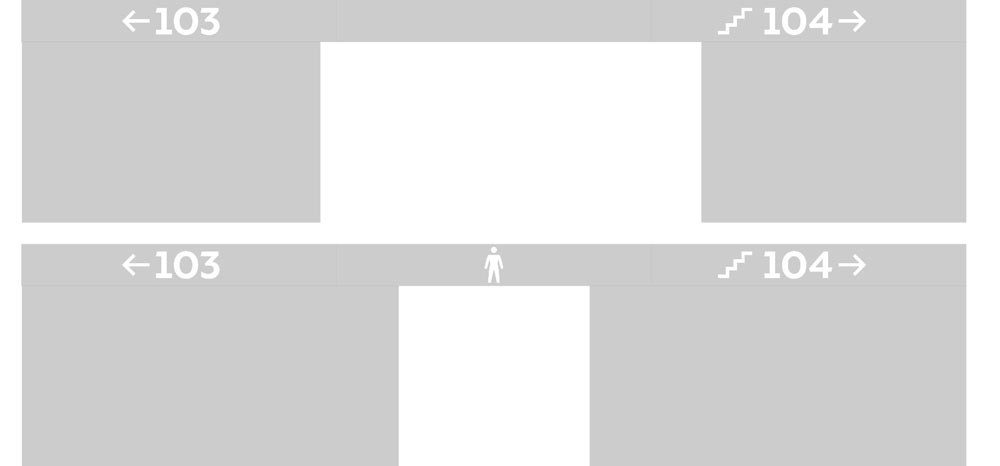
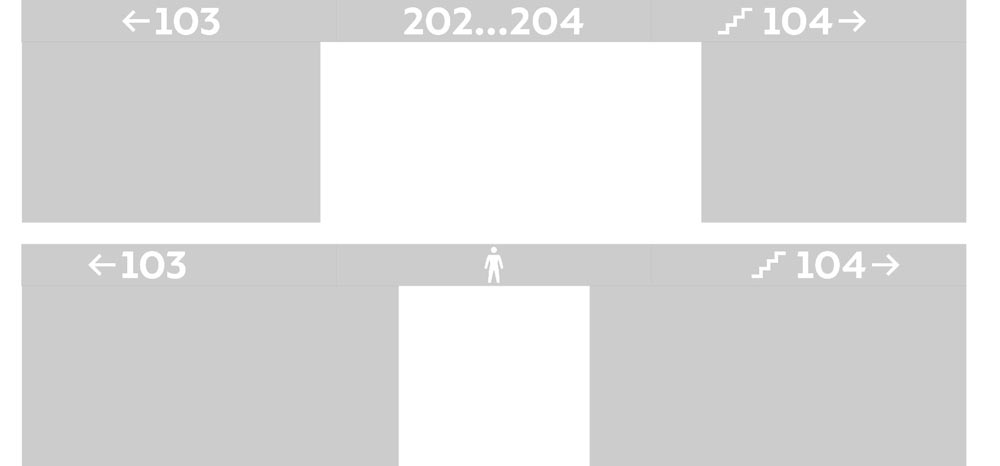
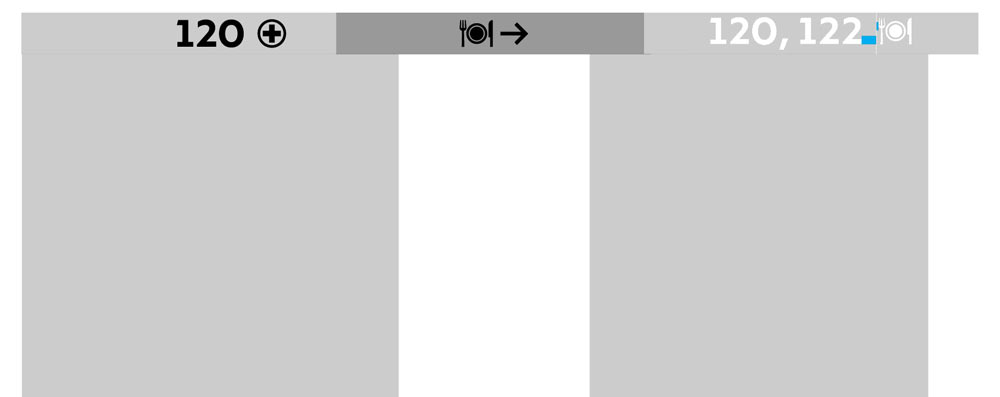
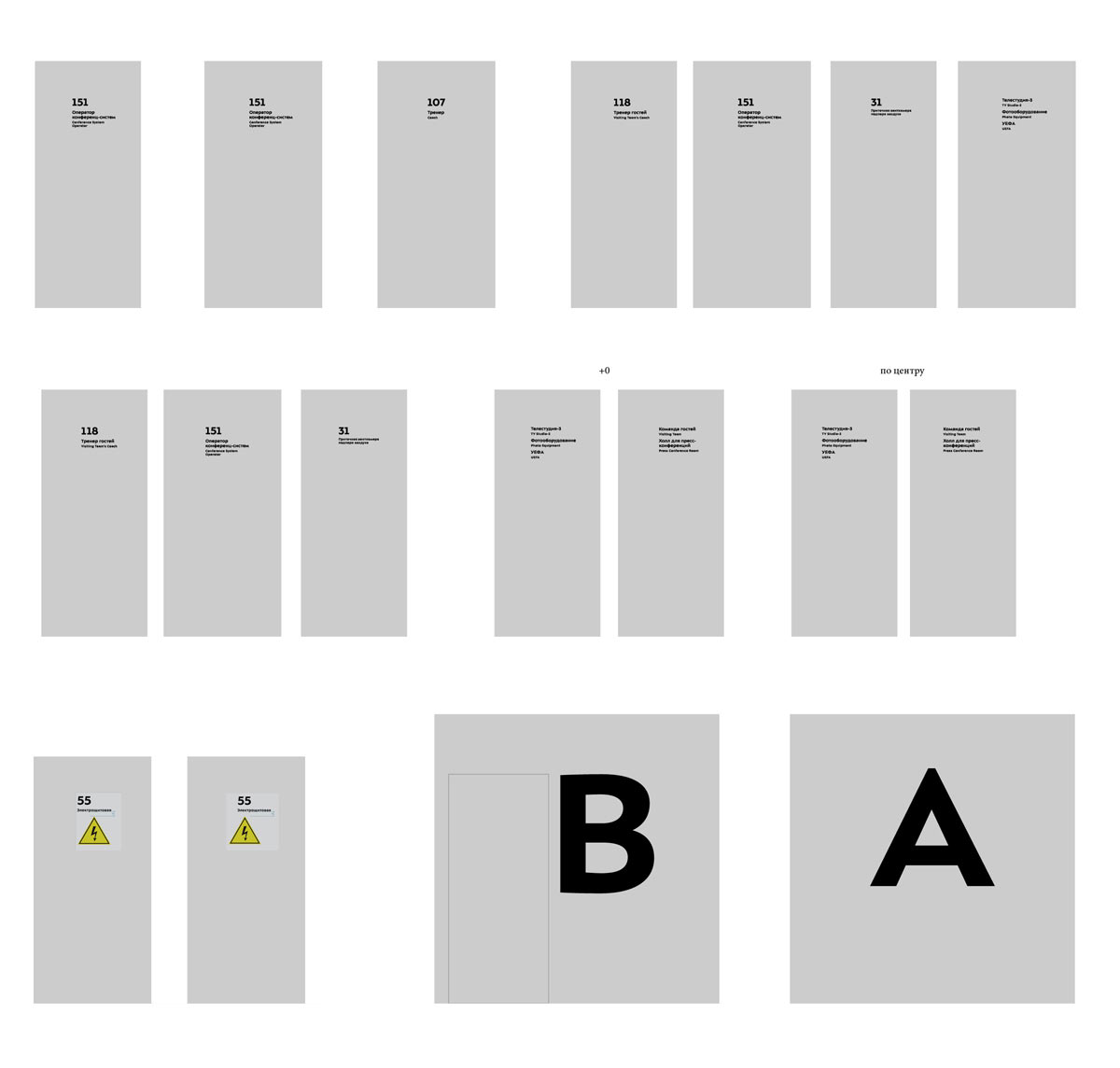
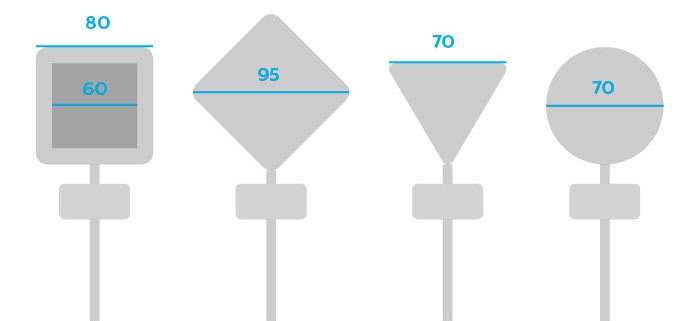
However, once all the signs are typeset, the client starts to express doubts about the pictograms with no text. Are they clear enough for people to understand?
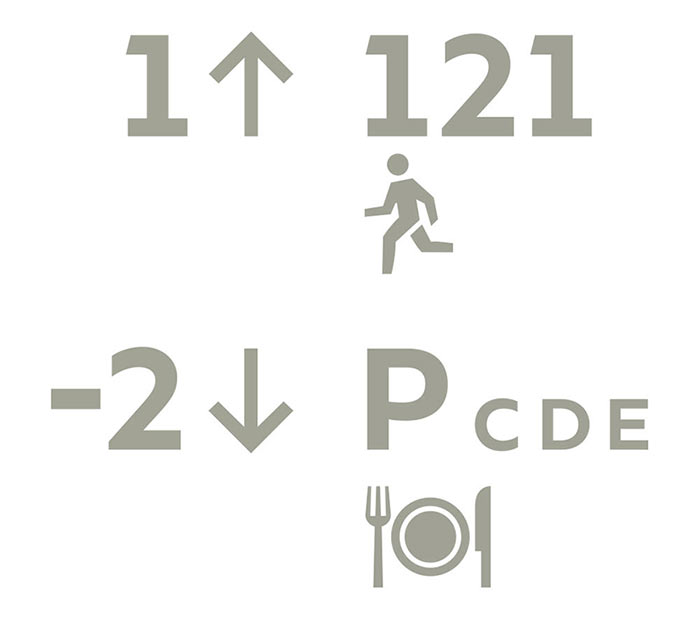
Putting together a presentation to explain why it’s better not to add any text to them.
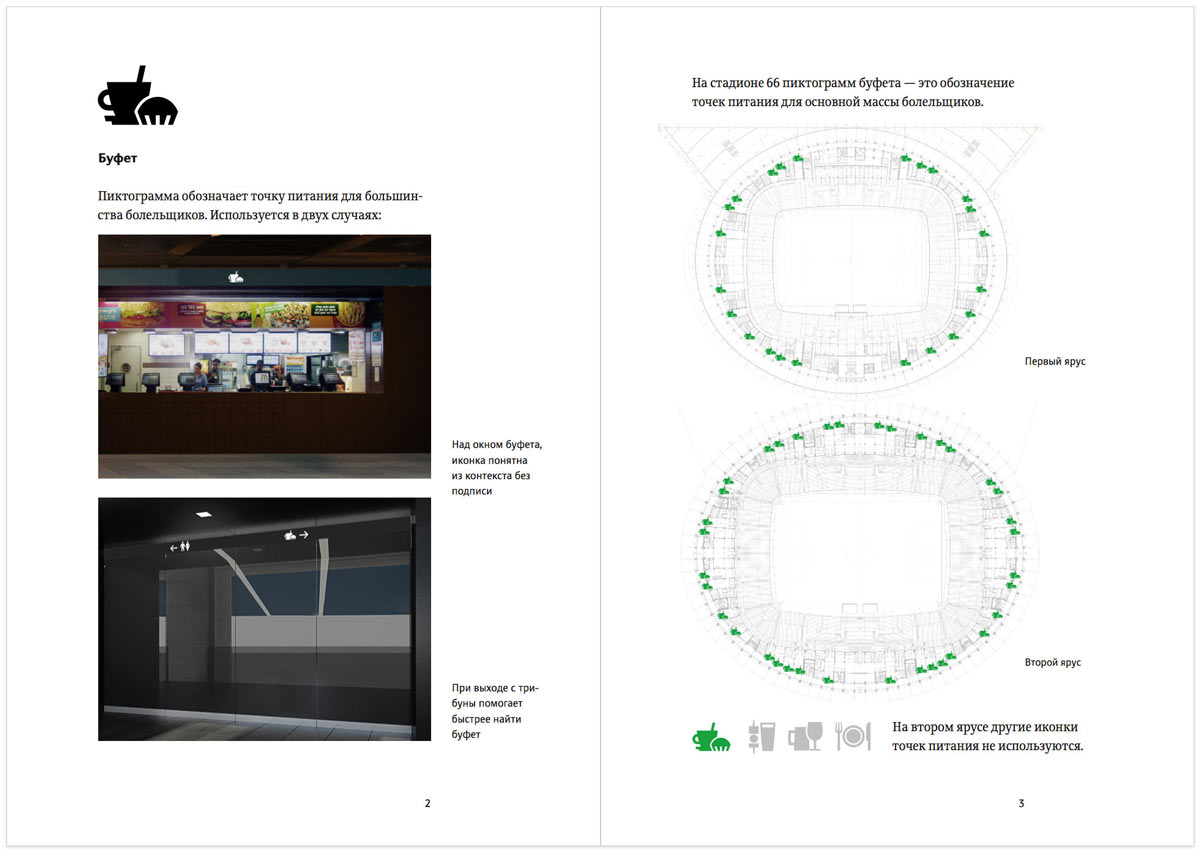
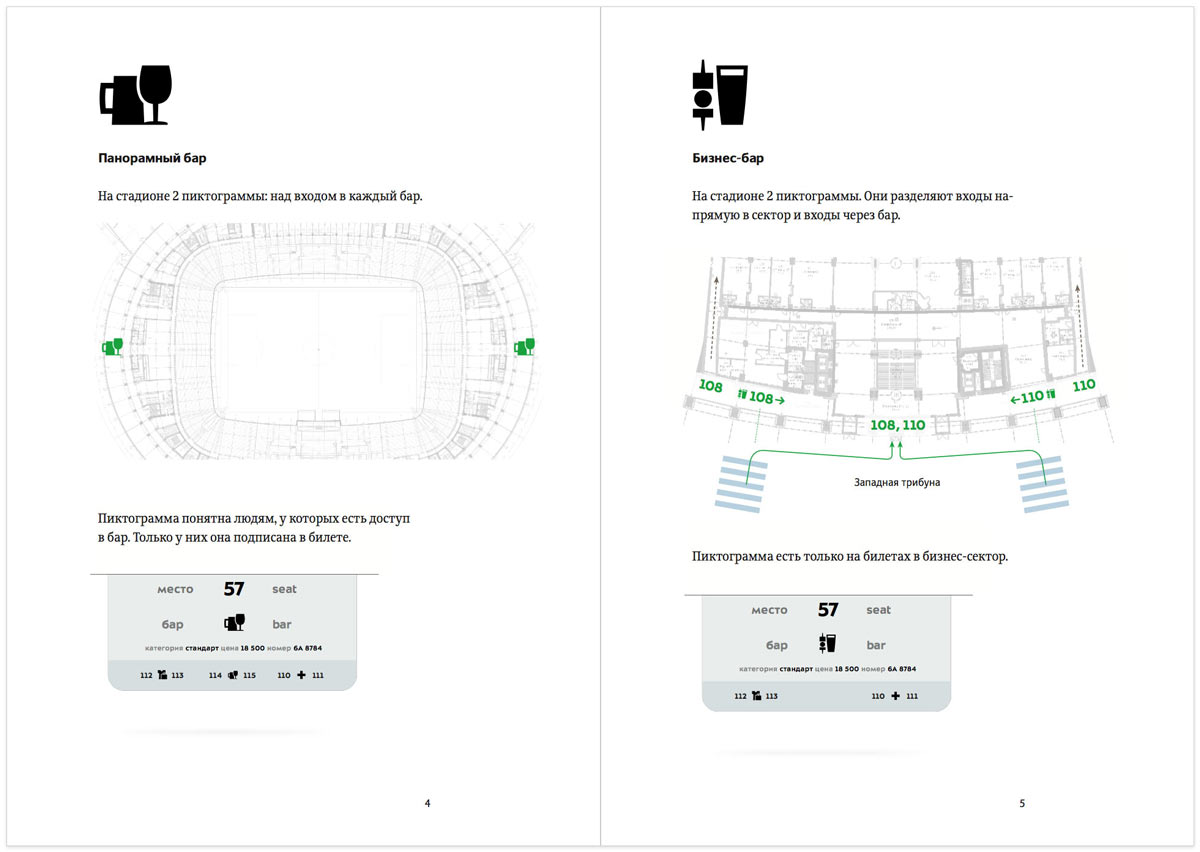
The client is convinced.
The ticket office realizes that their plans with sector numbers differ from what we had suggested. They ask to combine two business sectors on each of the stands into one. Again, preparing a convincing presentation on why it’s best not to.
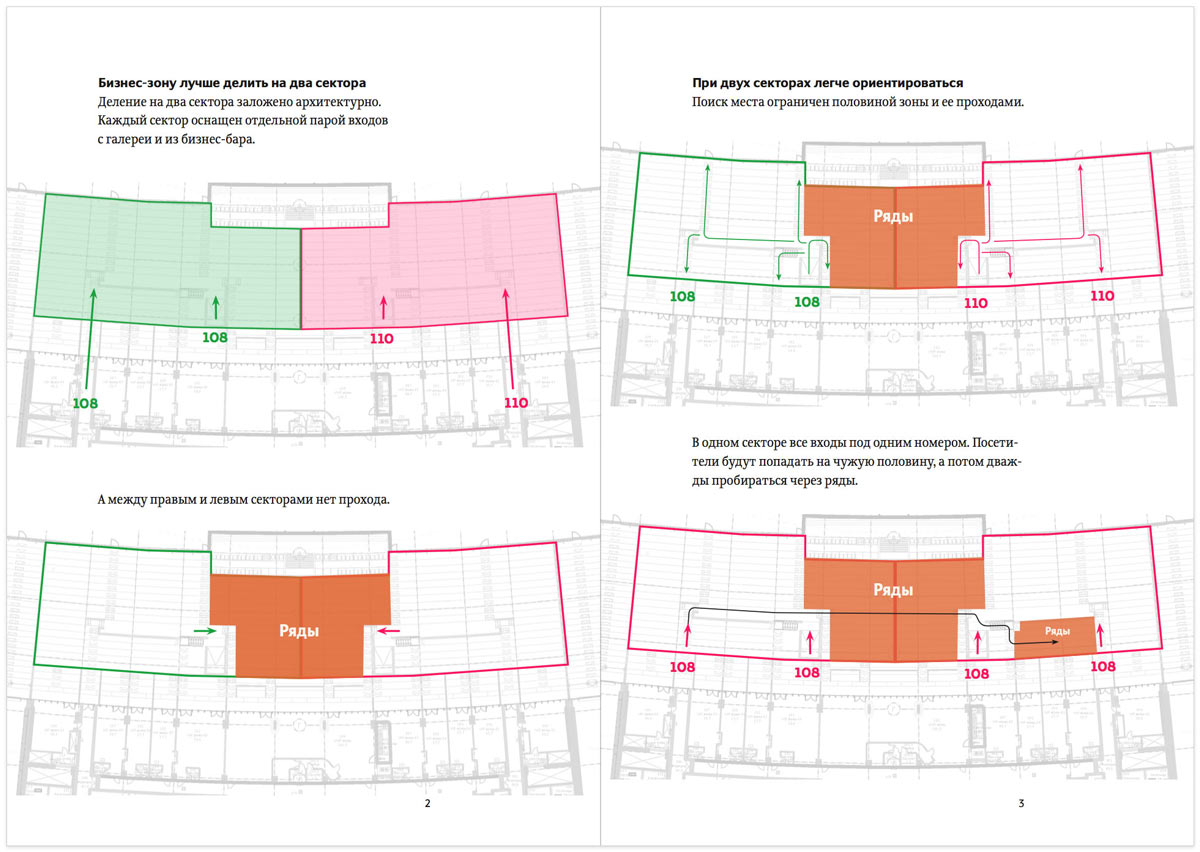
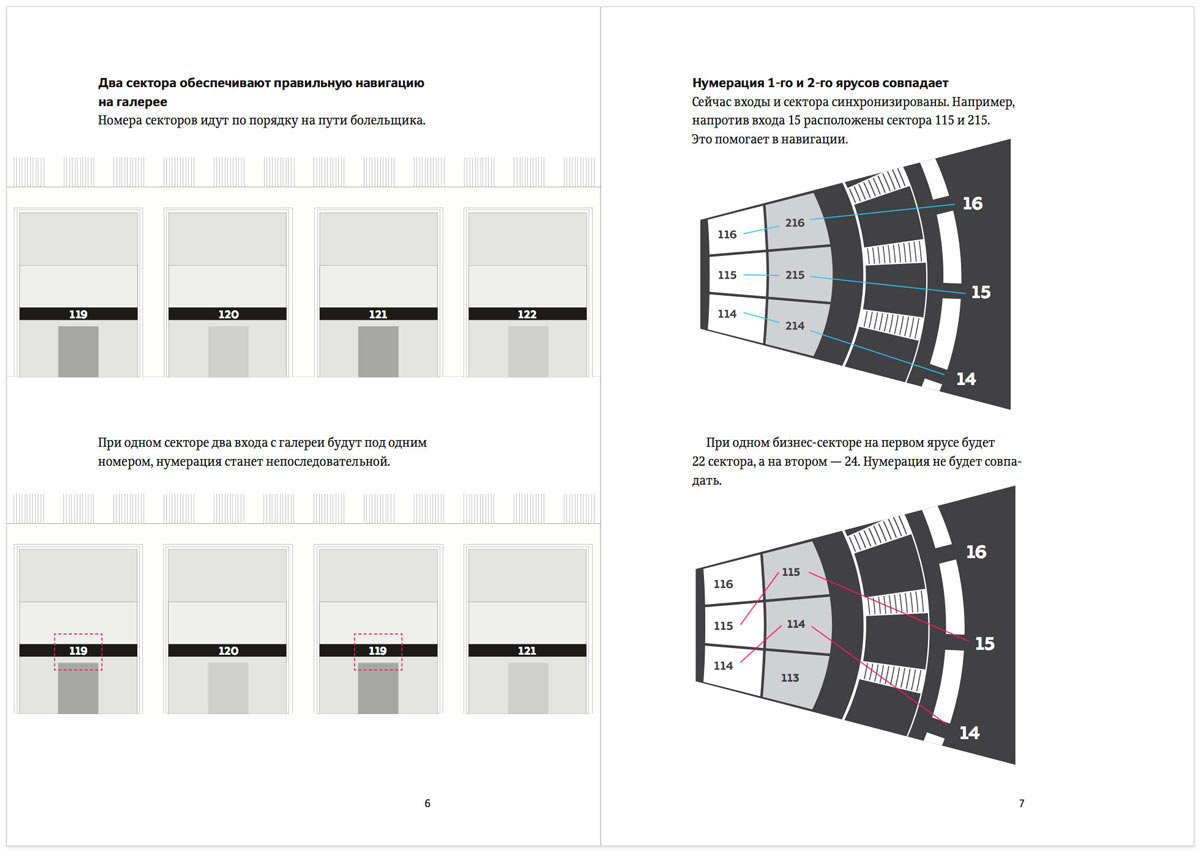
Production of samples
The mock-ups are ready, all issues are resolved, we can start production. Meeting with subcontractors, discussing materials and designs, choosing back-up options.
A week later, looking at first samples.
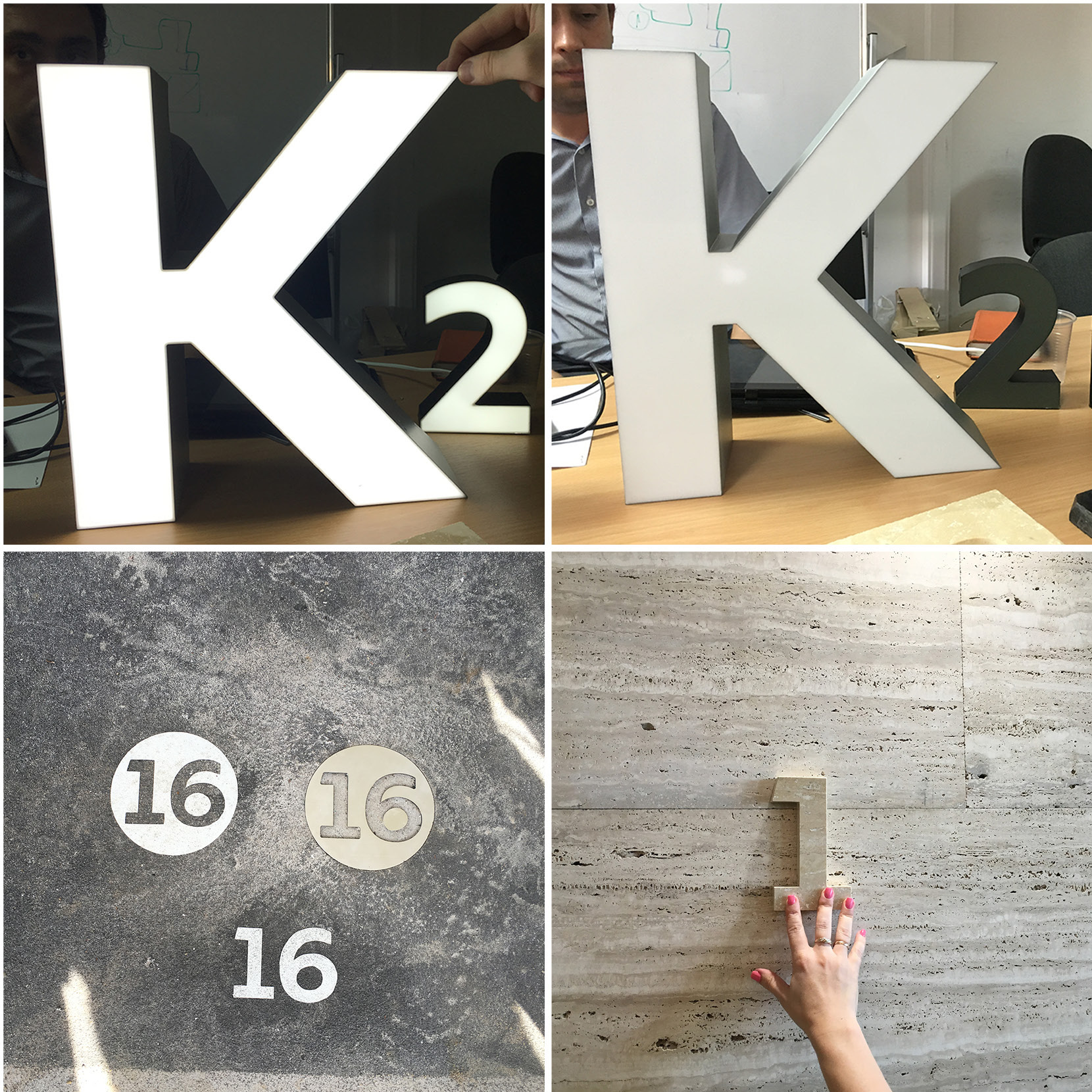
Pointing out the problems: rounded corners, mismatch of the finish, poor quality. Realizing that light boxes won’t work as they would look too alien and flimsy on the stadium’s concrete walls. Replacing them with volumetric signs made of the finishing material.
Meeting again a week later. Explaining what needs improvement.
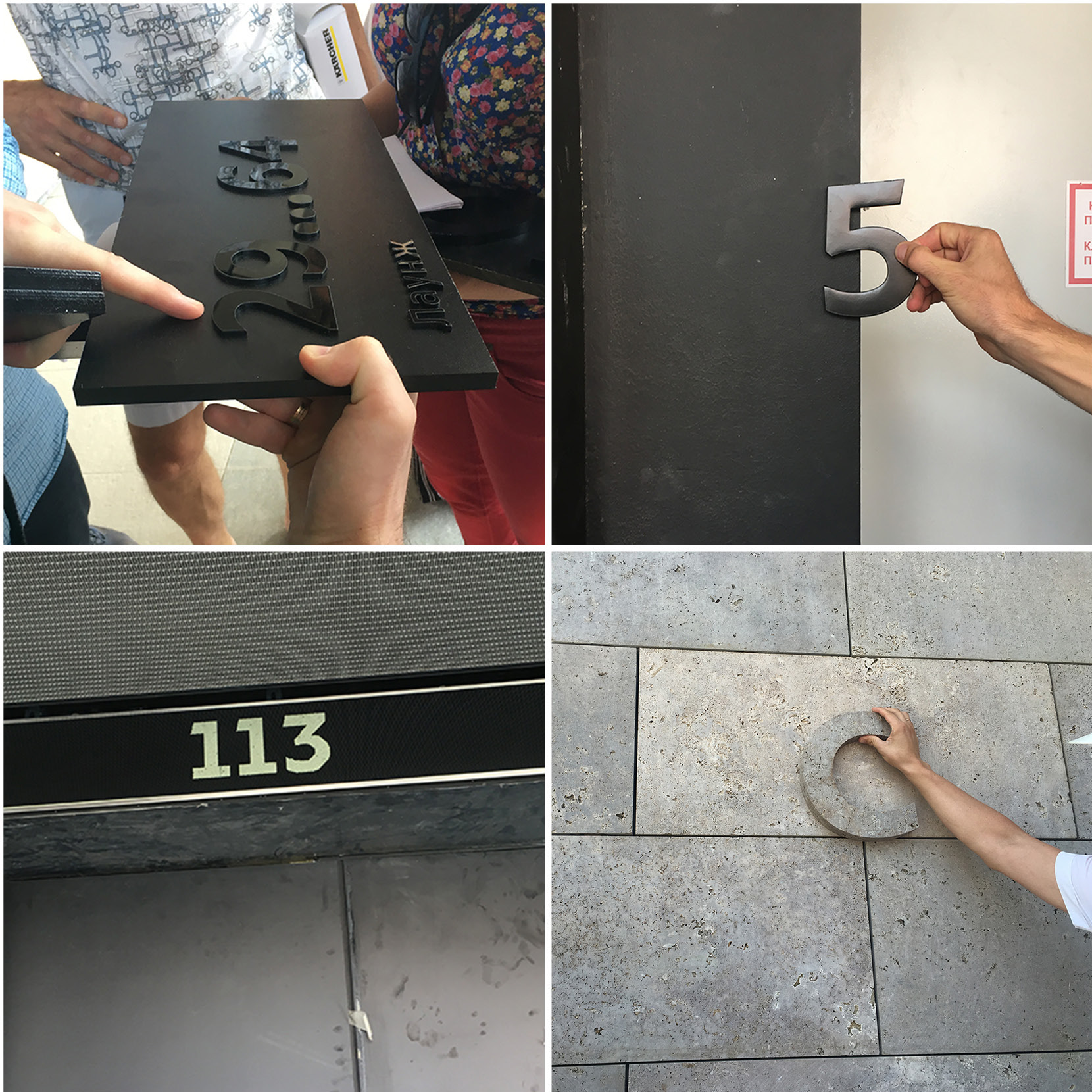
And a week later again.
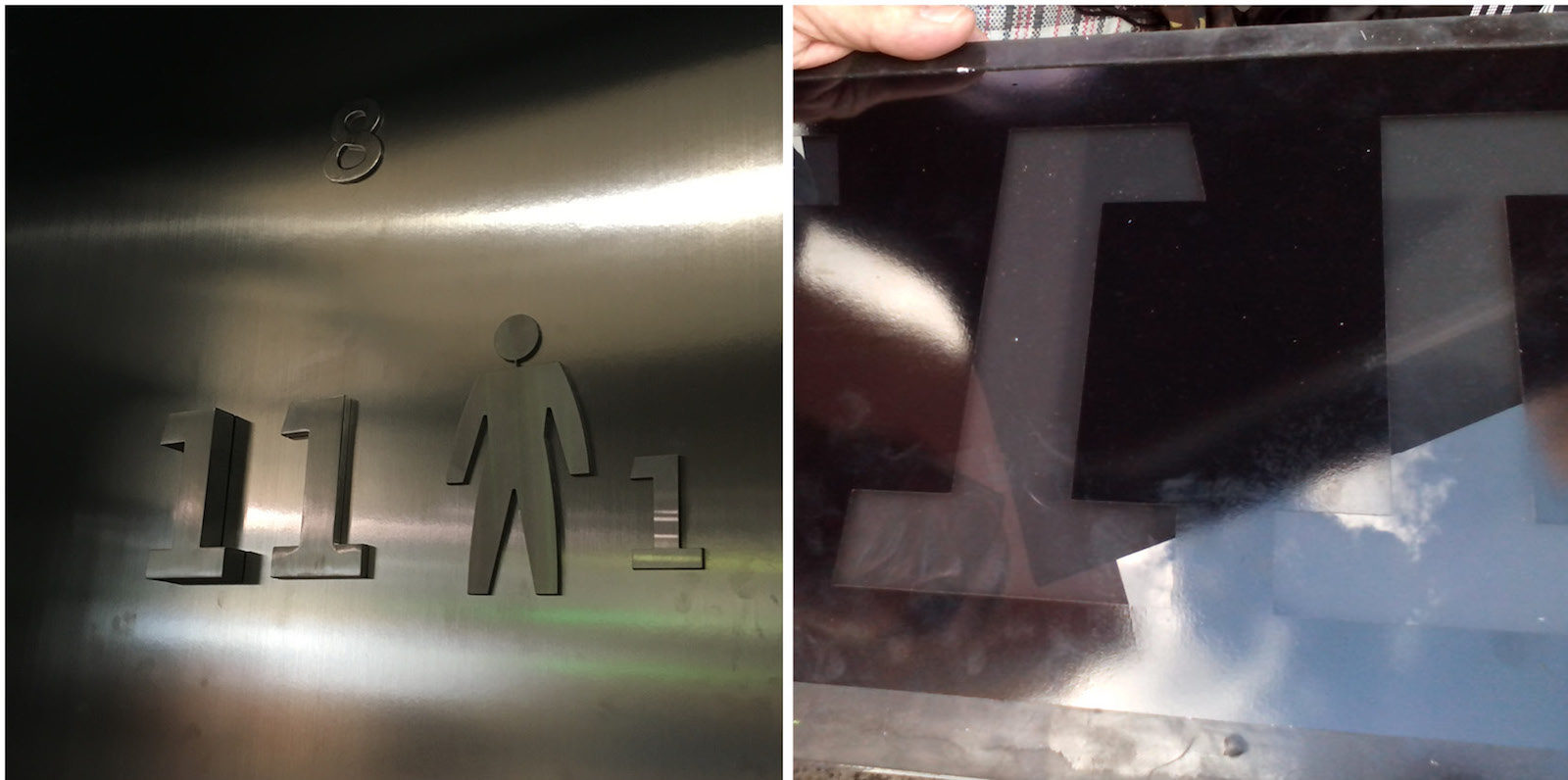
And again.

After a month of testing, it seems the subcontractors have finally developed an understanding of the required result. Most of the samples are ready for production. Giving improvement recommendations for the remaining ones. Special attention is given to light boxes.
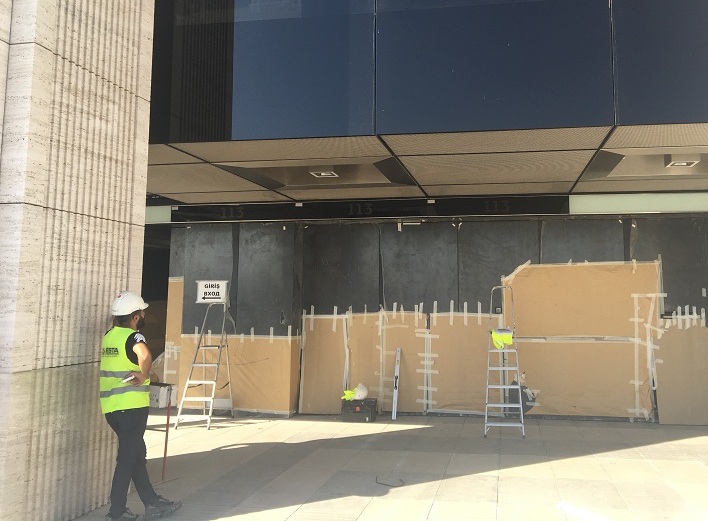
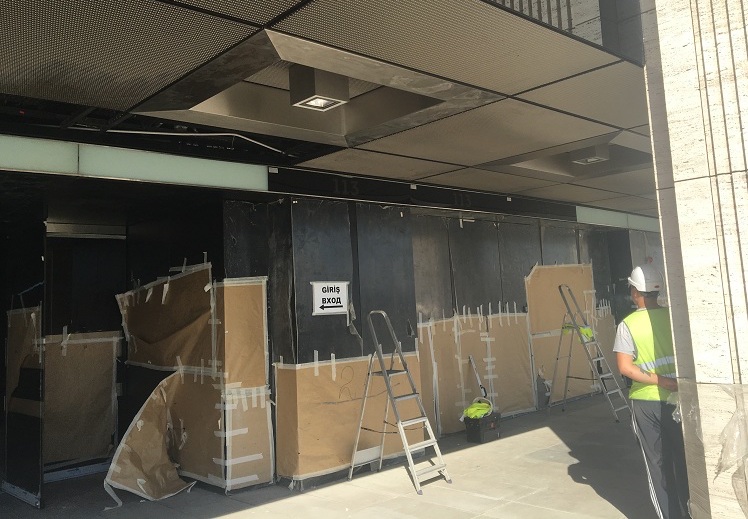
Oops. The window film looks nice when used inside and not too bad outside, but the glow effect is absolutely invisible under direct sunlight. And since Russian Premier League matches are held during the day, we urgently need to find another solution.
Deciding to perforate the signs instead. When seen from a distance, the holes will blend together to form a dark background or a light one when the light is turned on. Preparing five test mock-ups with holes ranging from 0,1 to 2 mm.
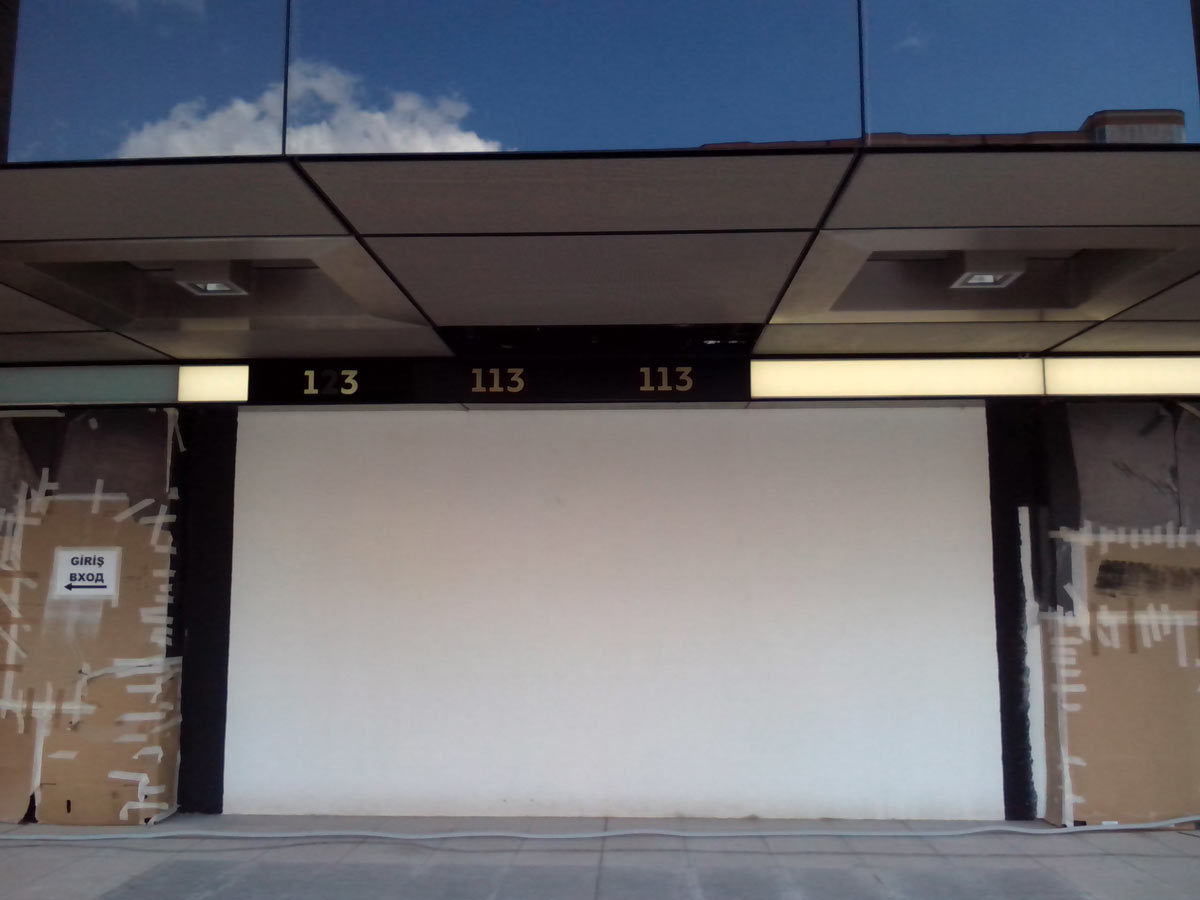
The subcontractor brings back only the 2 mm ones as their mill is unable to cut anything less then that. Even then, production is going to take over 2 months. The client is getting anxious and wants to resort to simple signs that at least can be seen. It seems, the idea with hidden navigation is about to collapse. But we find a solution.
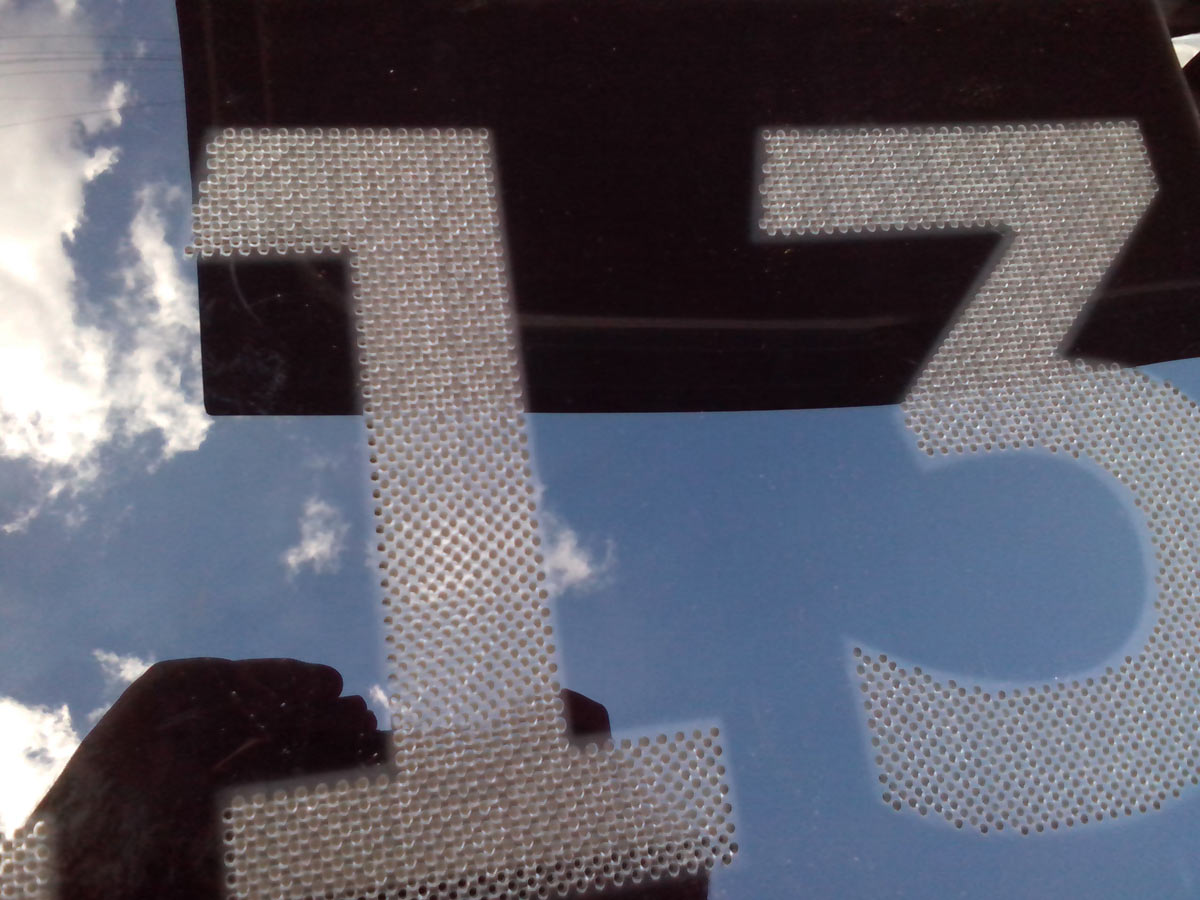
We don’t necessarily need to perforate the glass. Instead, we can print the holes: no restrictions on the hole size, and we can get it done much, much quicker. Holding some more light, color and gloss/matte tests in different times of day and weather conditions.
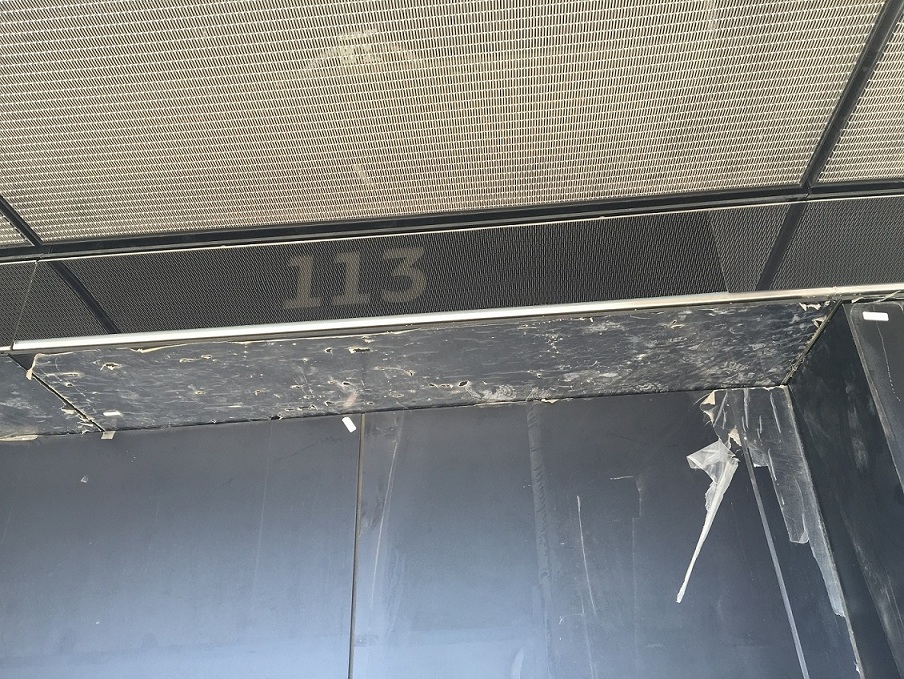
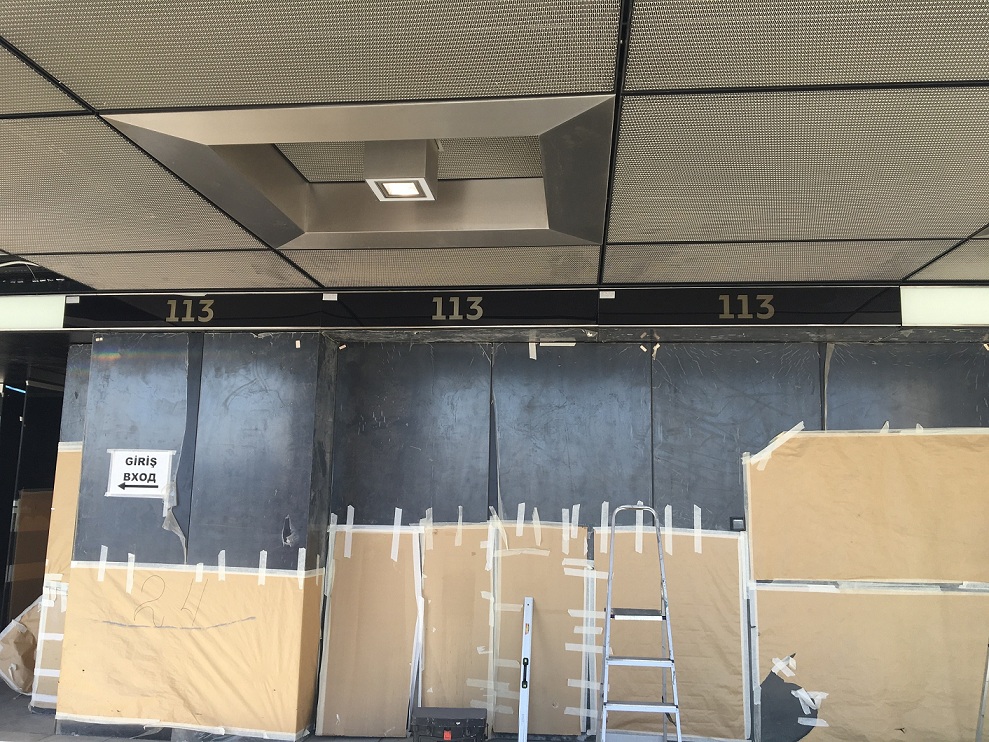
As well as a dozen experiments on choosing perforation that will be properly printed.
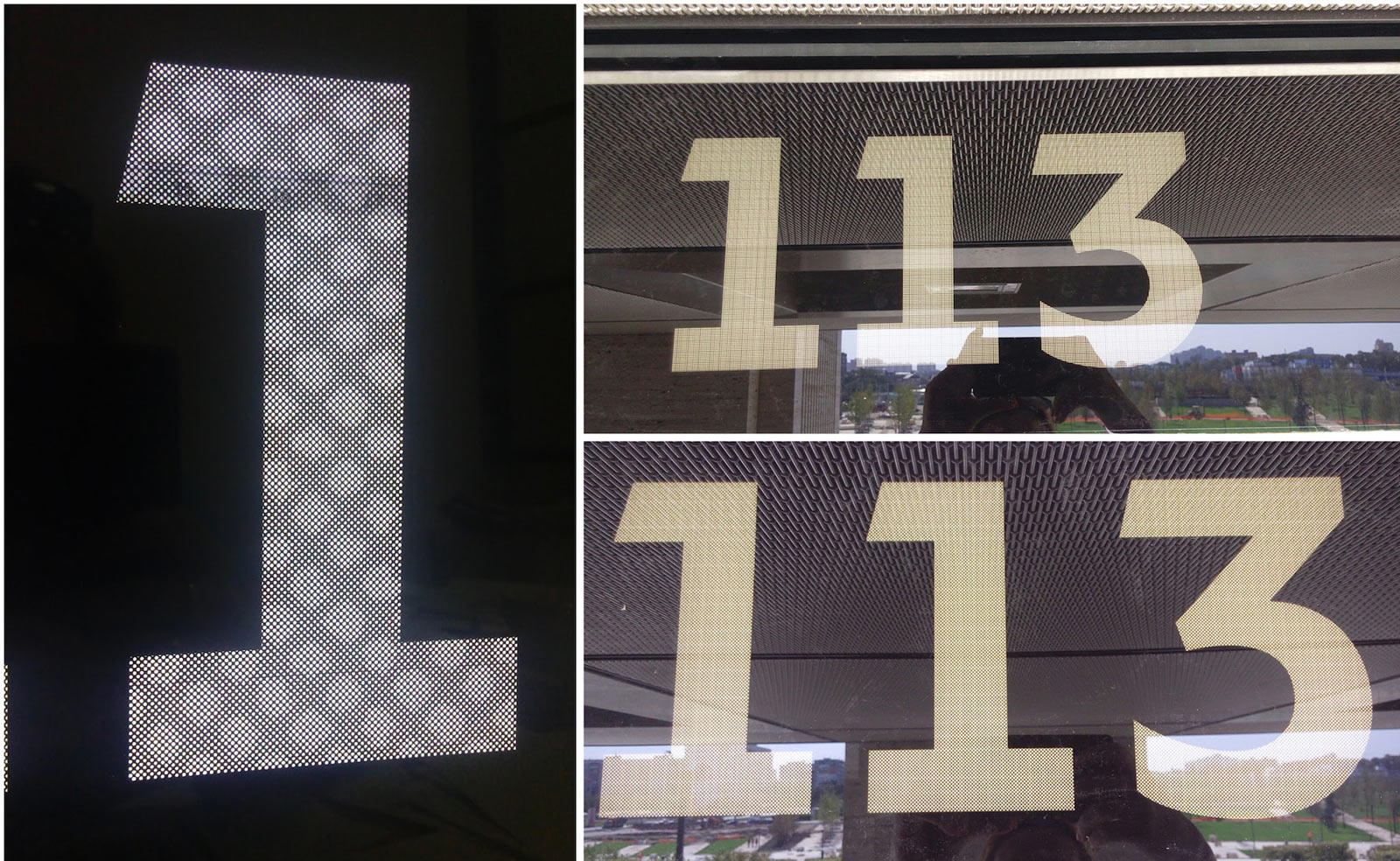
And done!
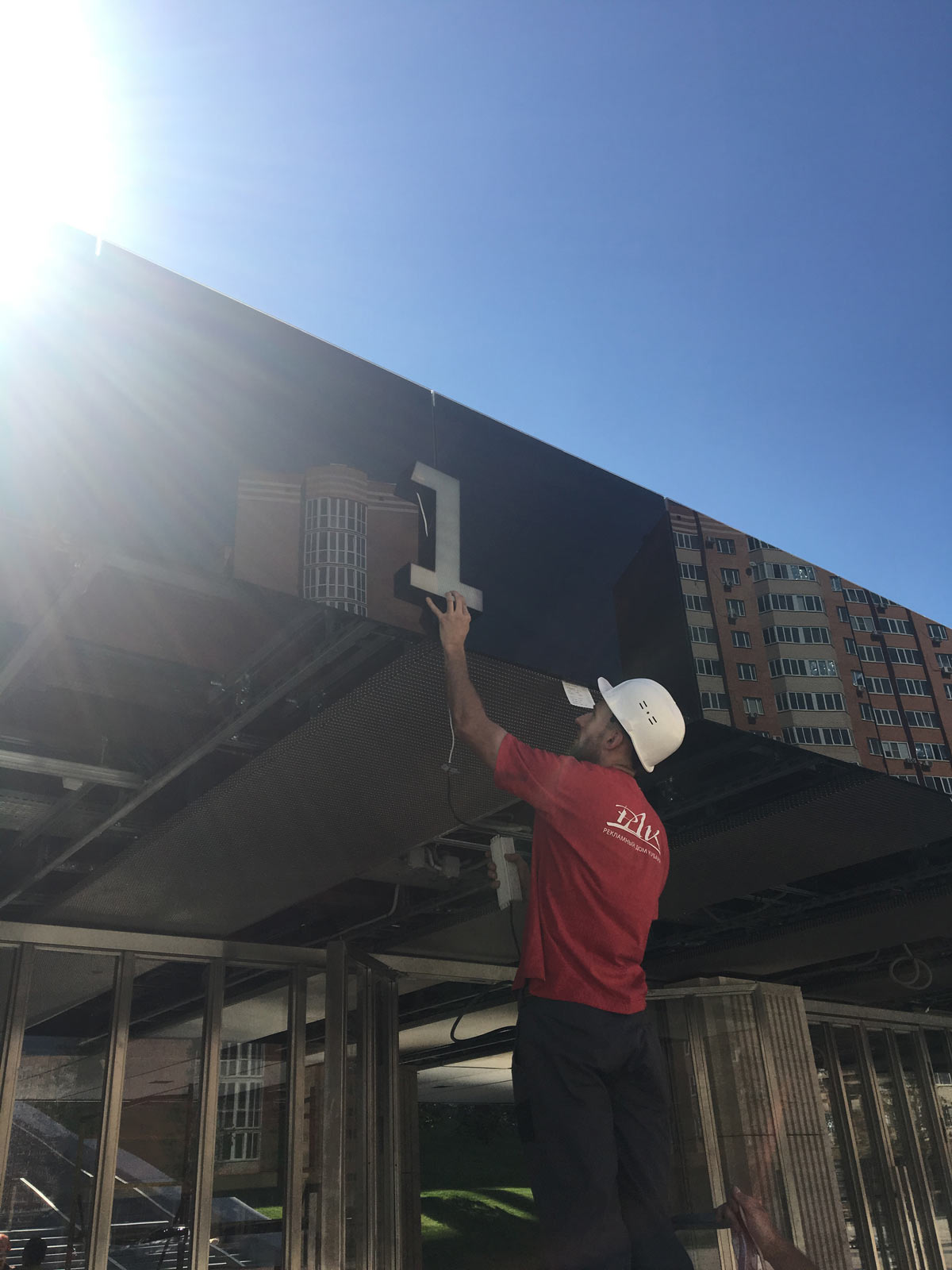
However, the light boxes in the security check area can’t be saved even with perforation. Replacing them with stone signs.
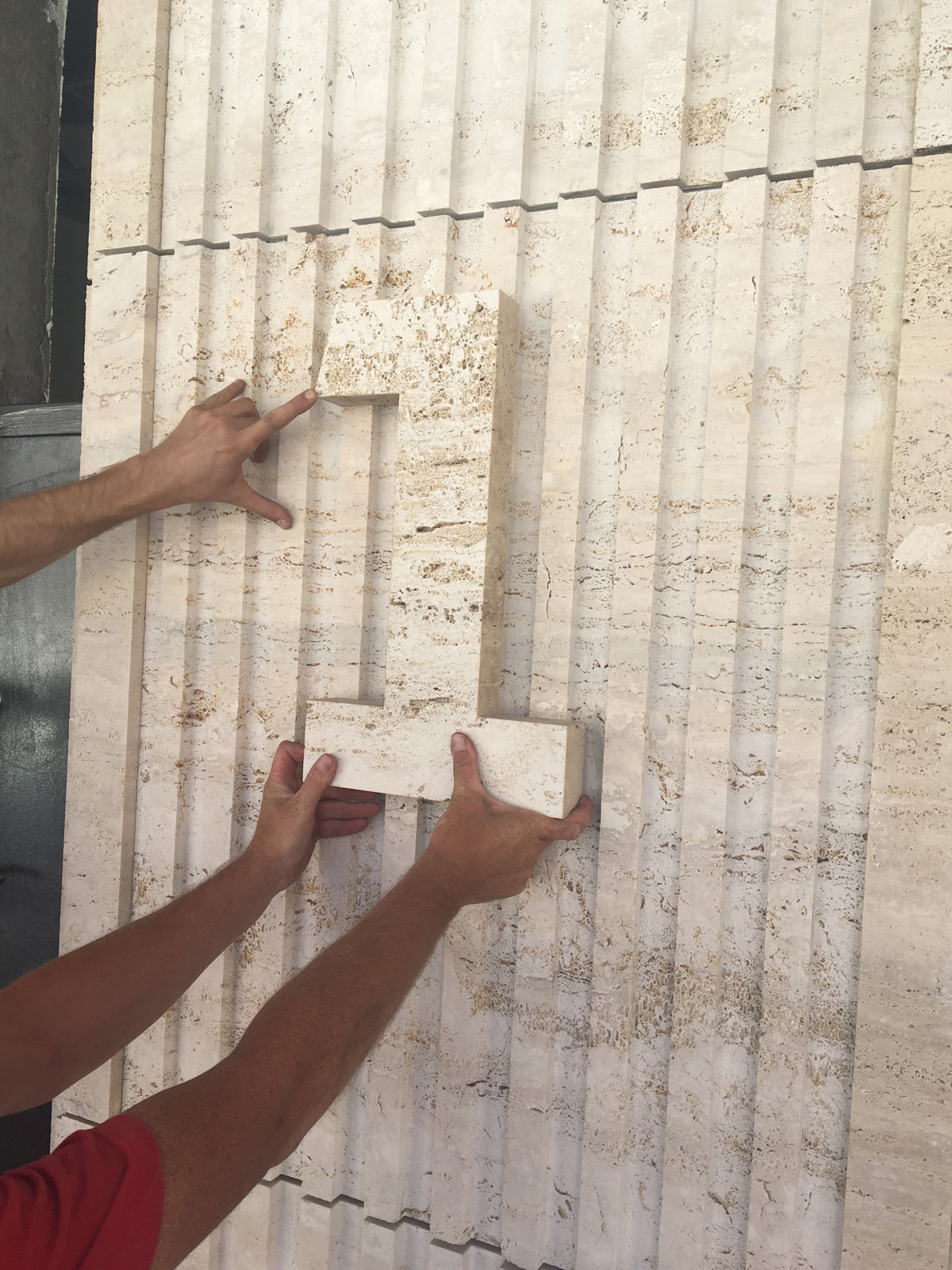
While the signs are being produced, we are busy writing the installation rules, typesetting documents for handover and cleaning up a bunch of small things.
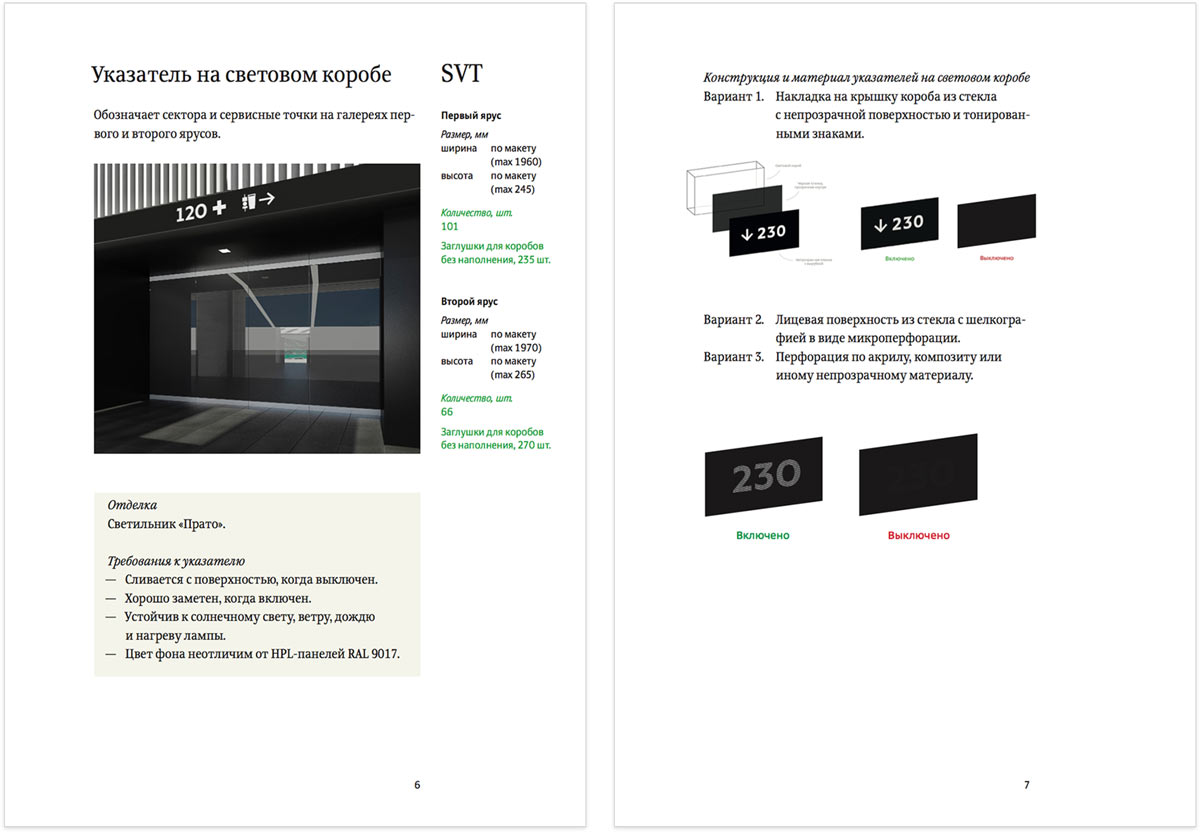
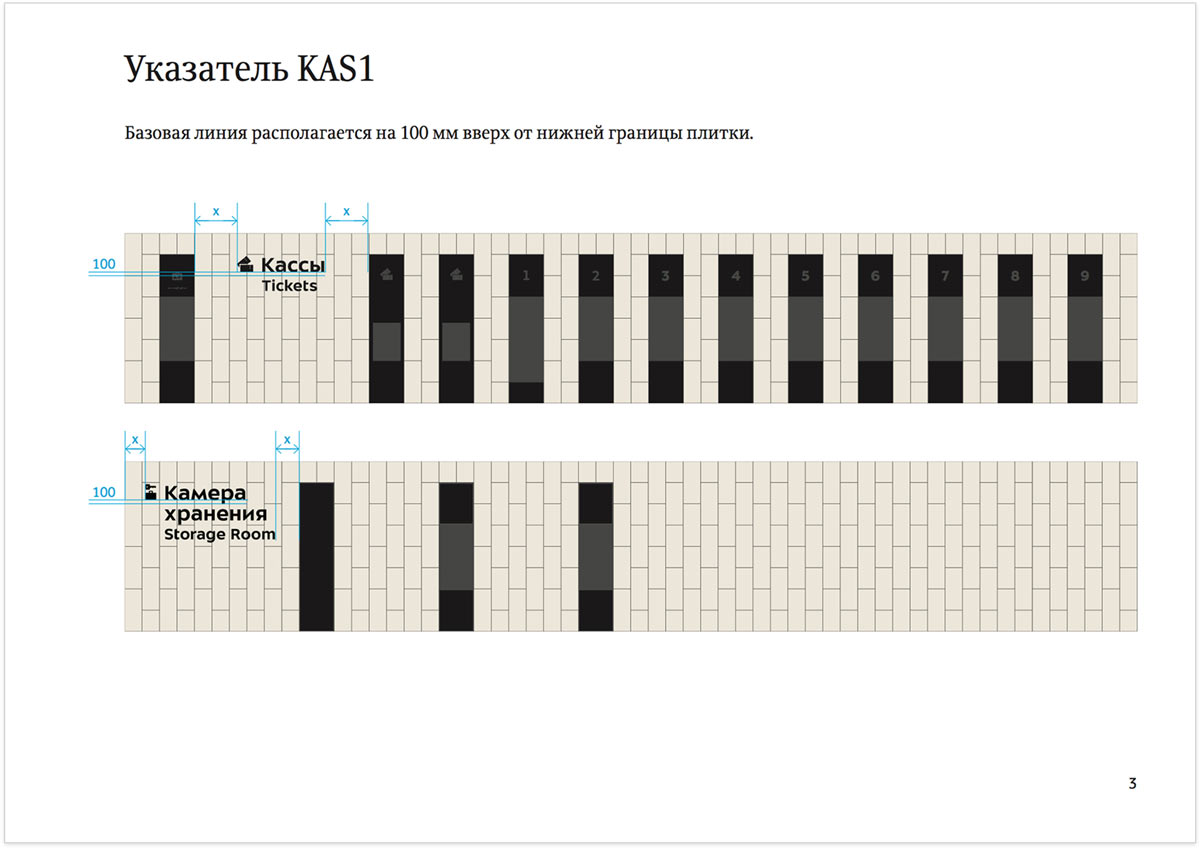
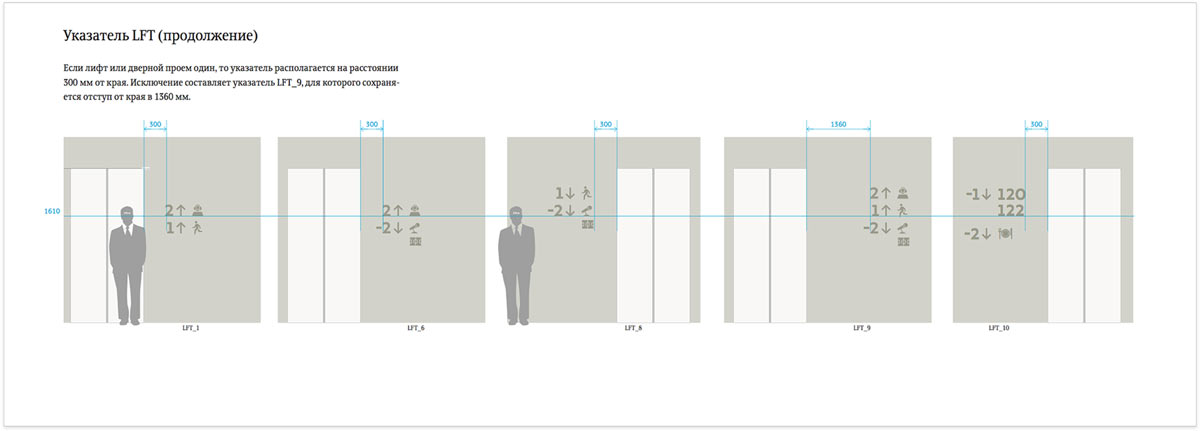
Helping put everything in place during the installation.
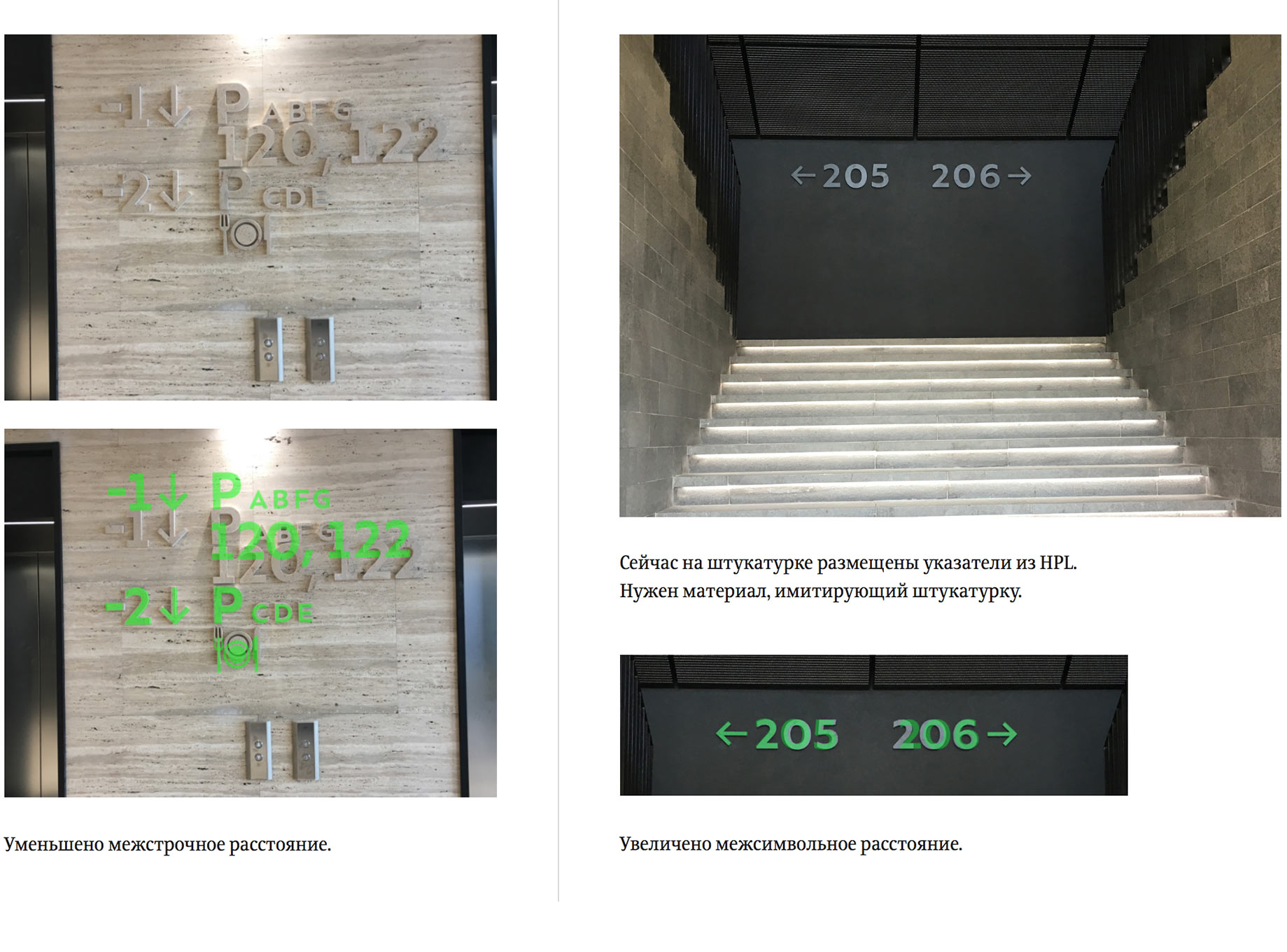
And with our heart pounding, going to see the inaugural match at the crowded stadium.
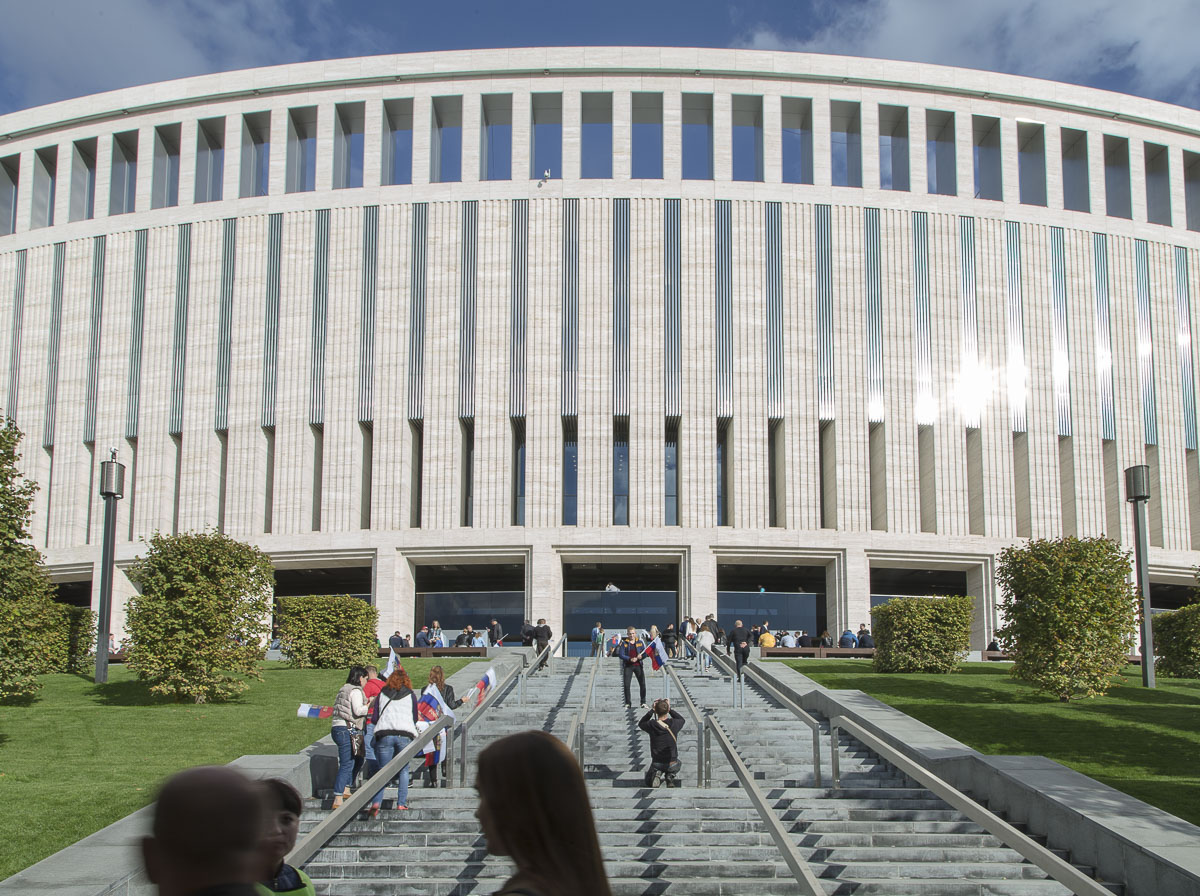
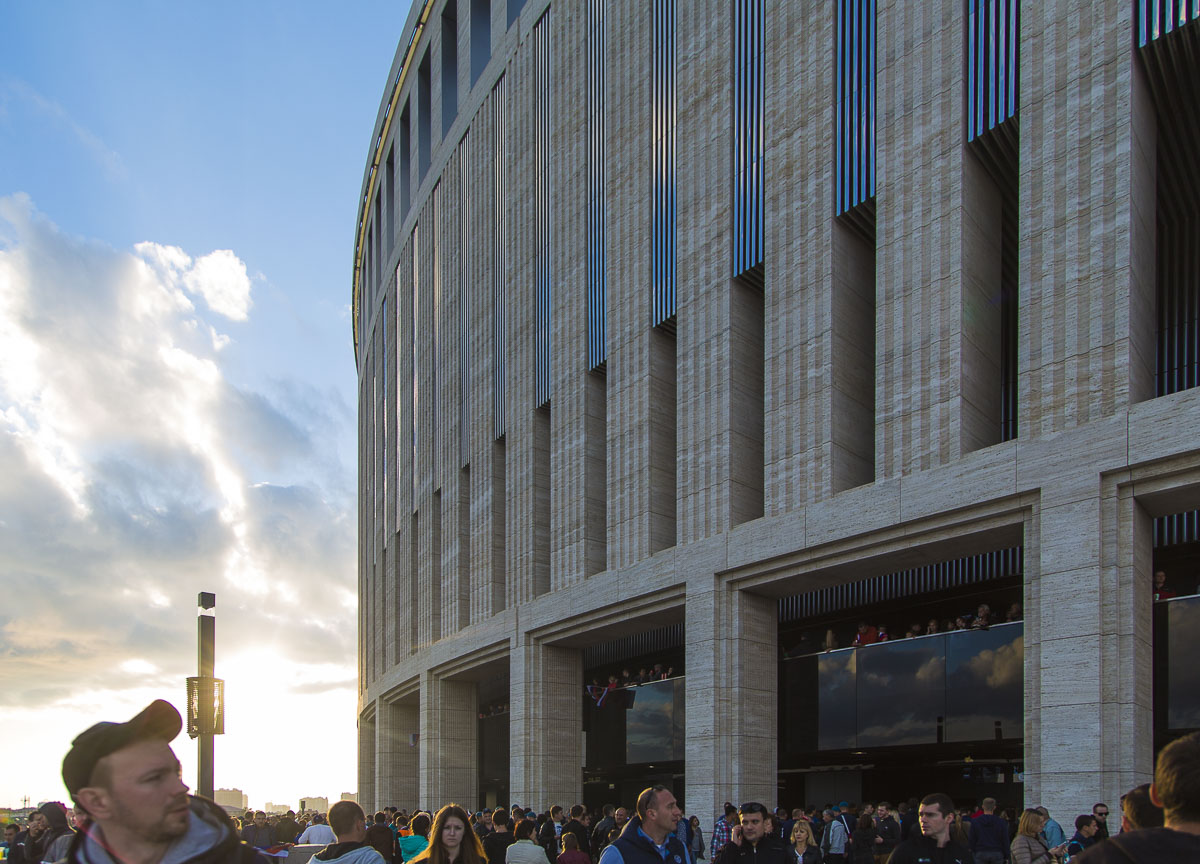
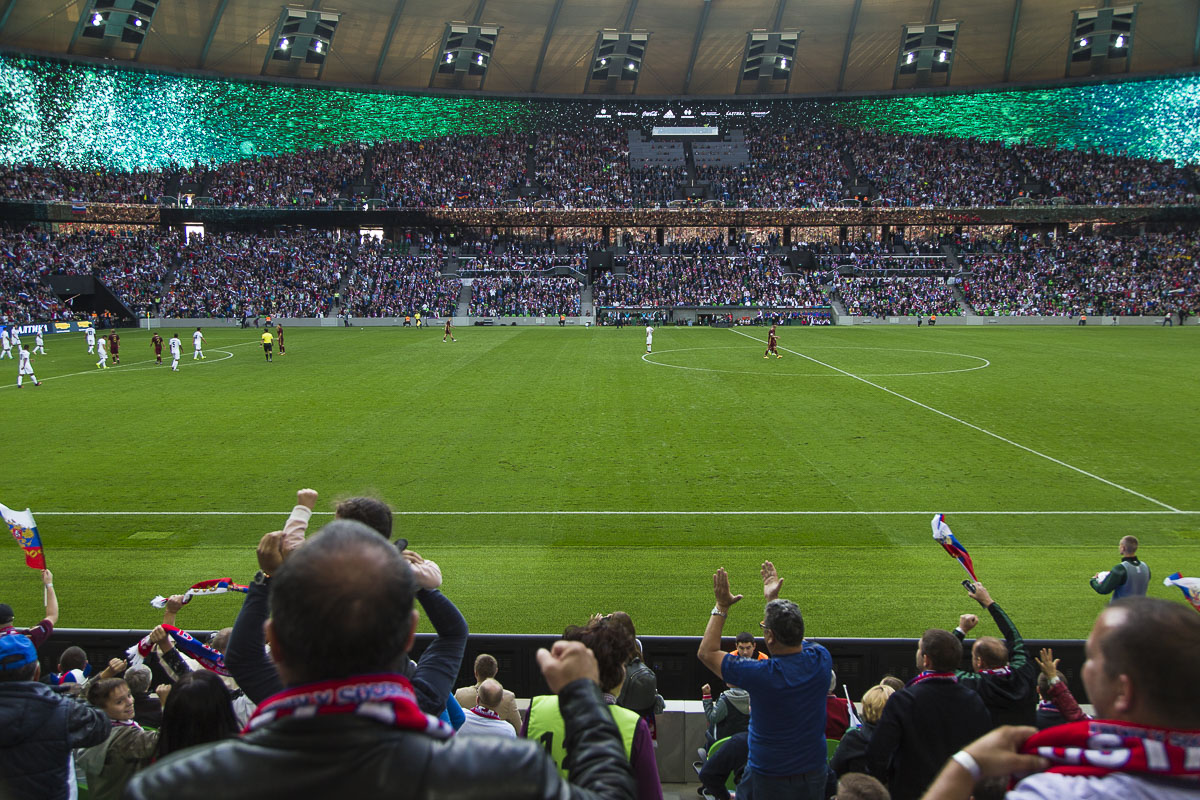
Hooray! It seems all of the 35,000 spectators are where they should be.
